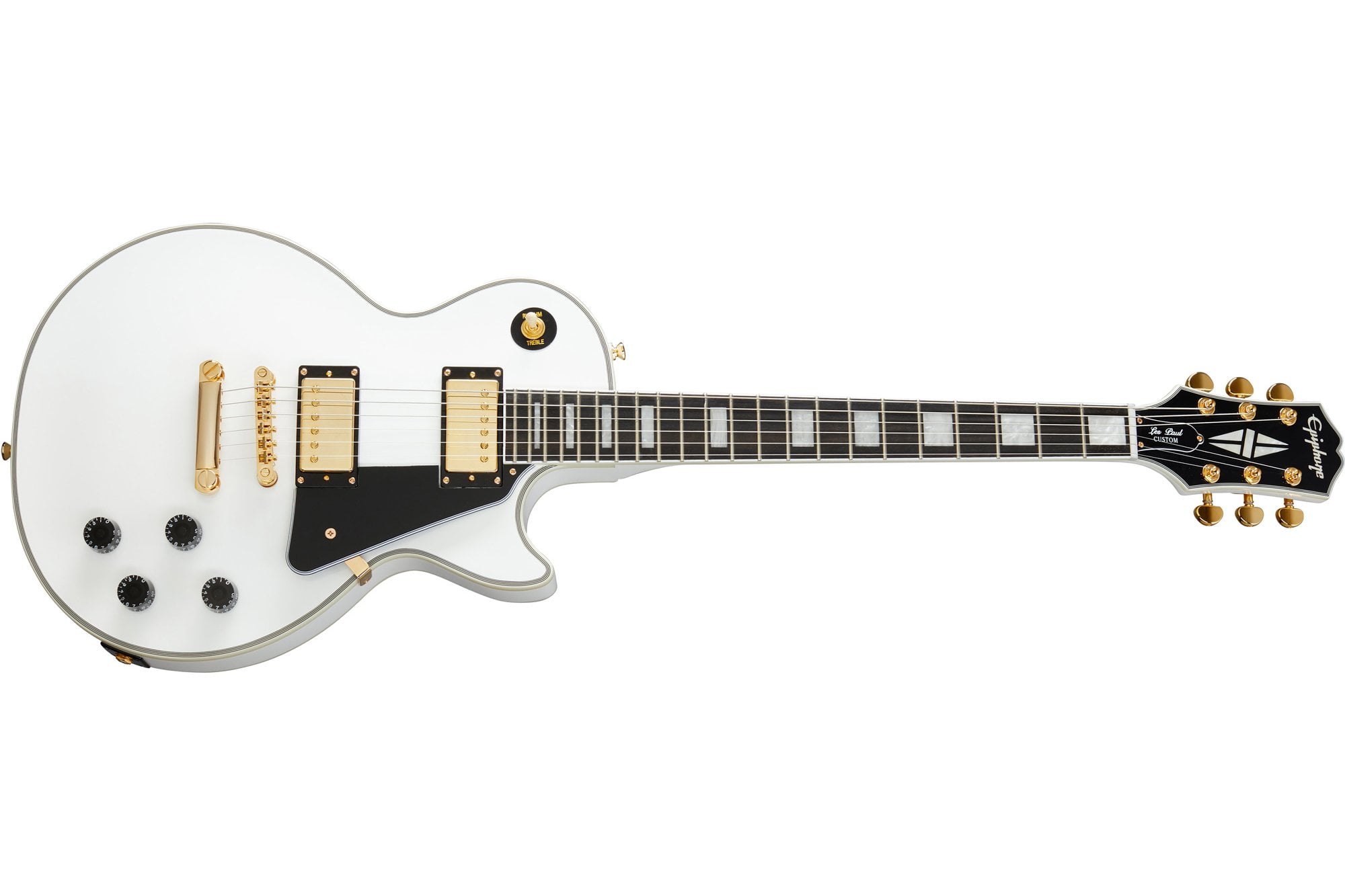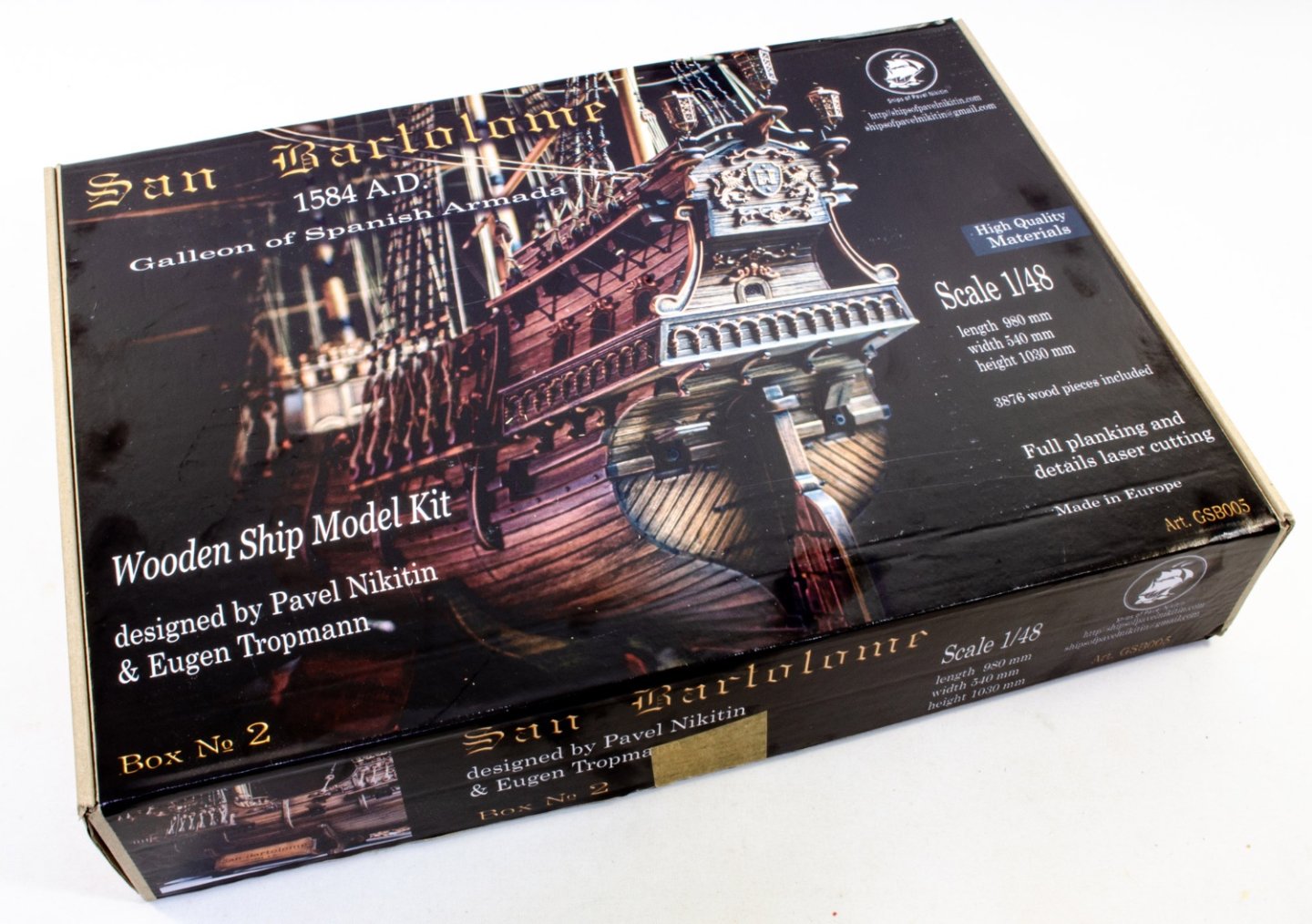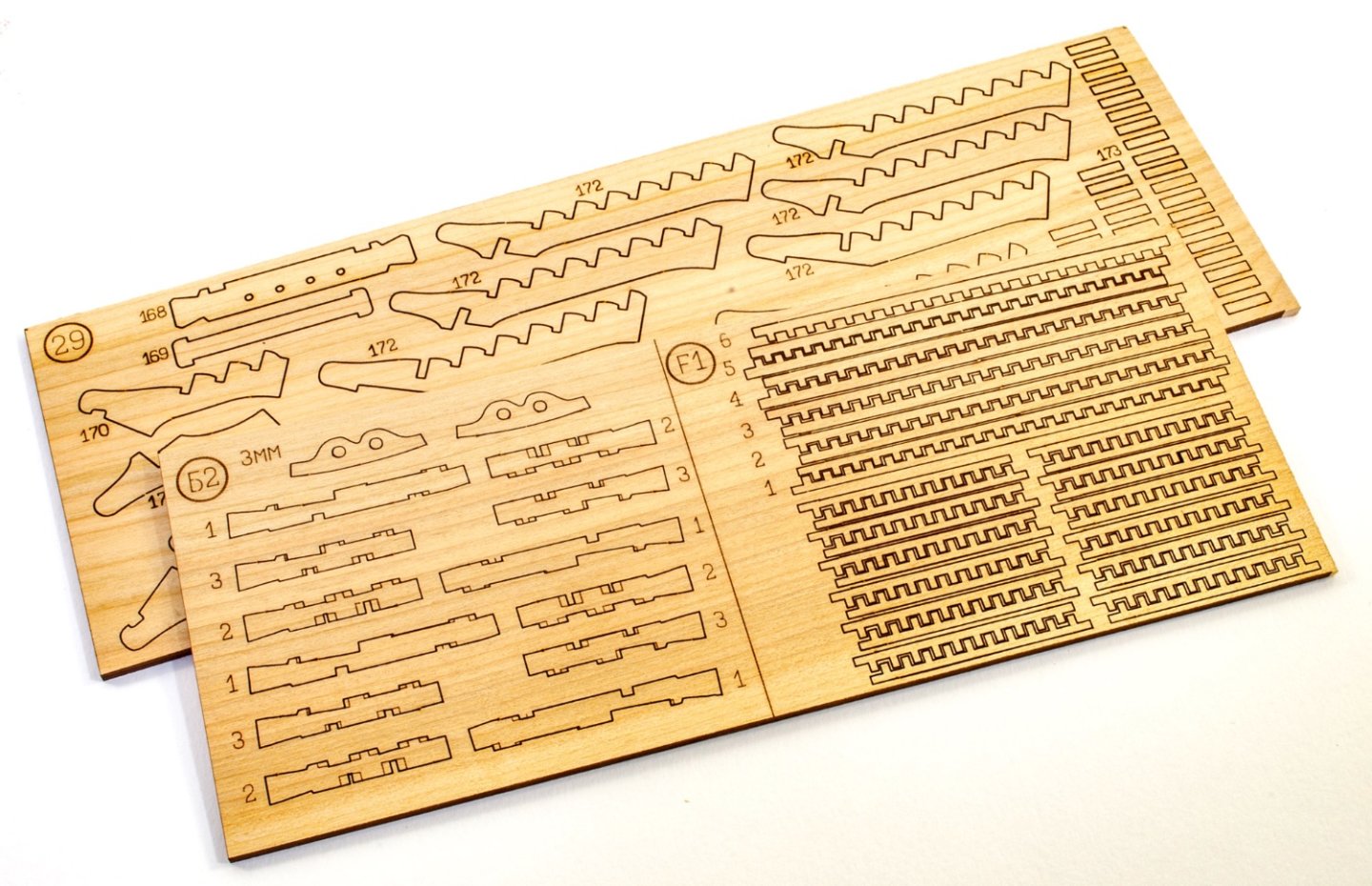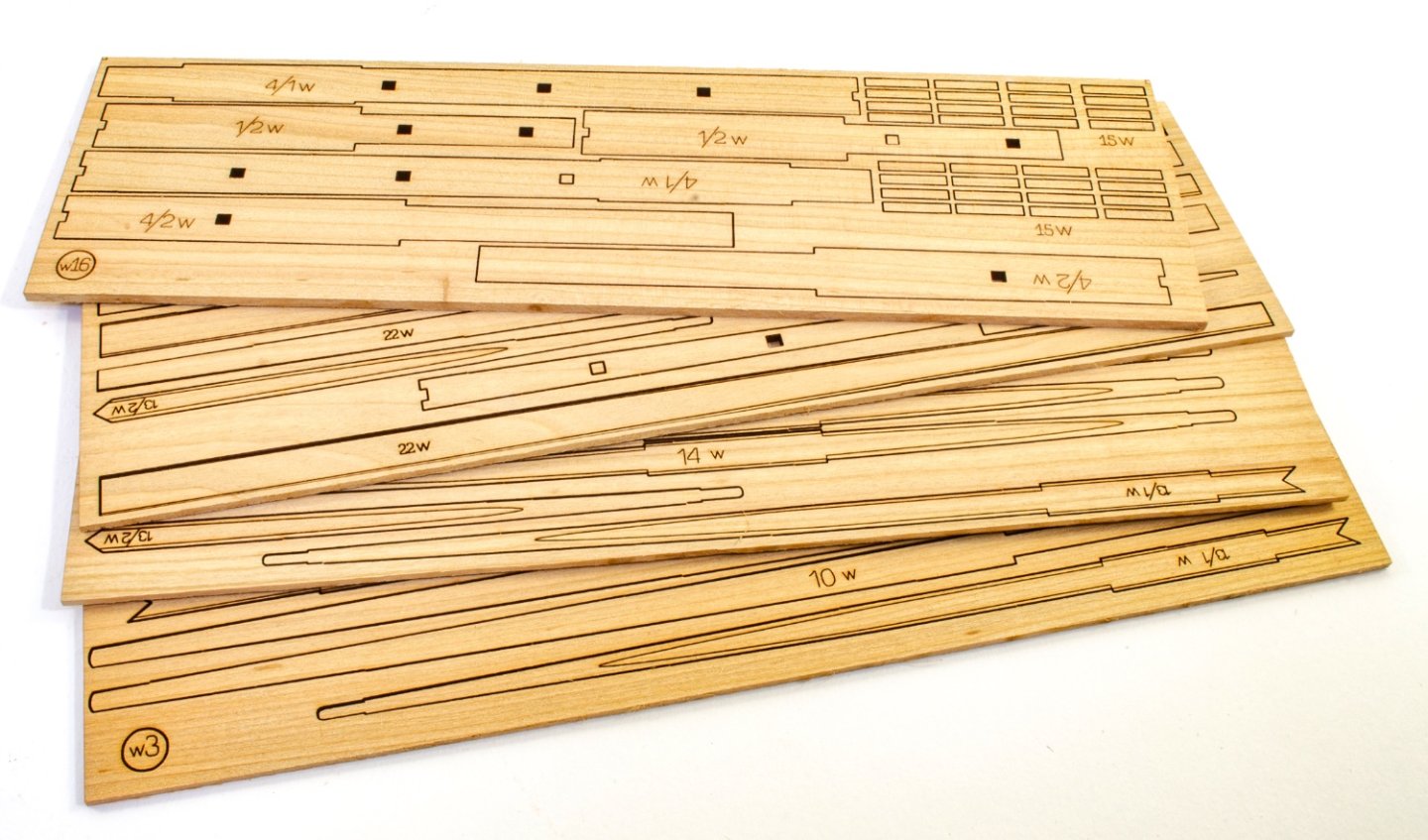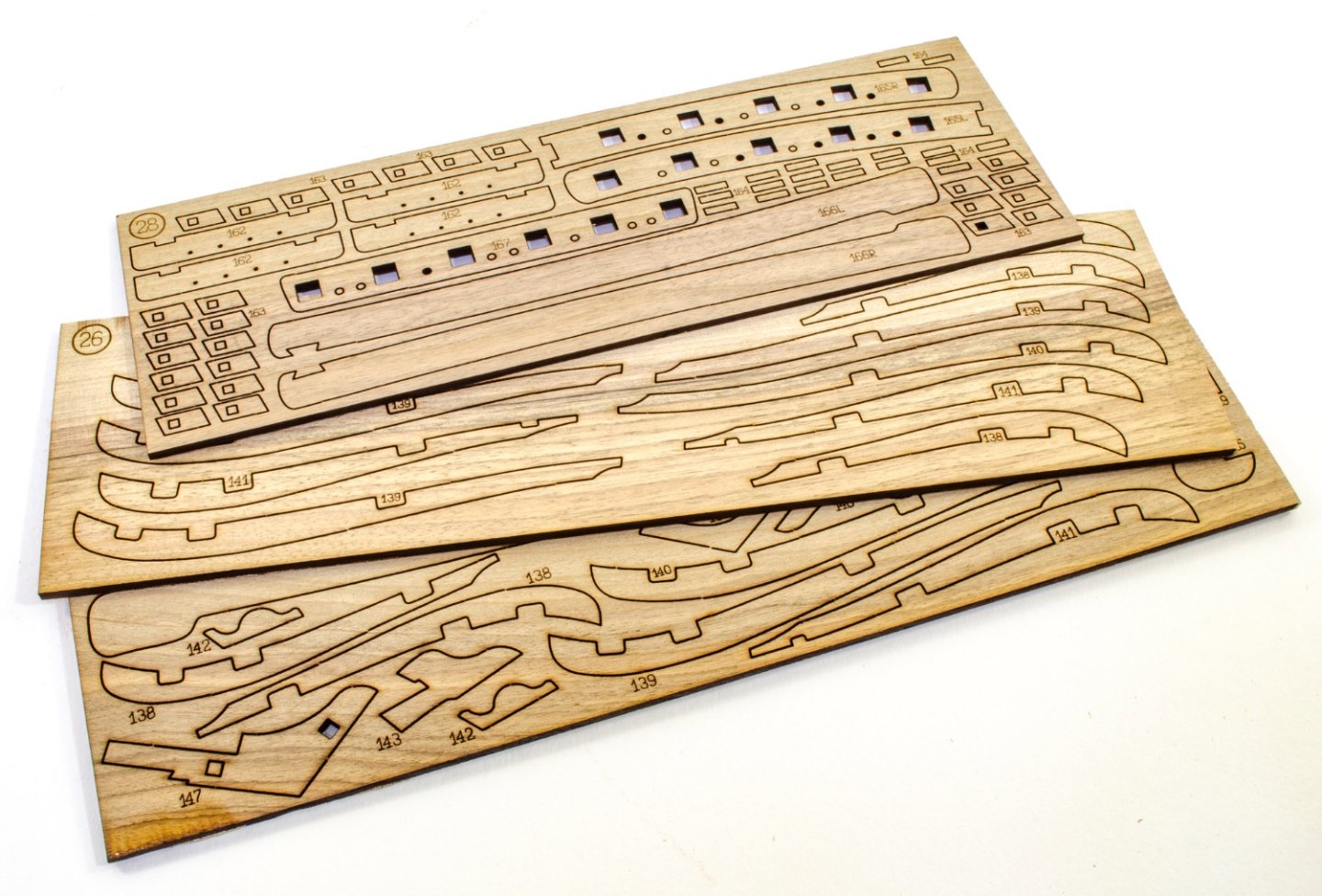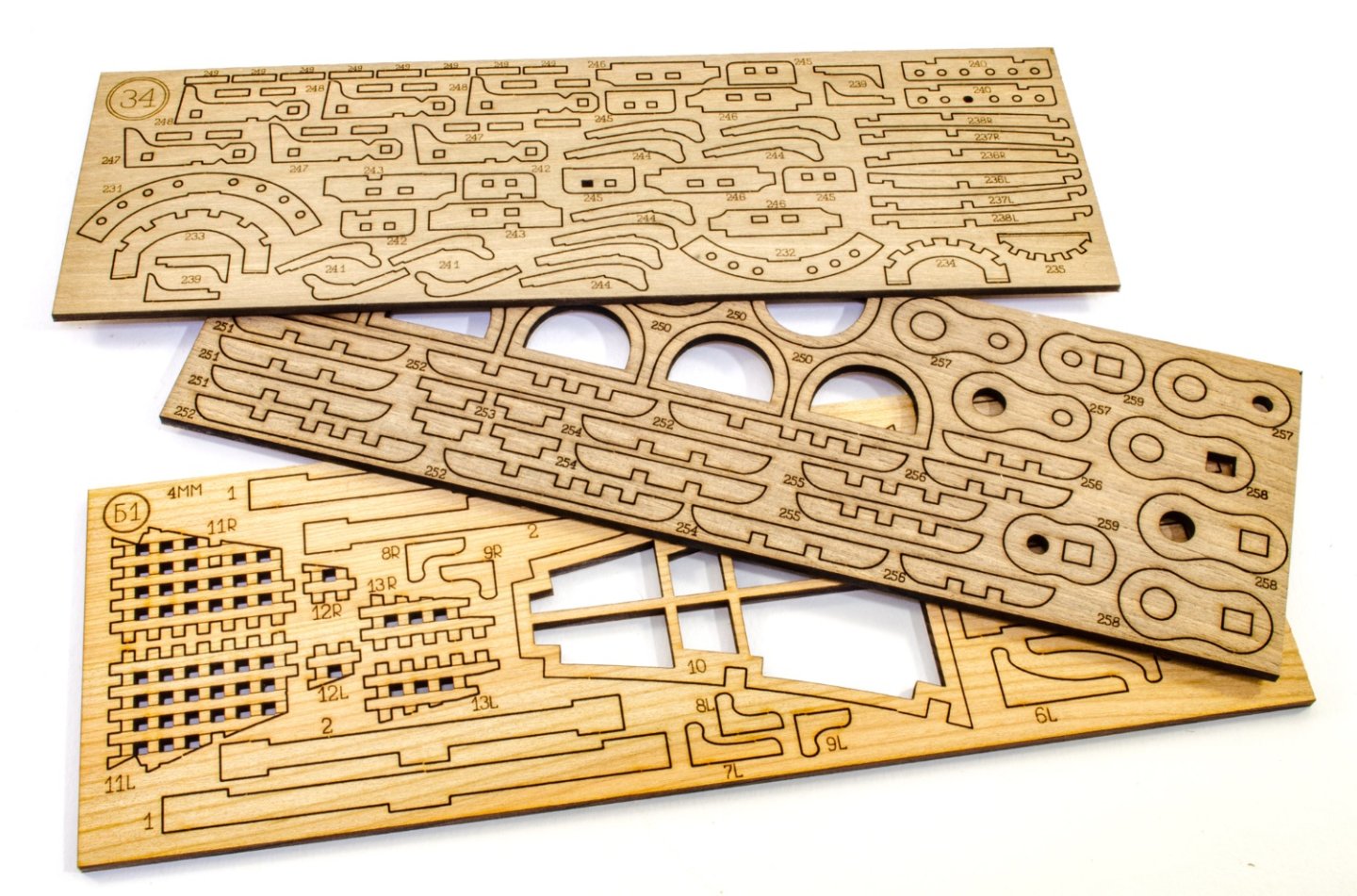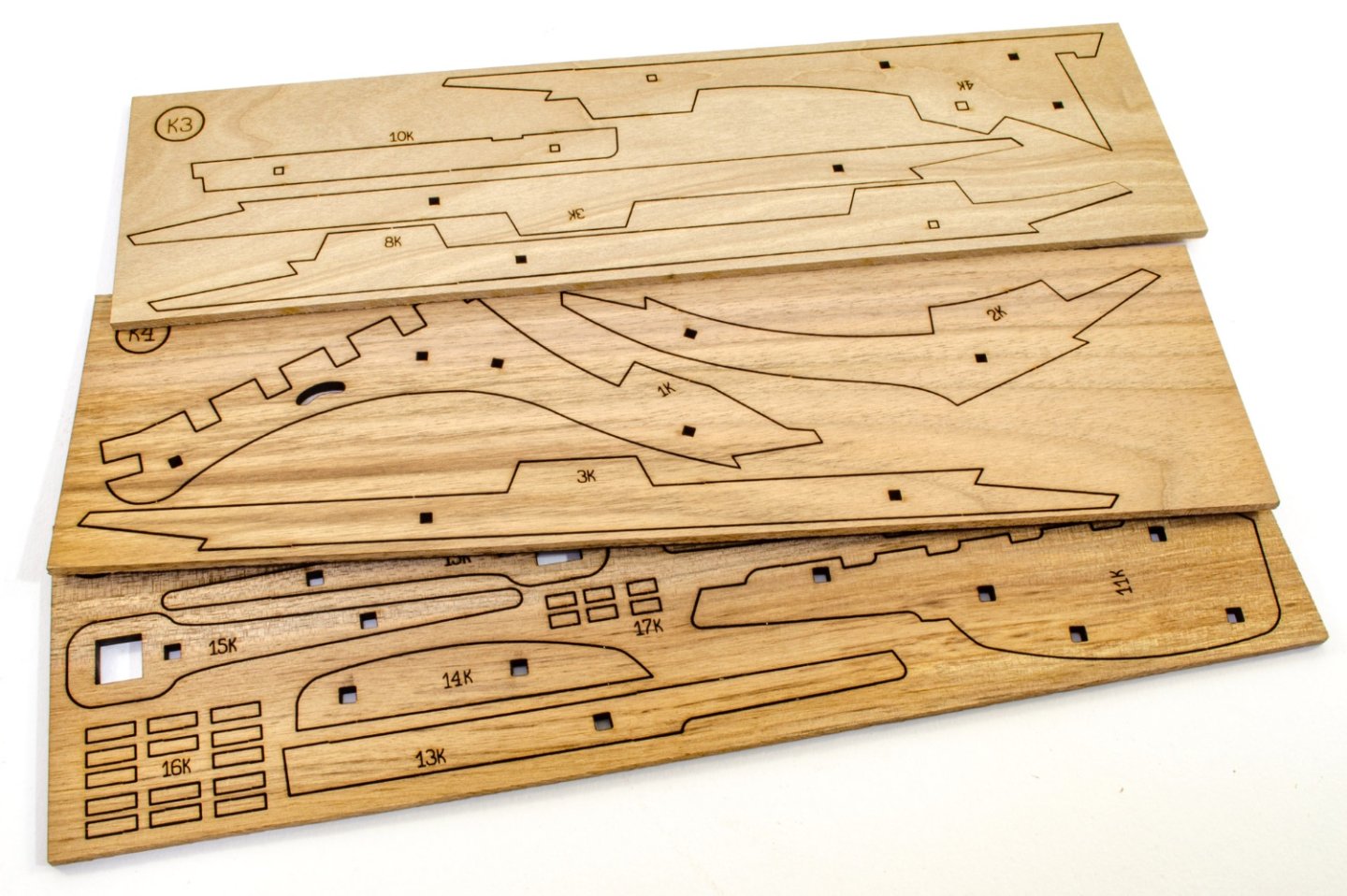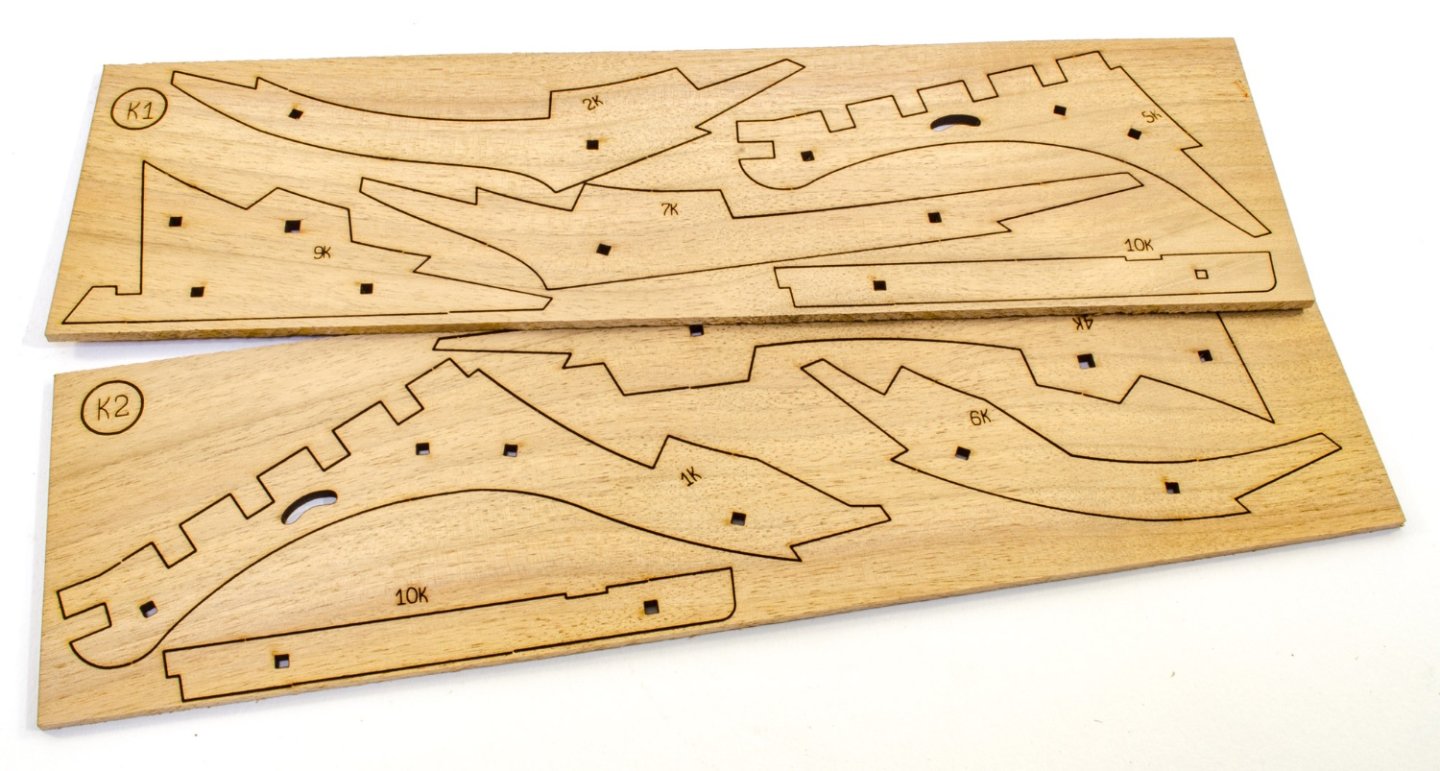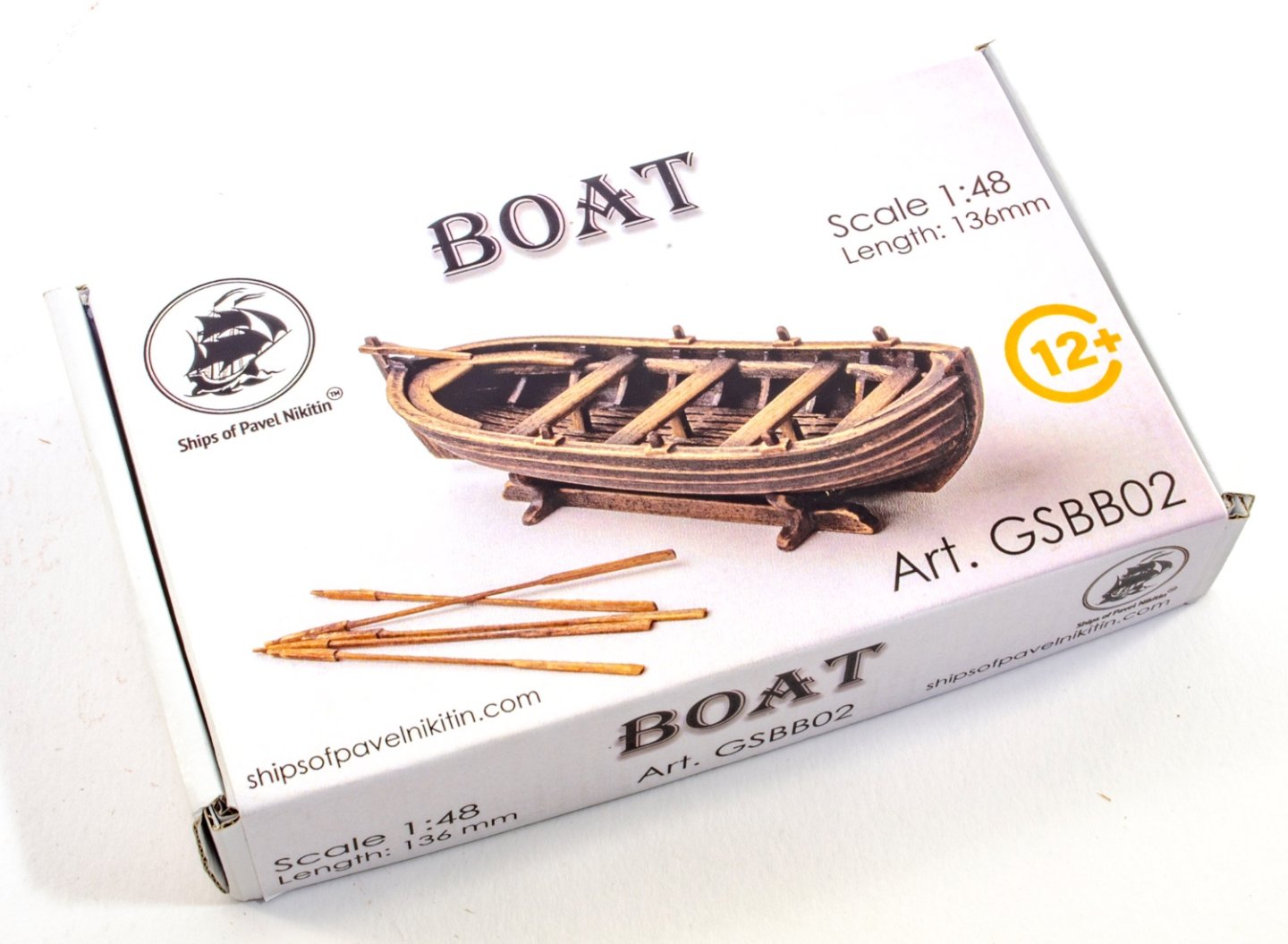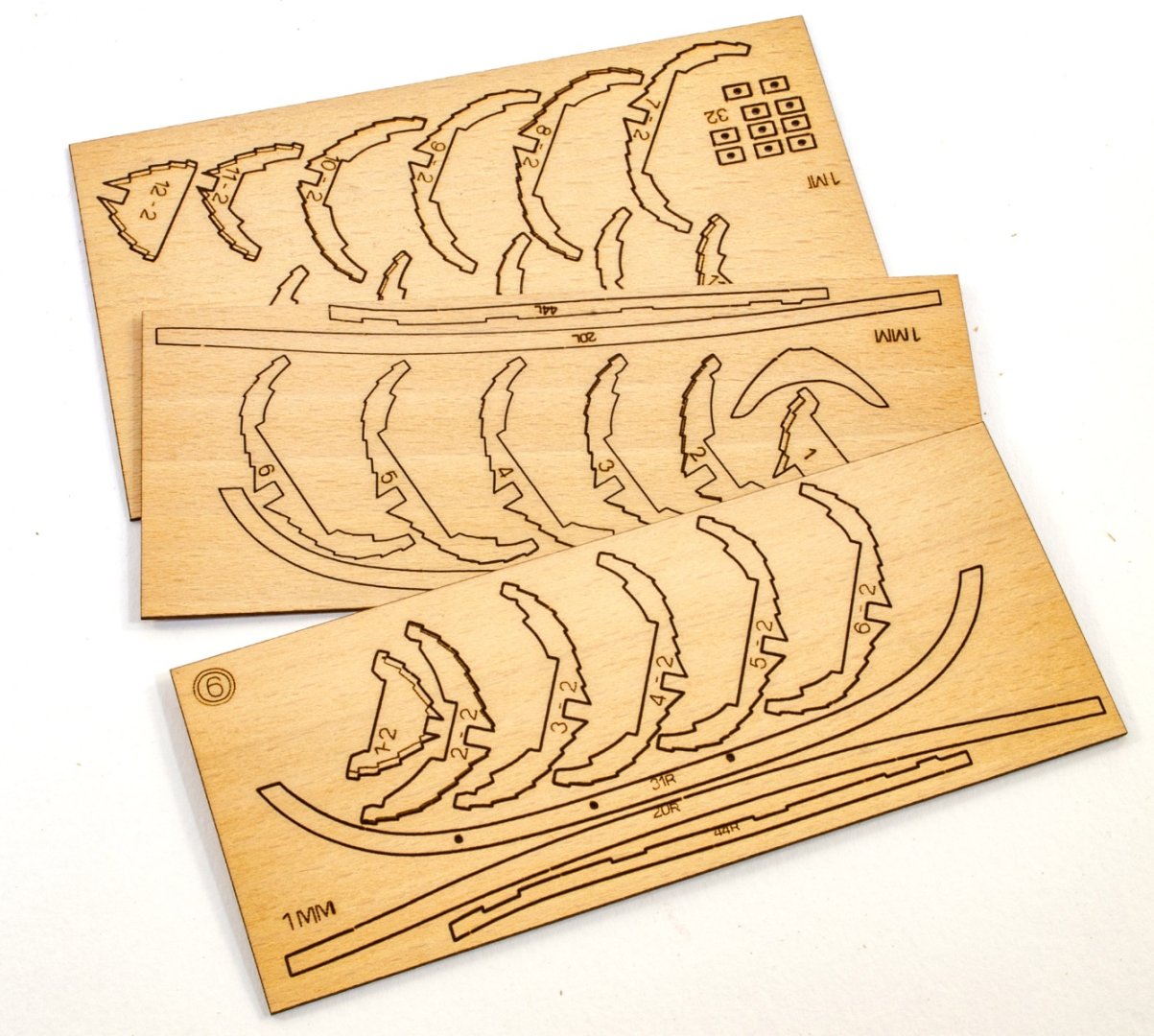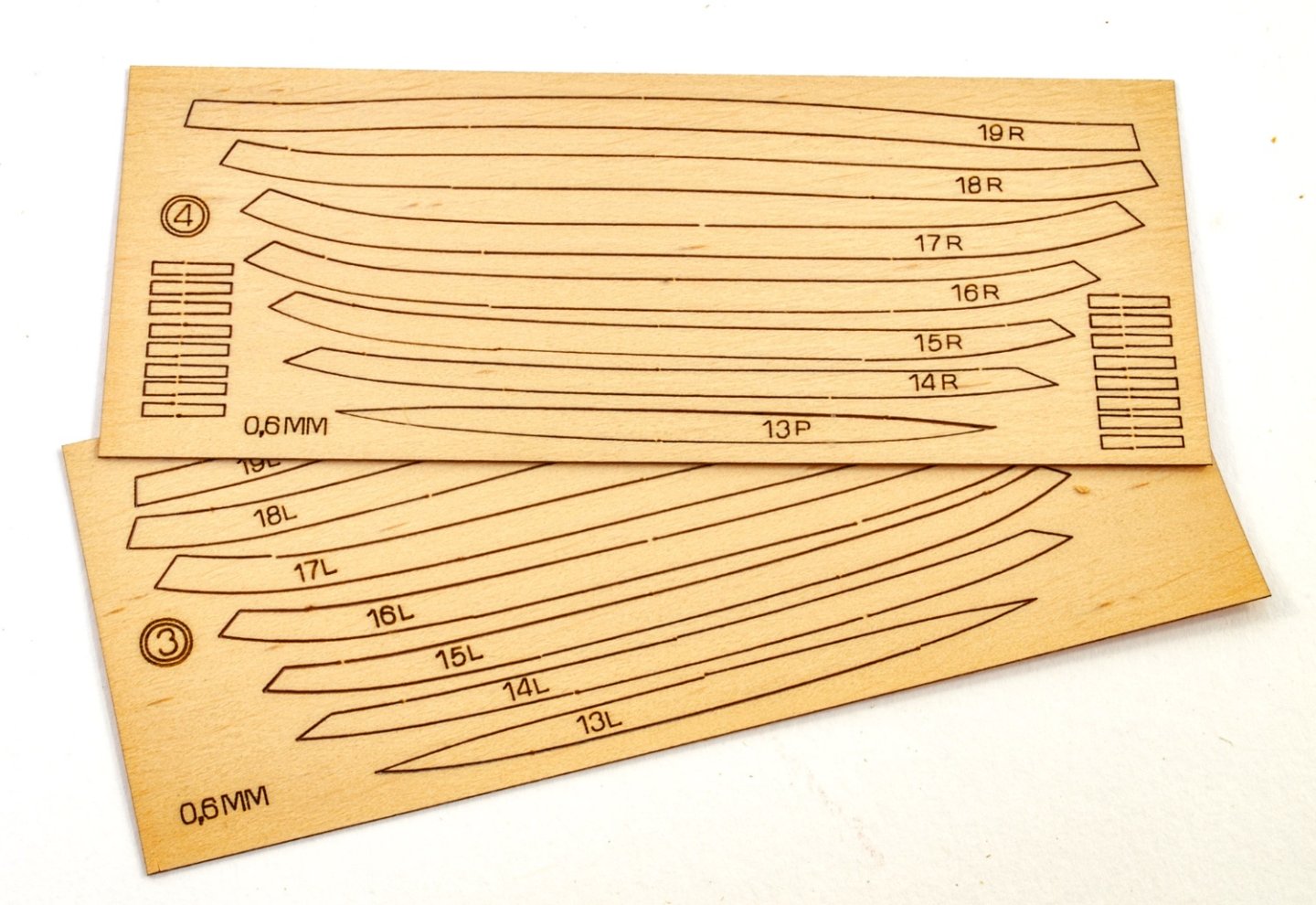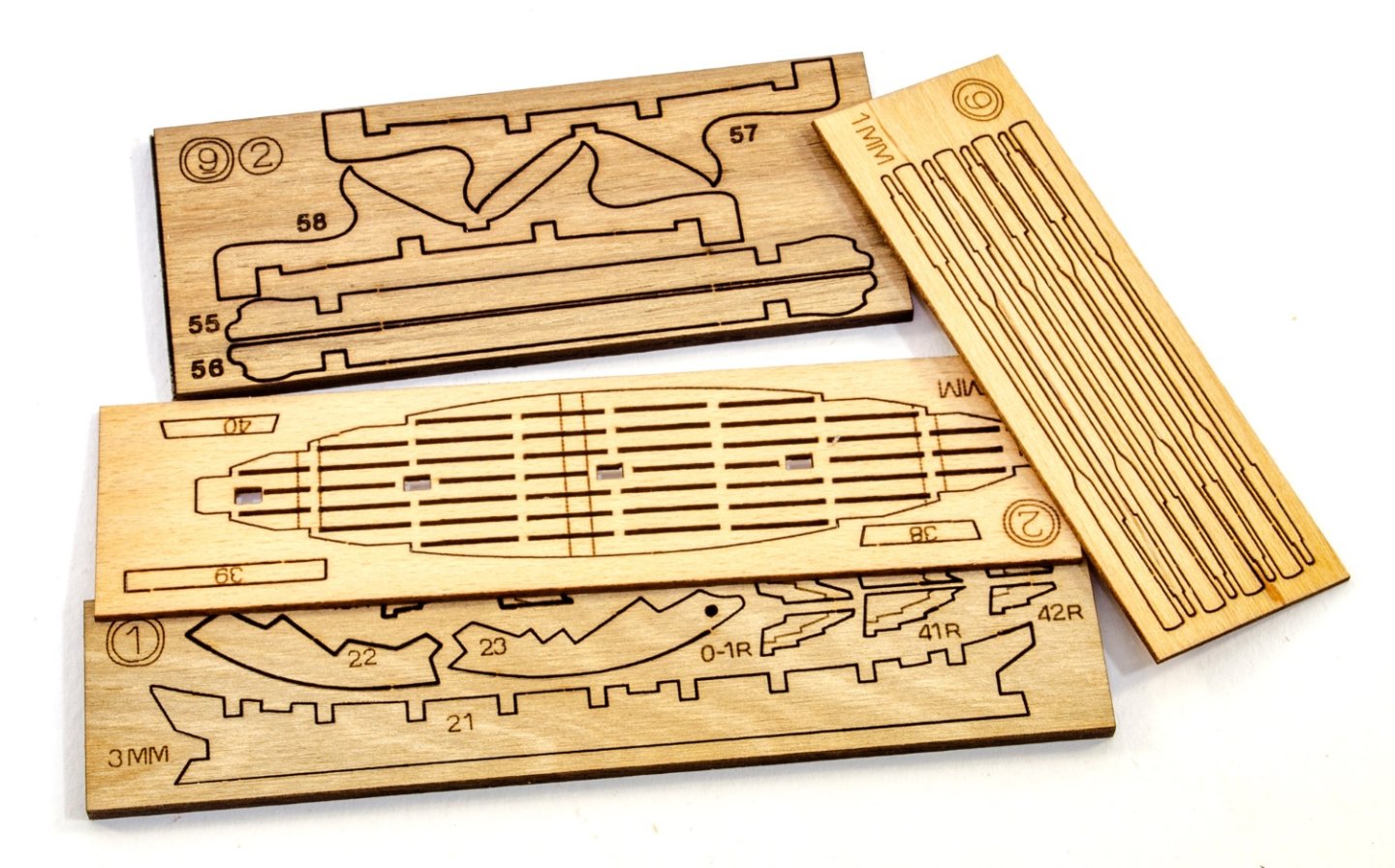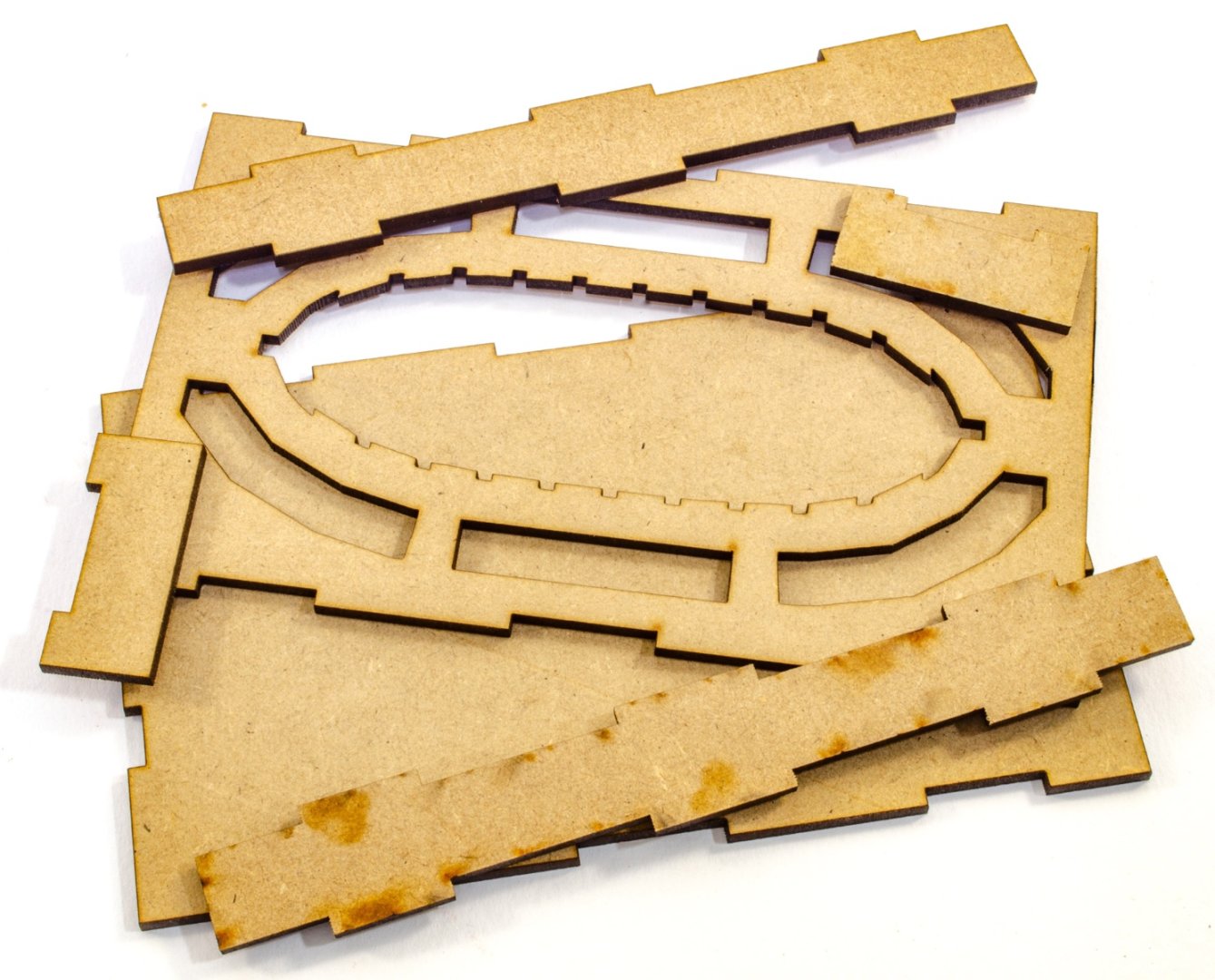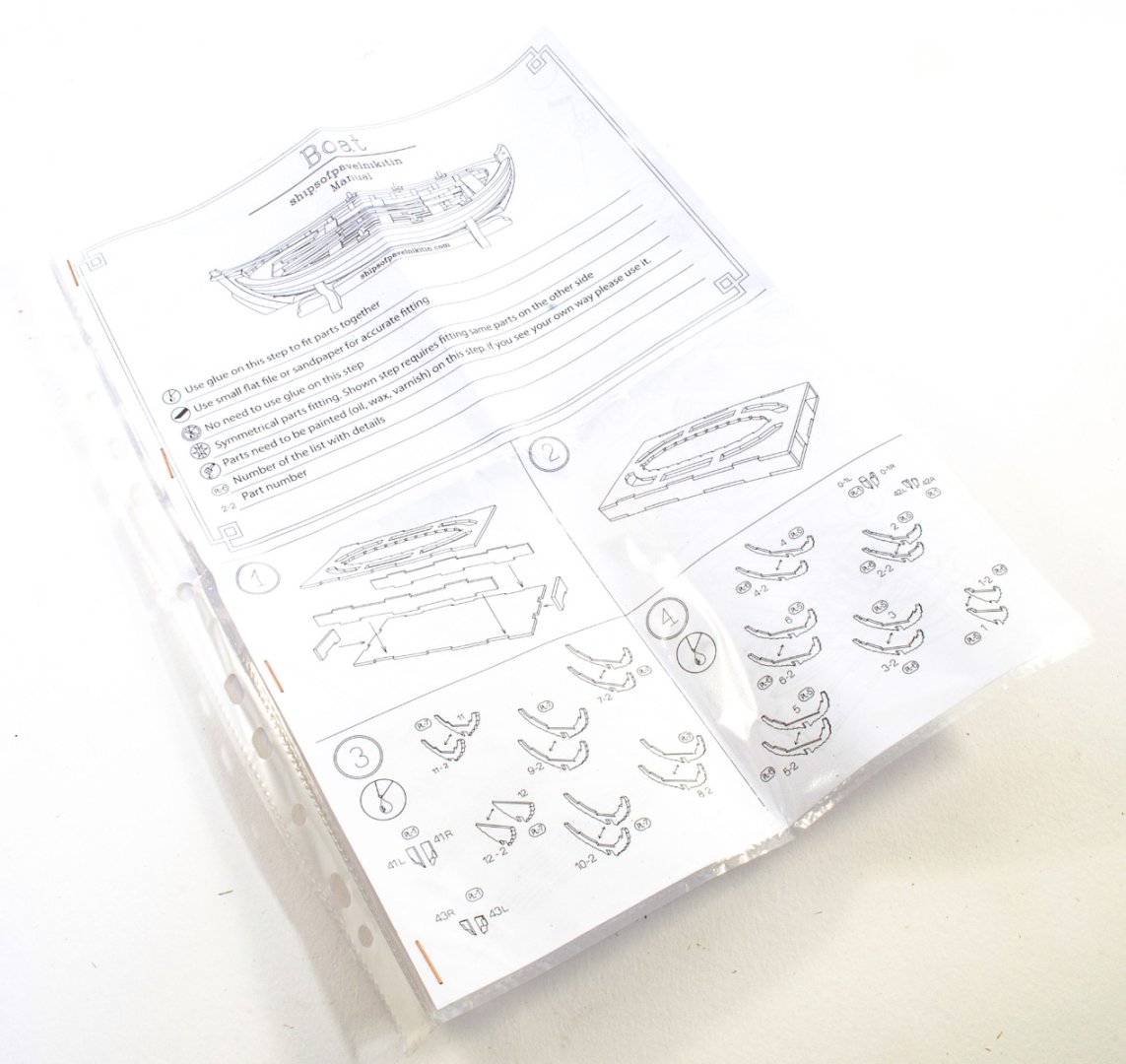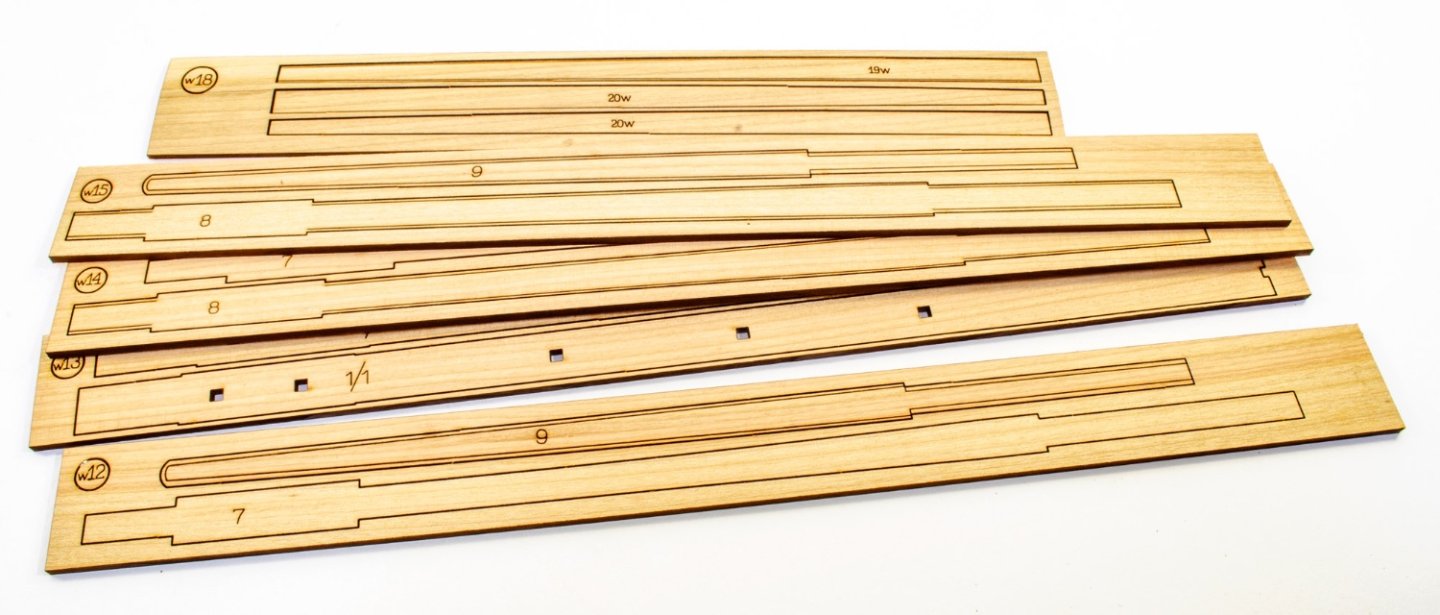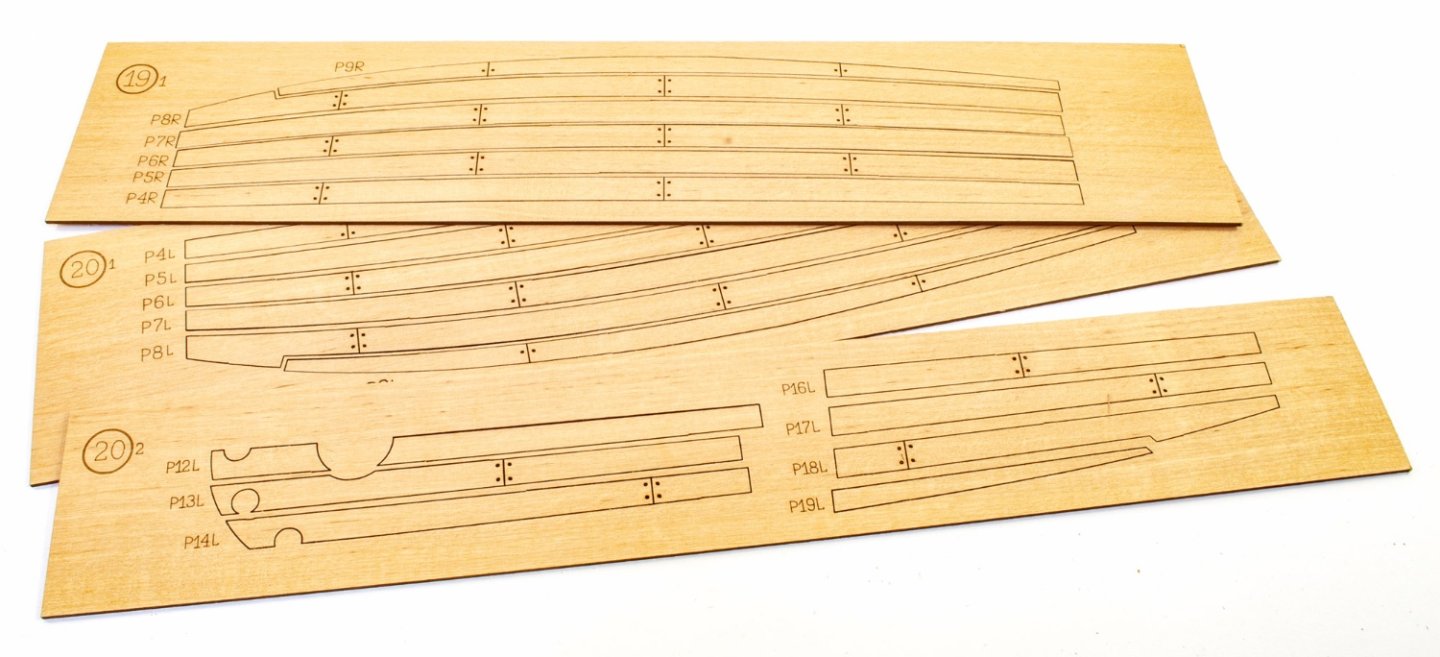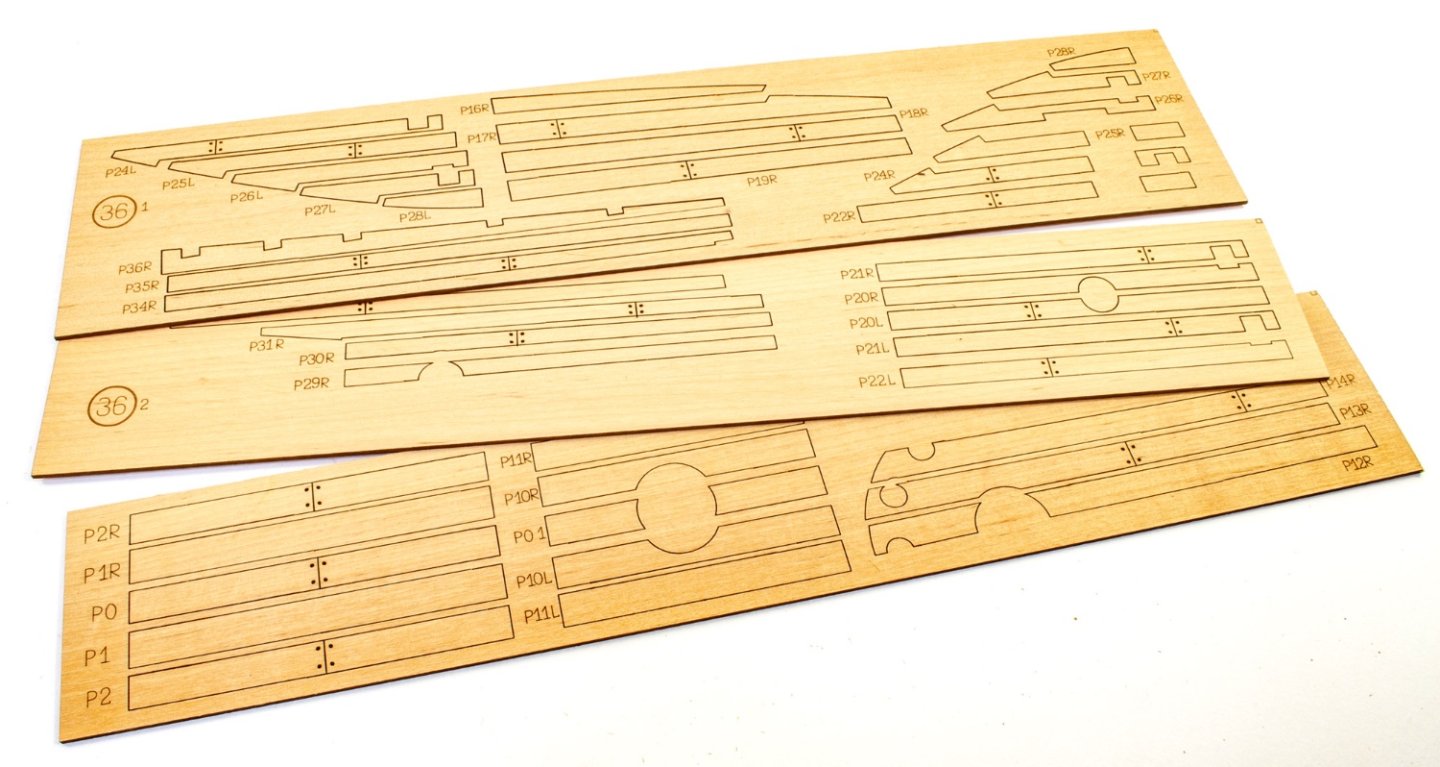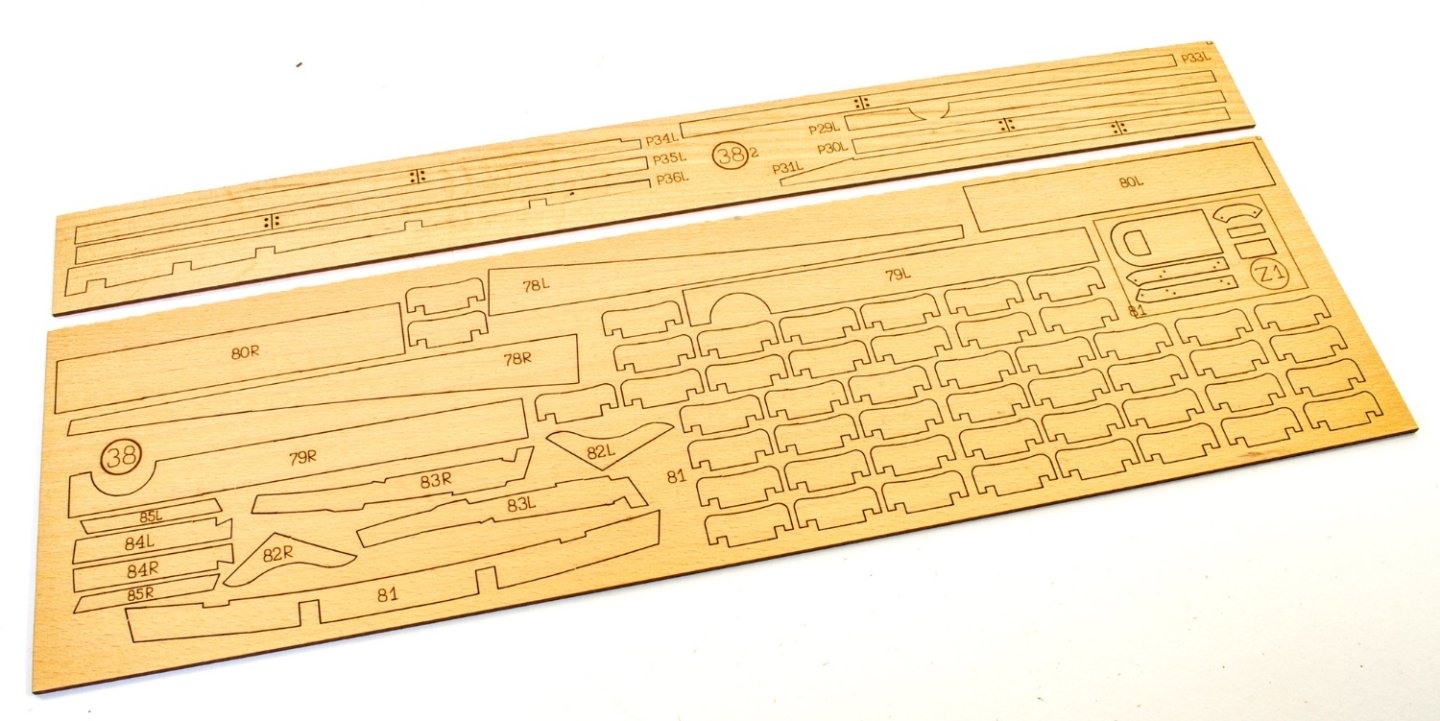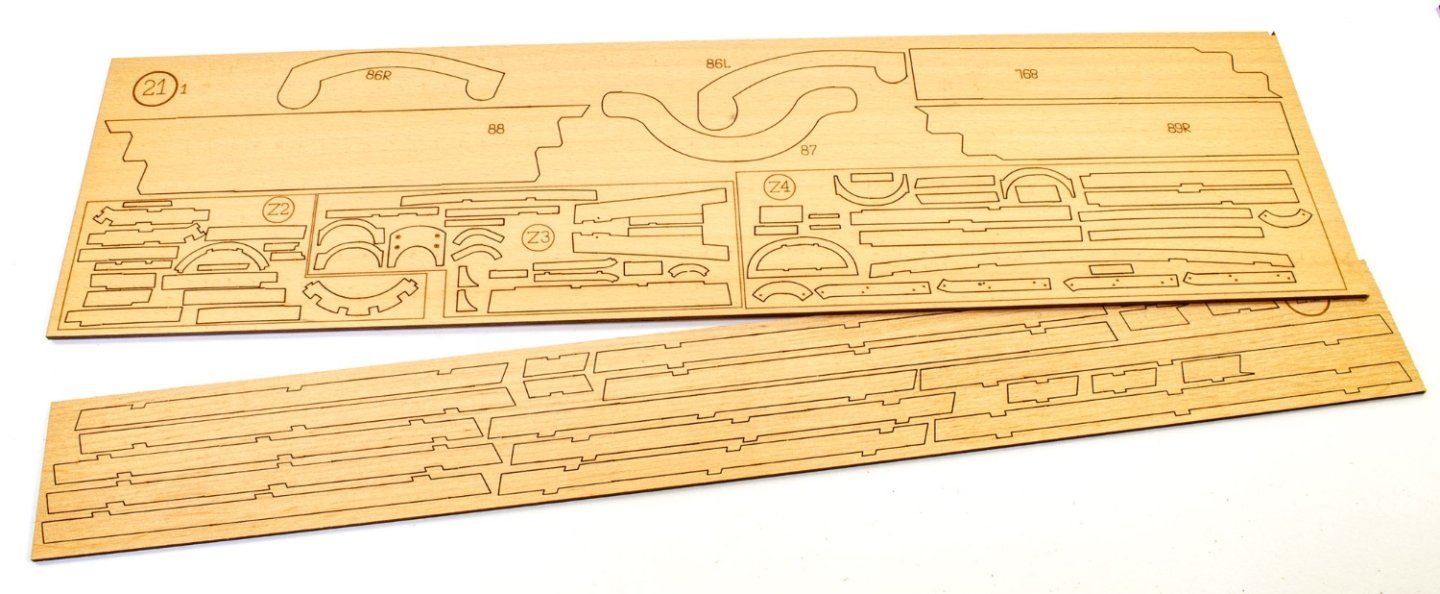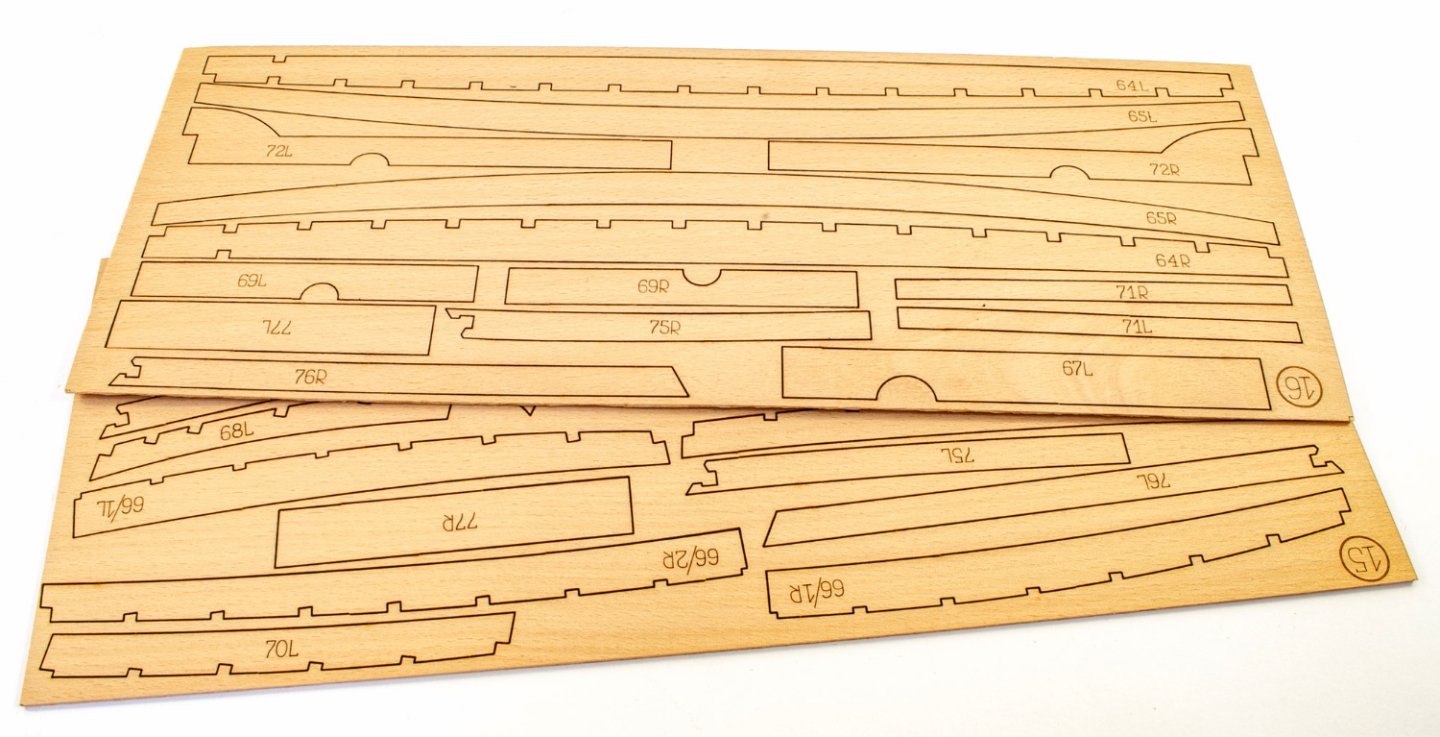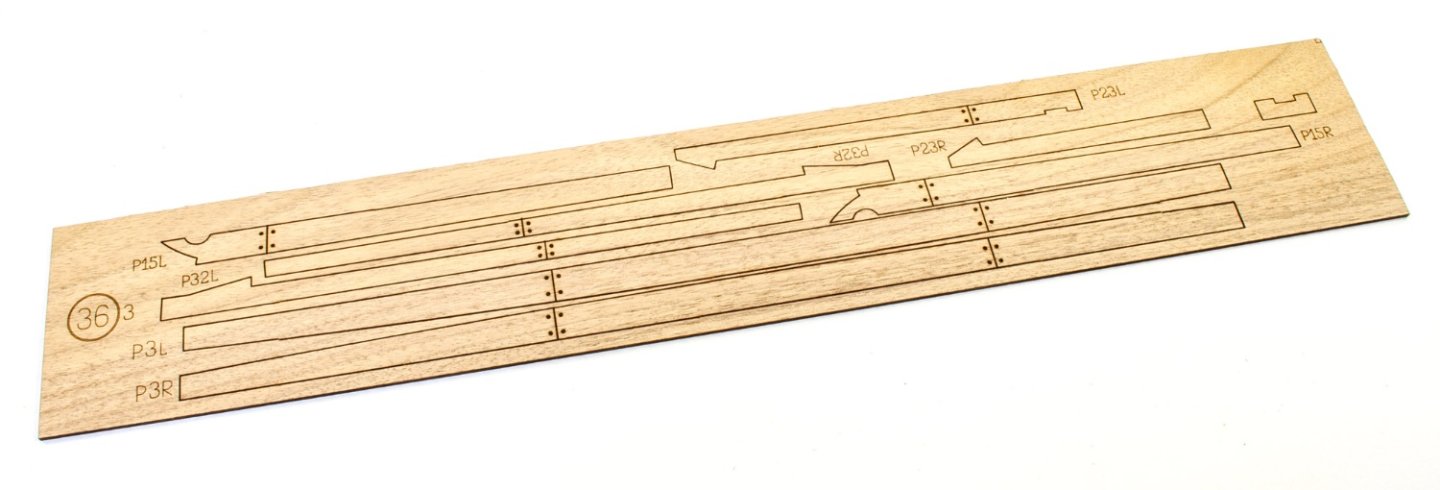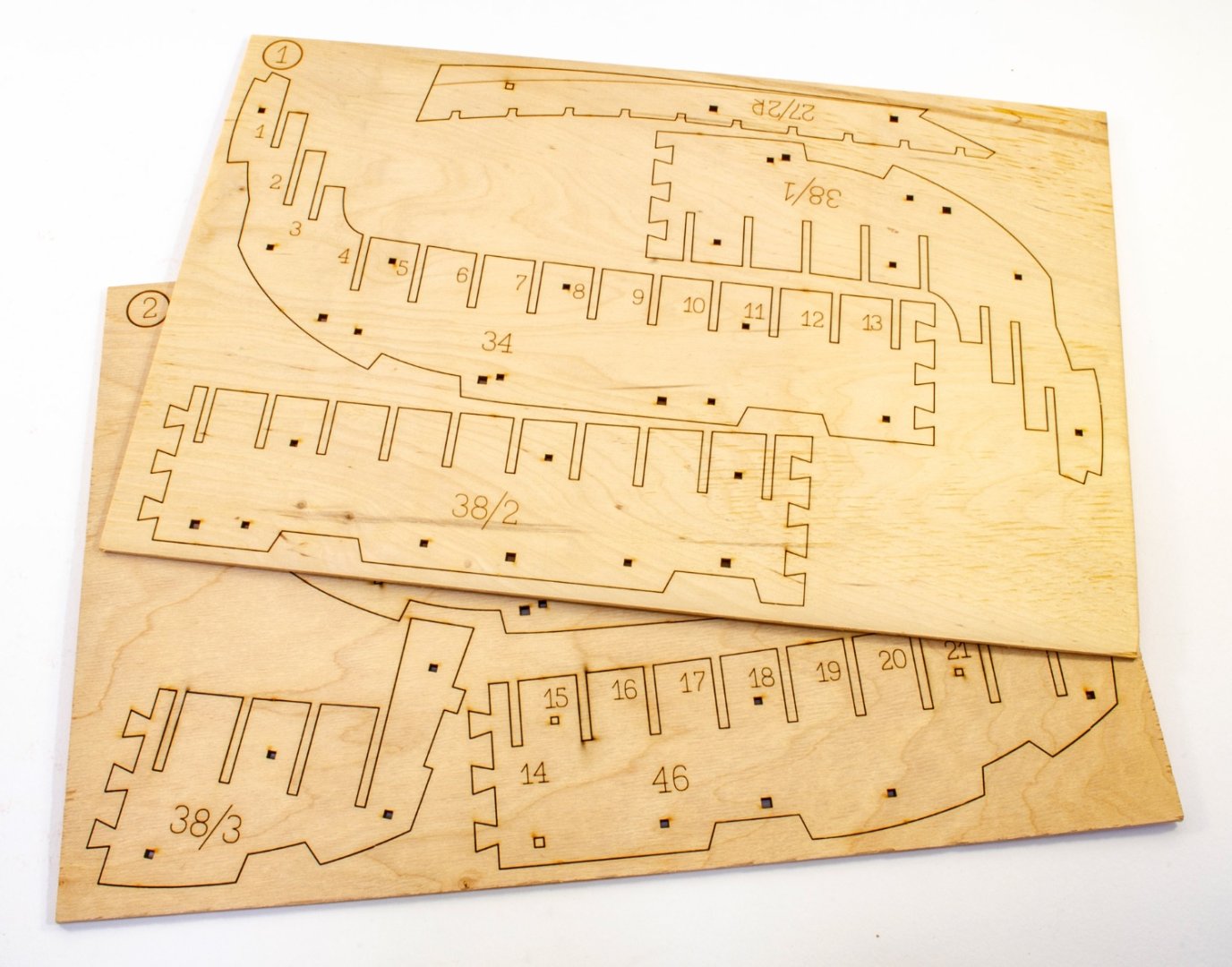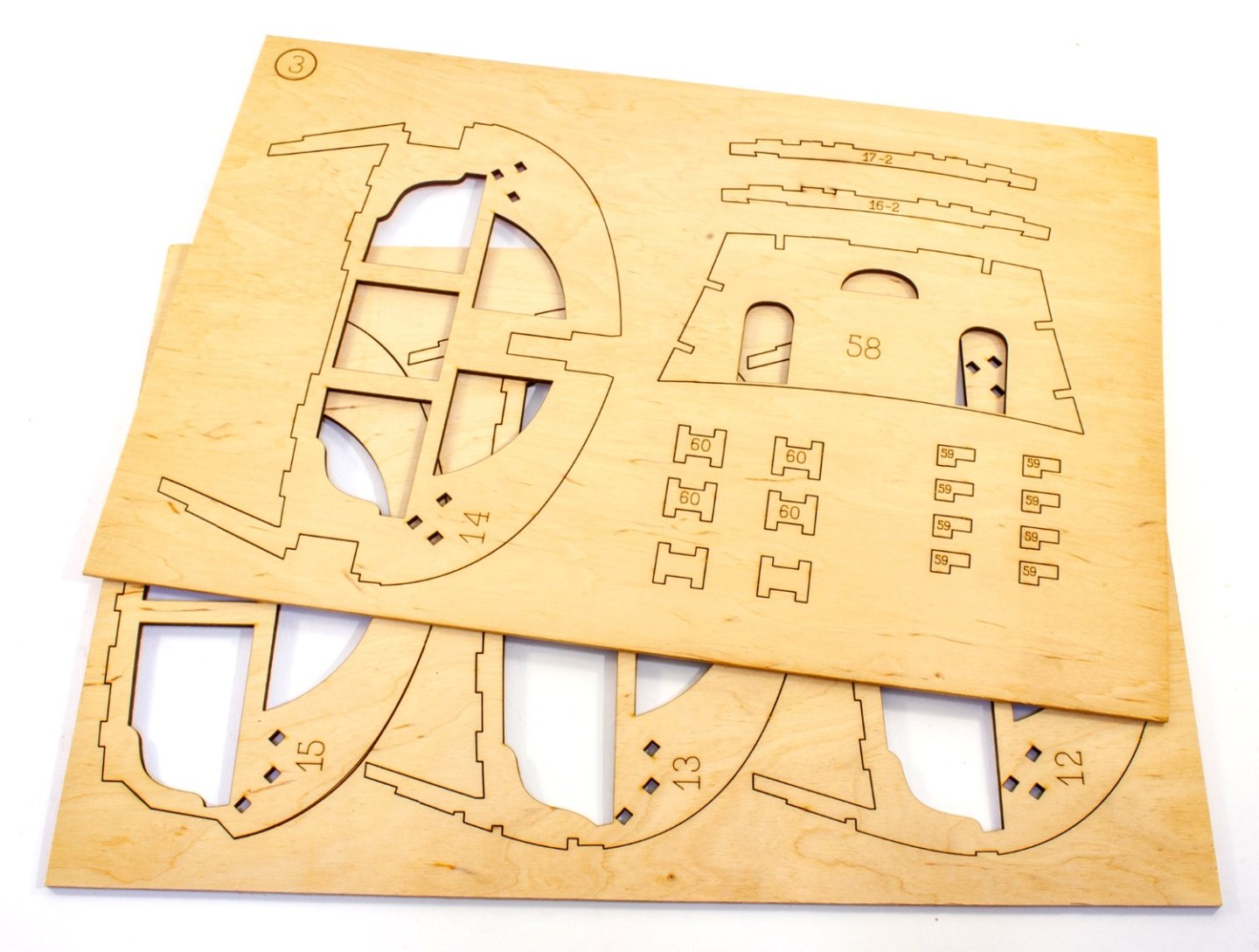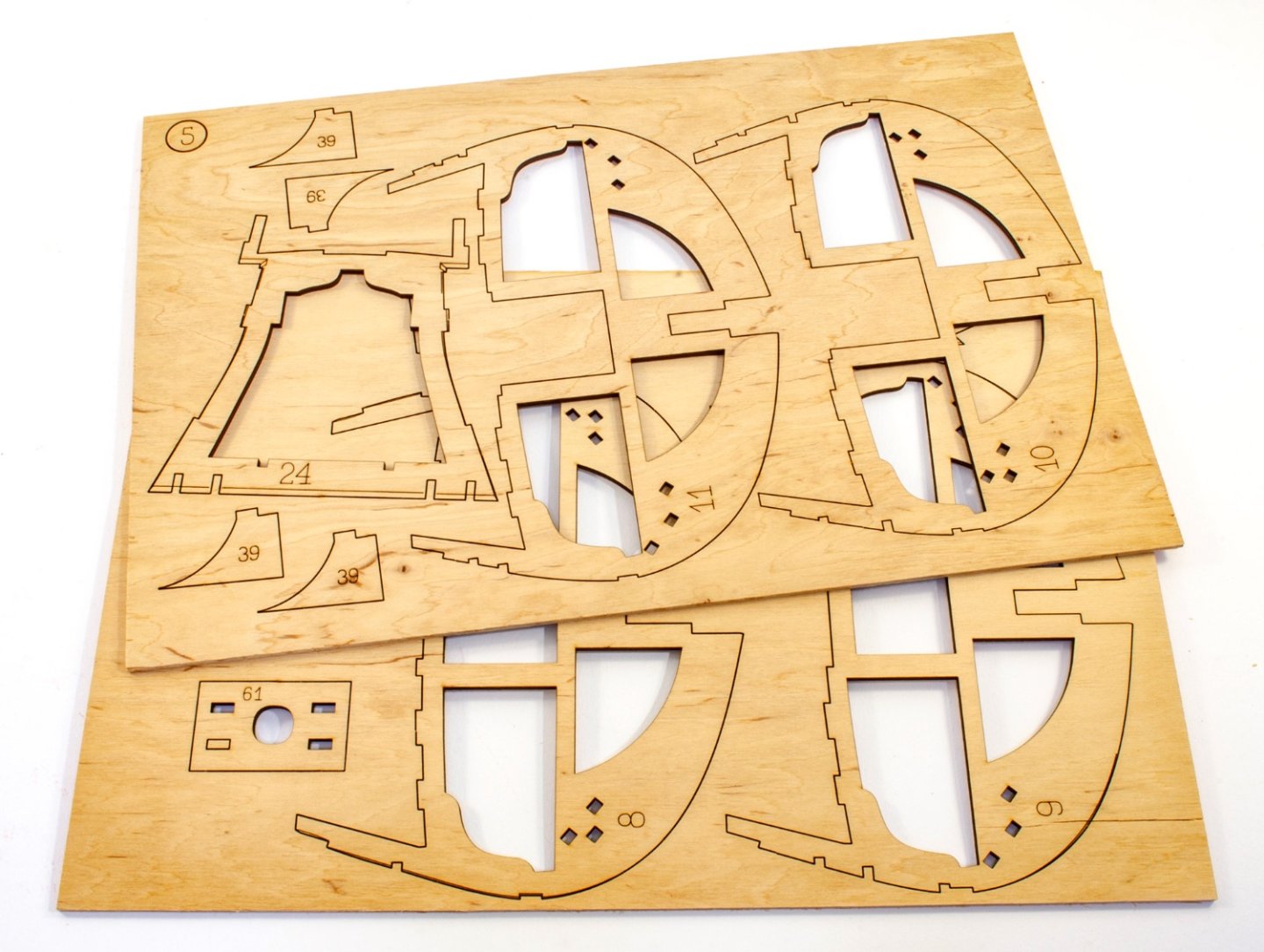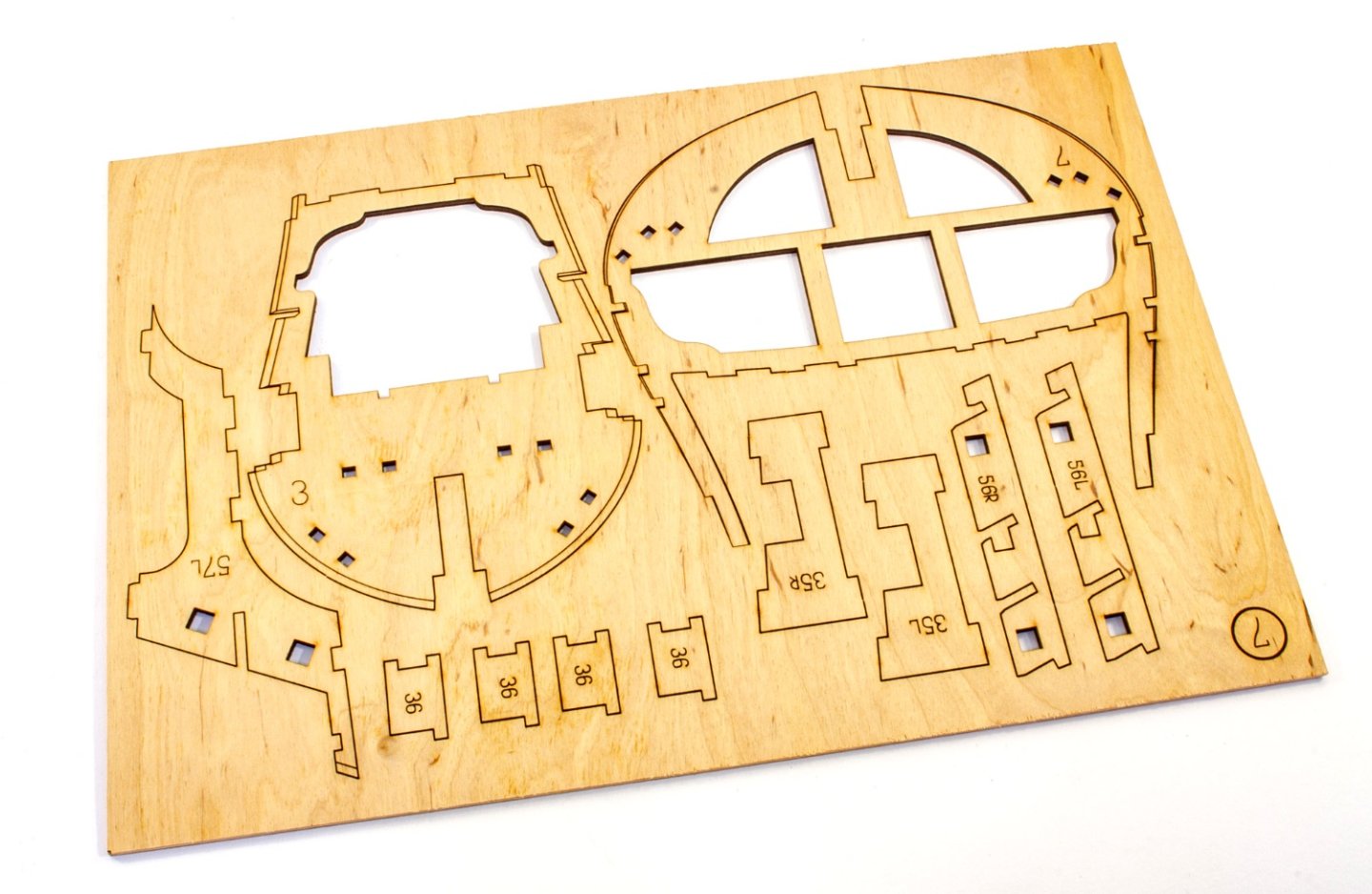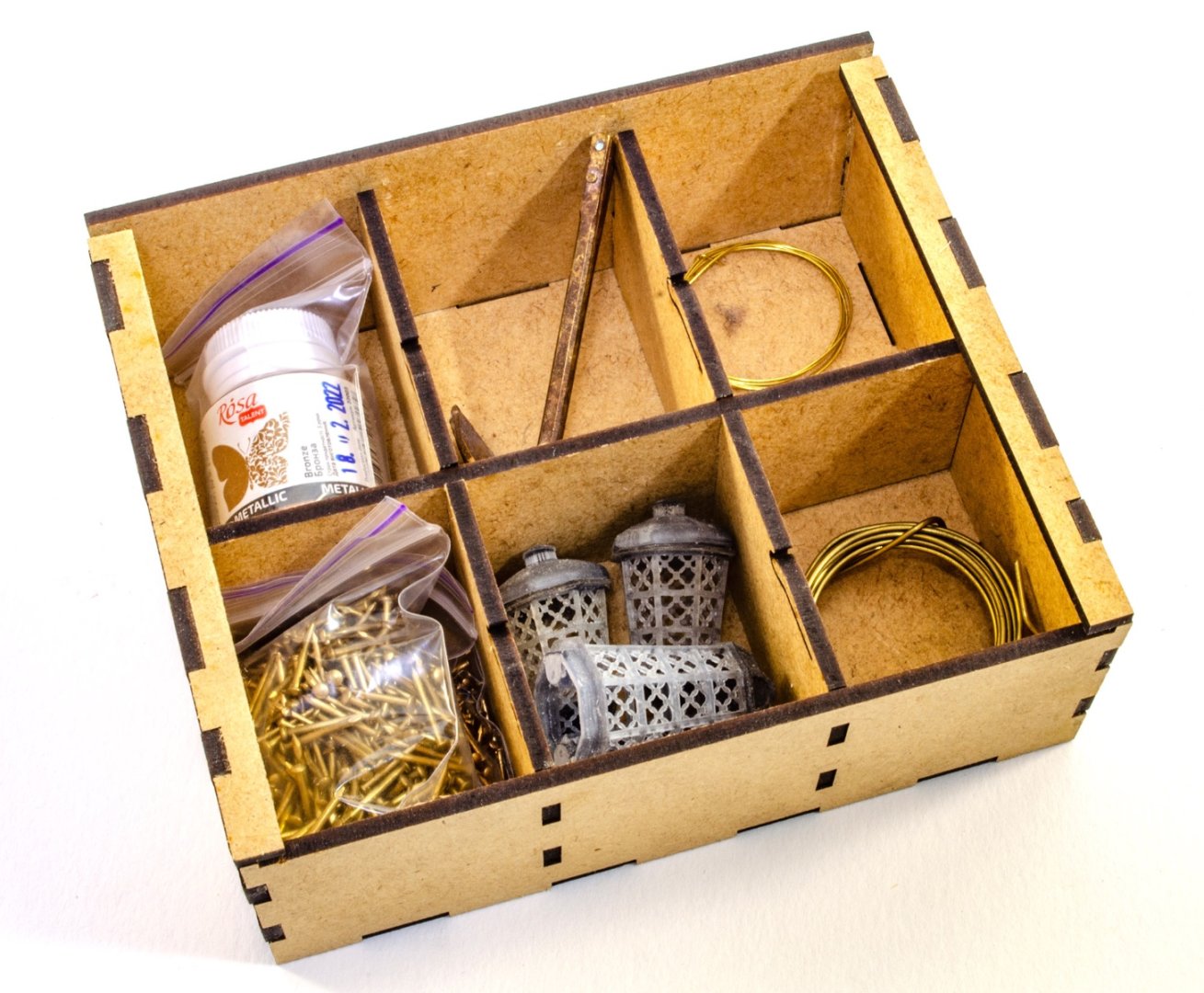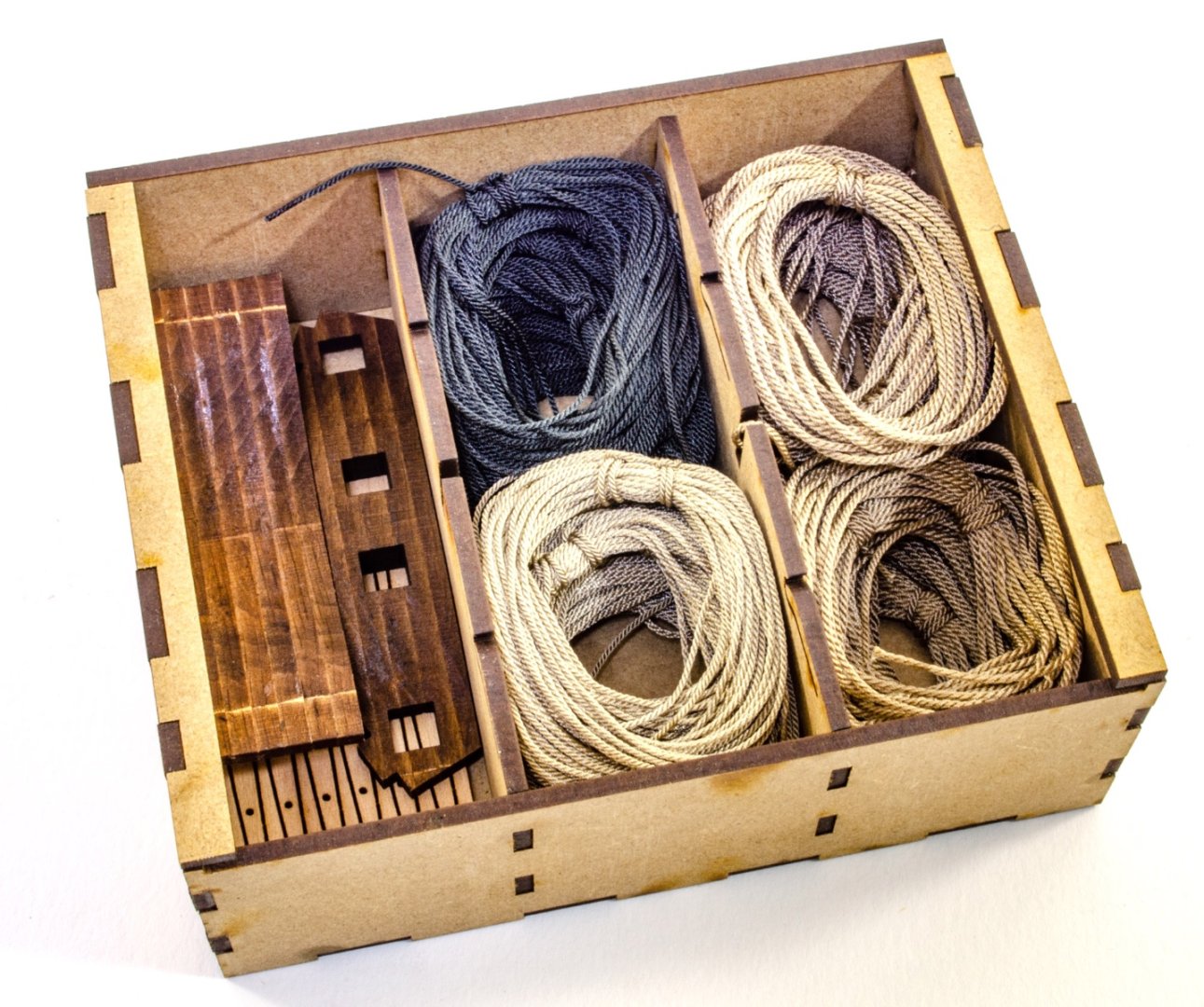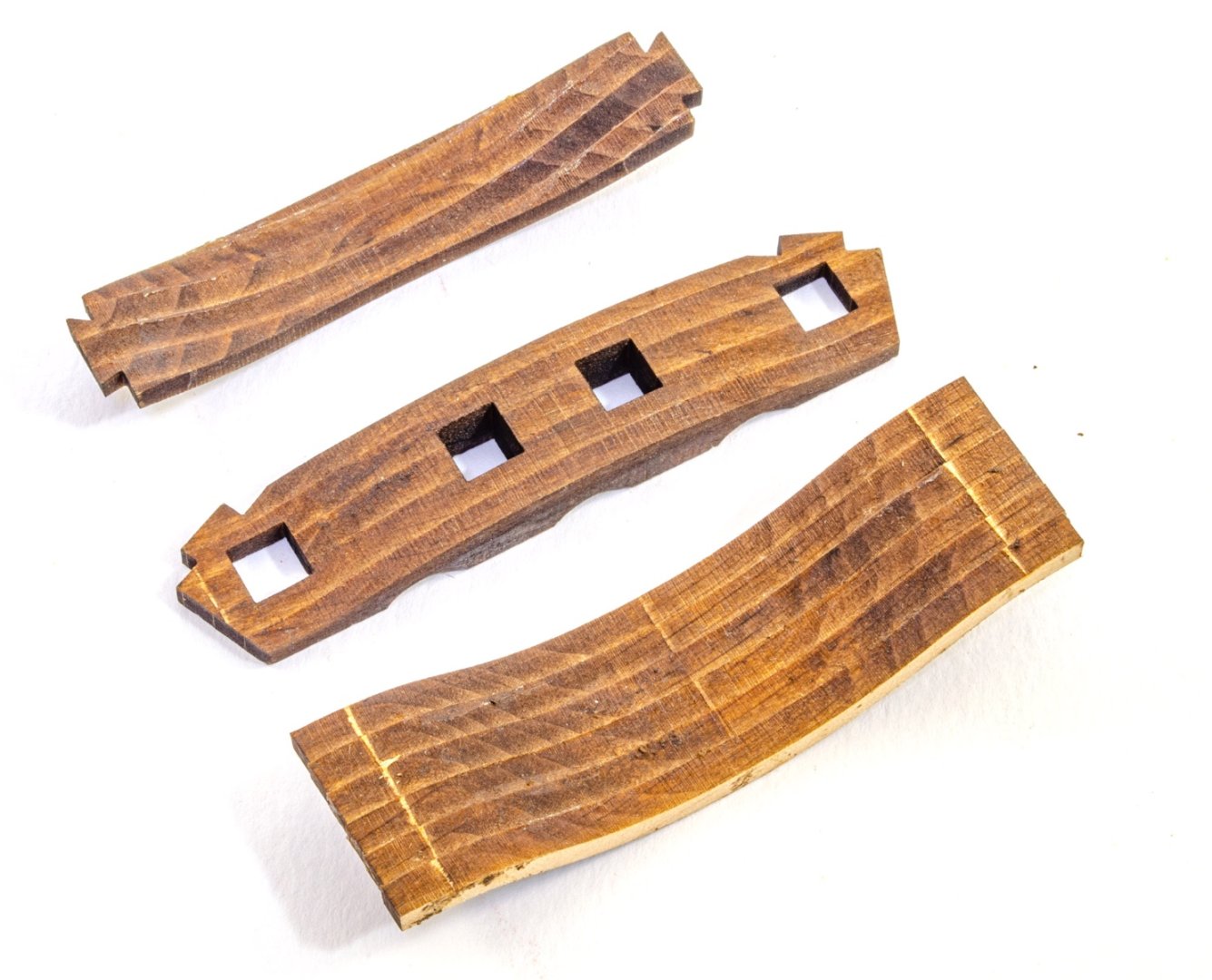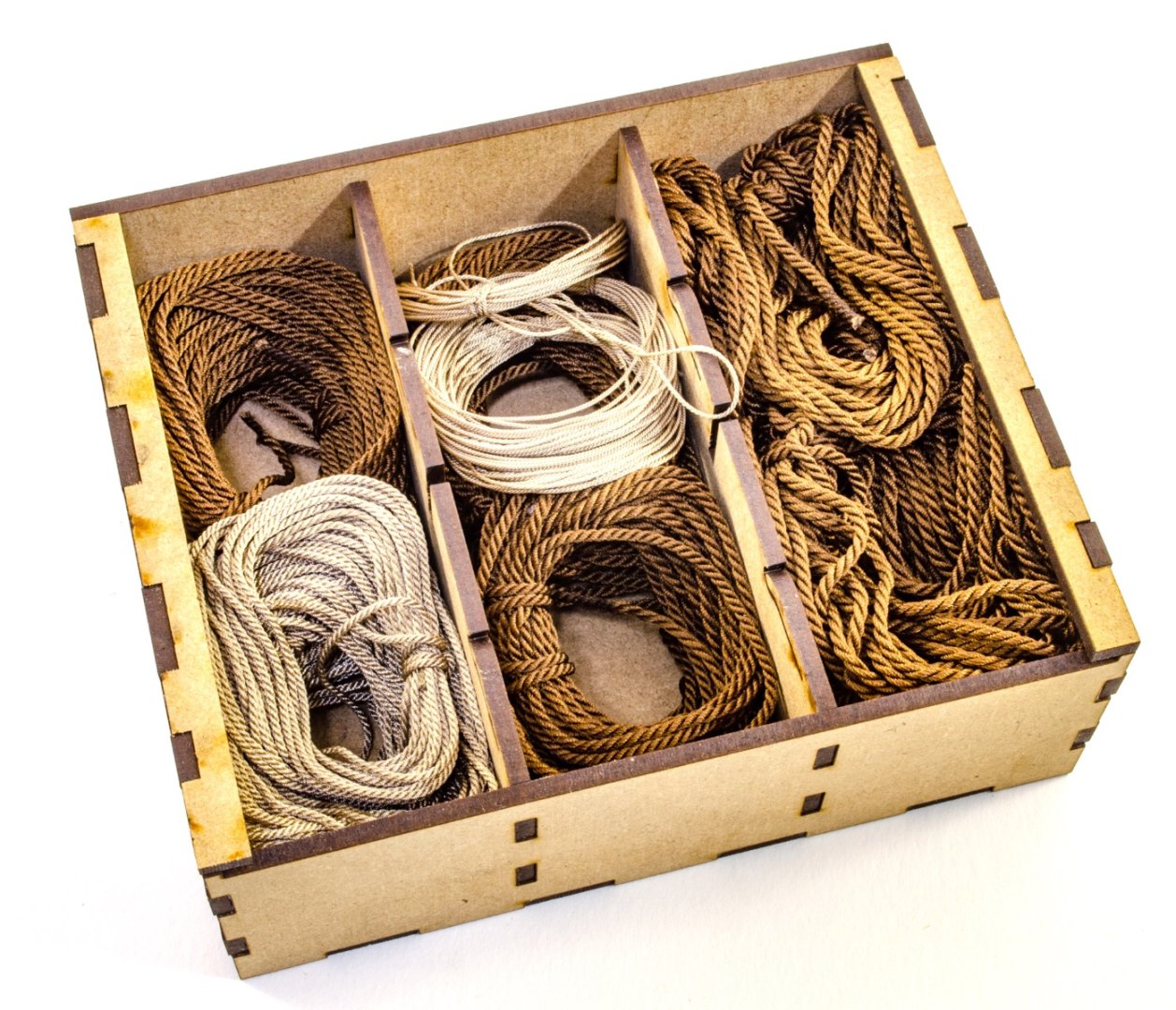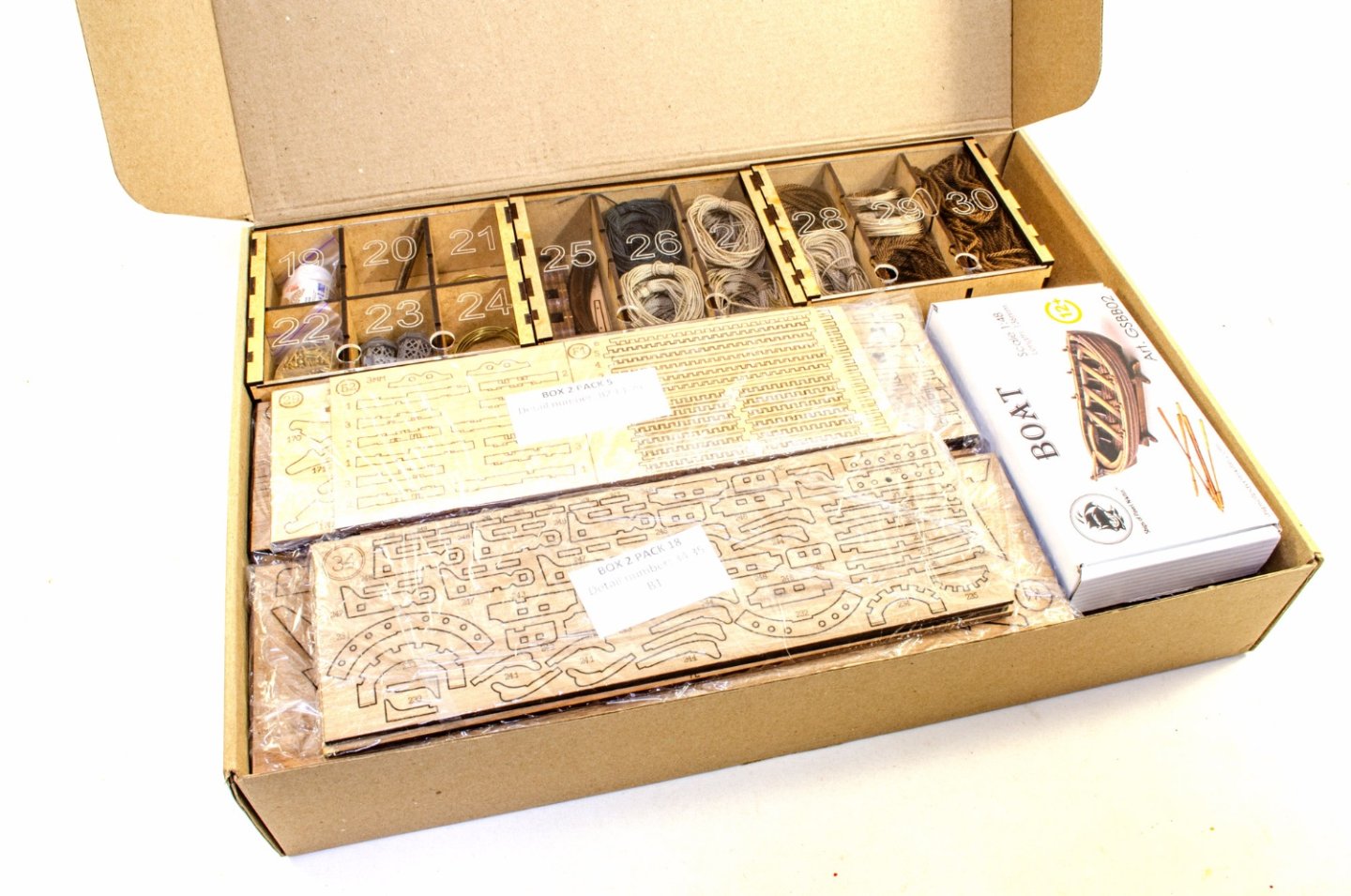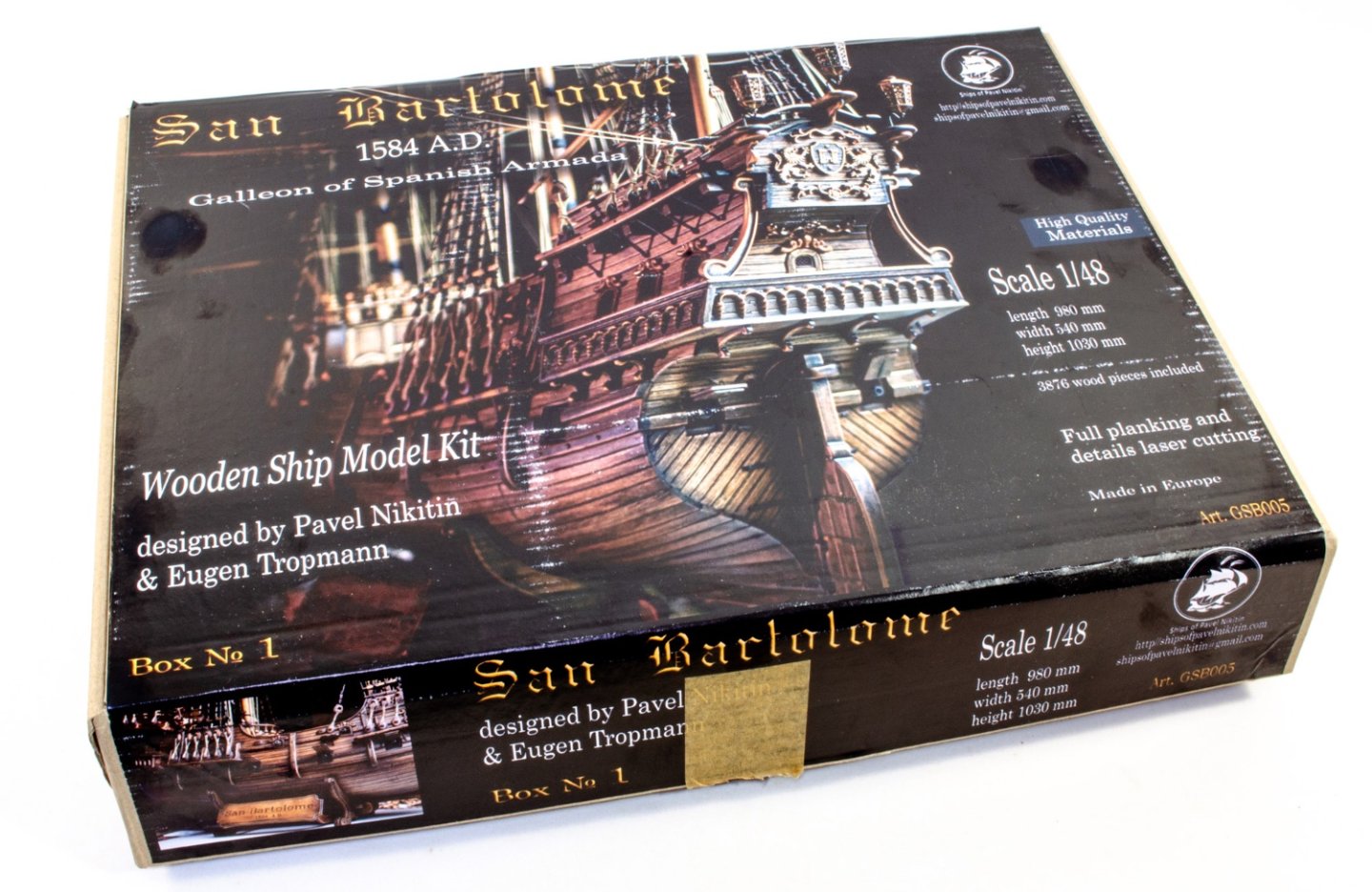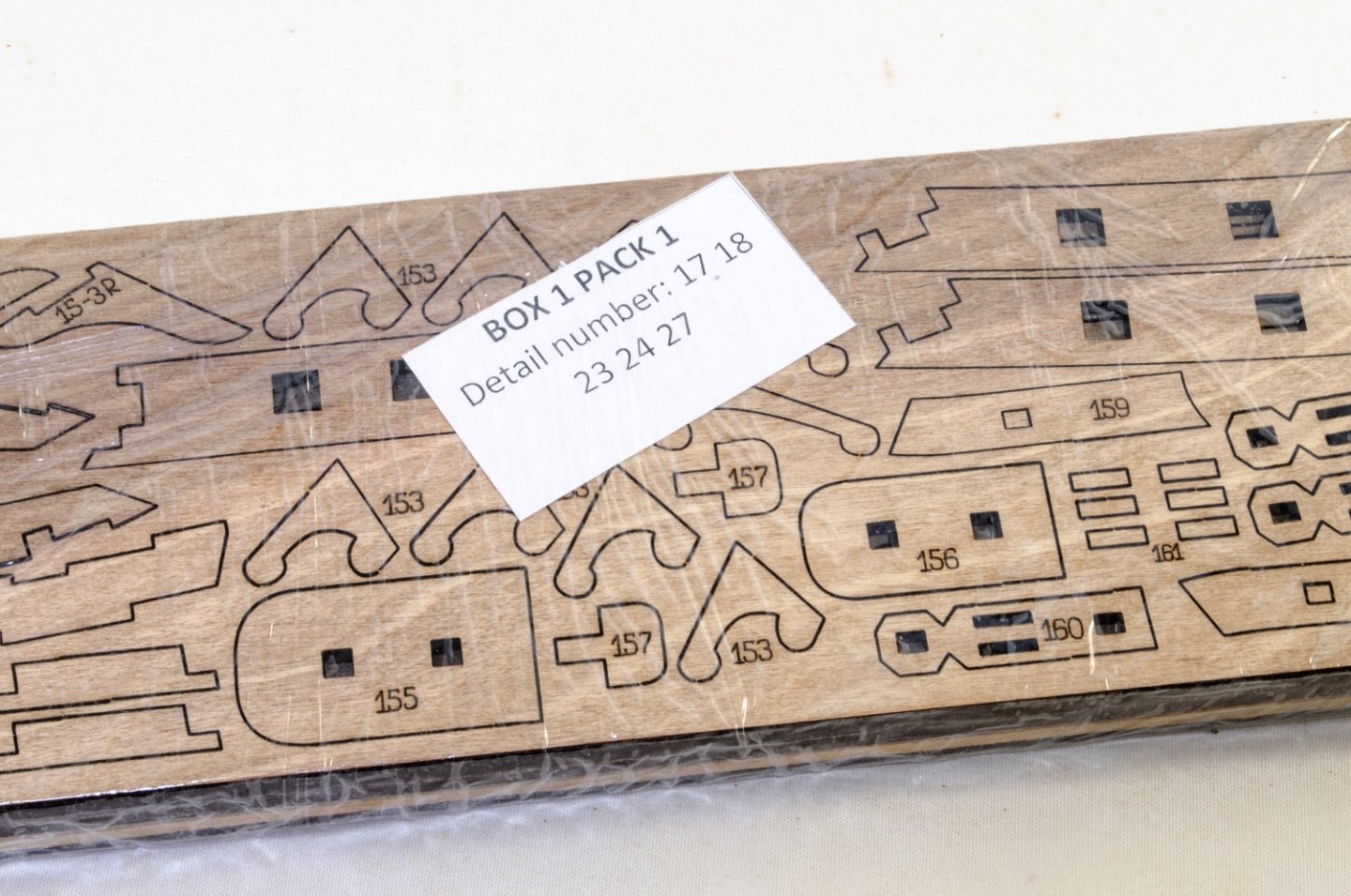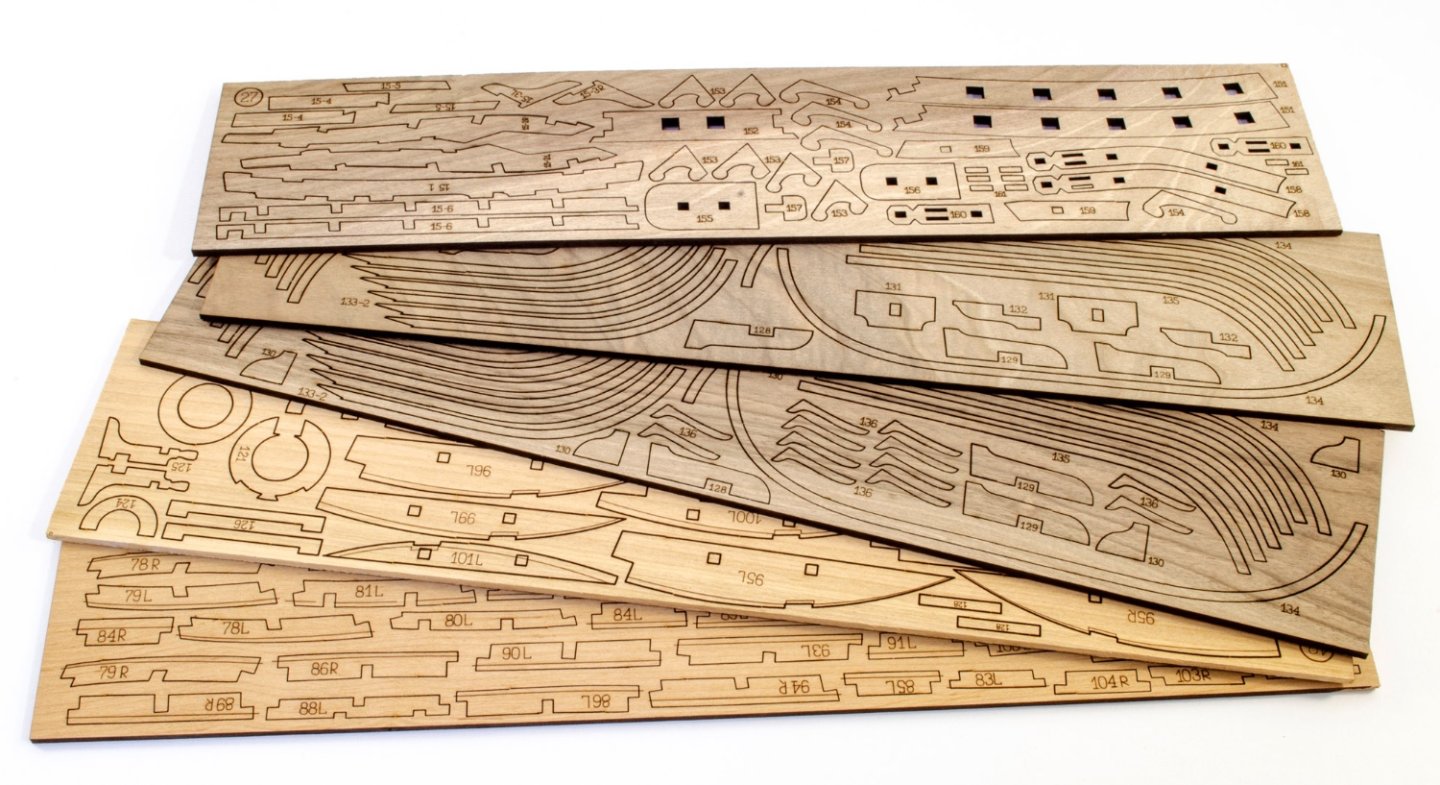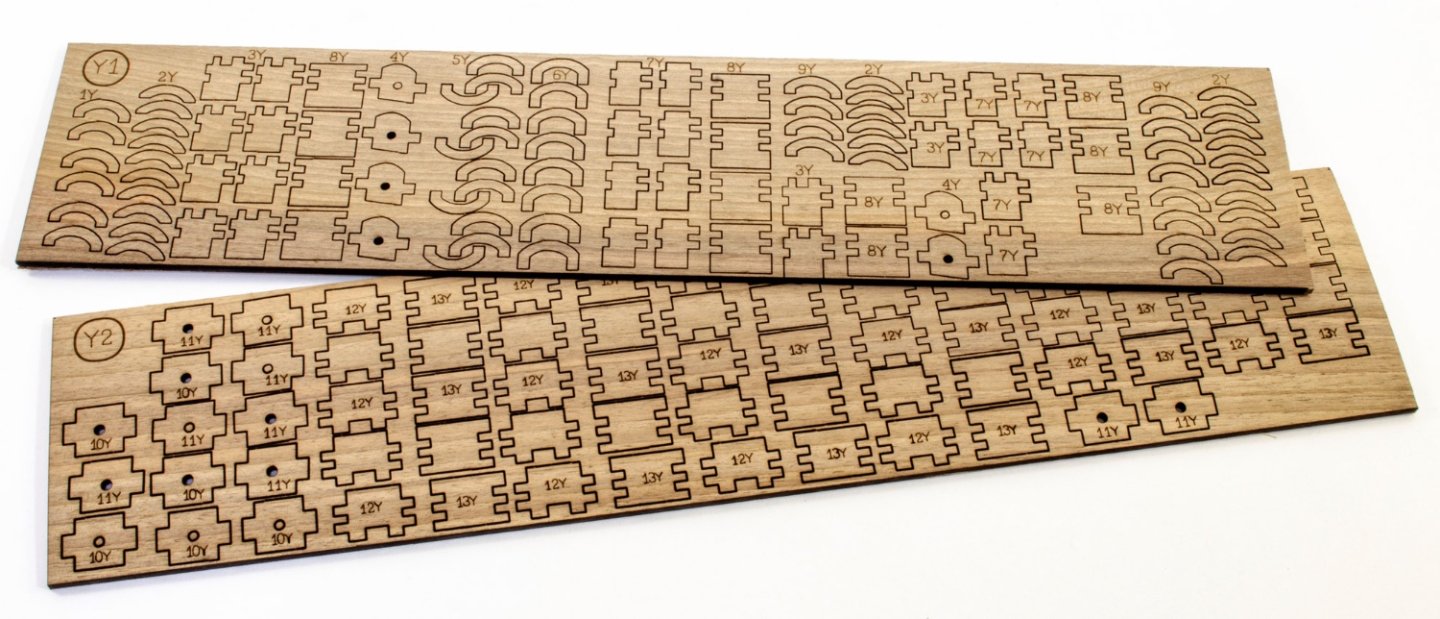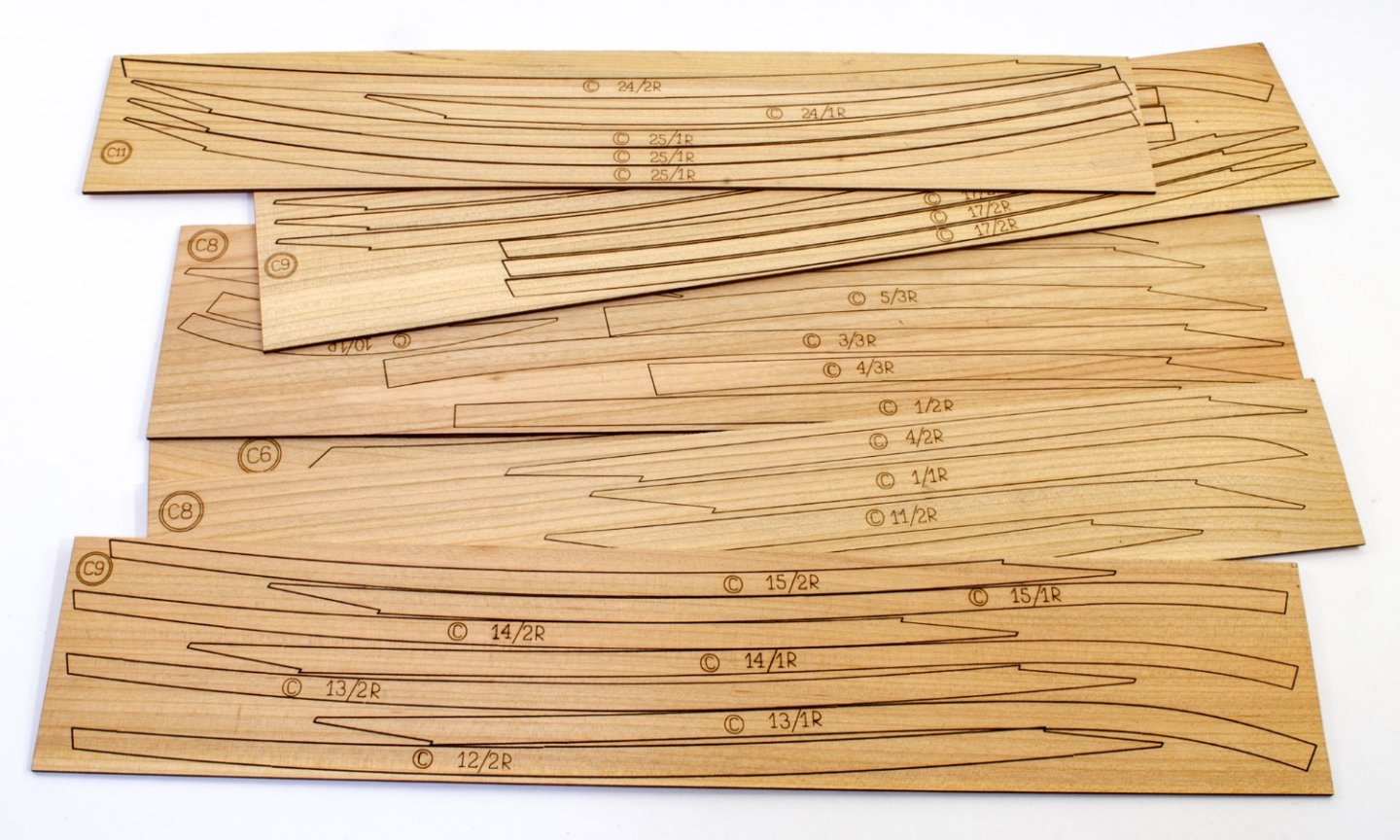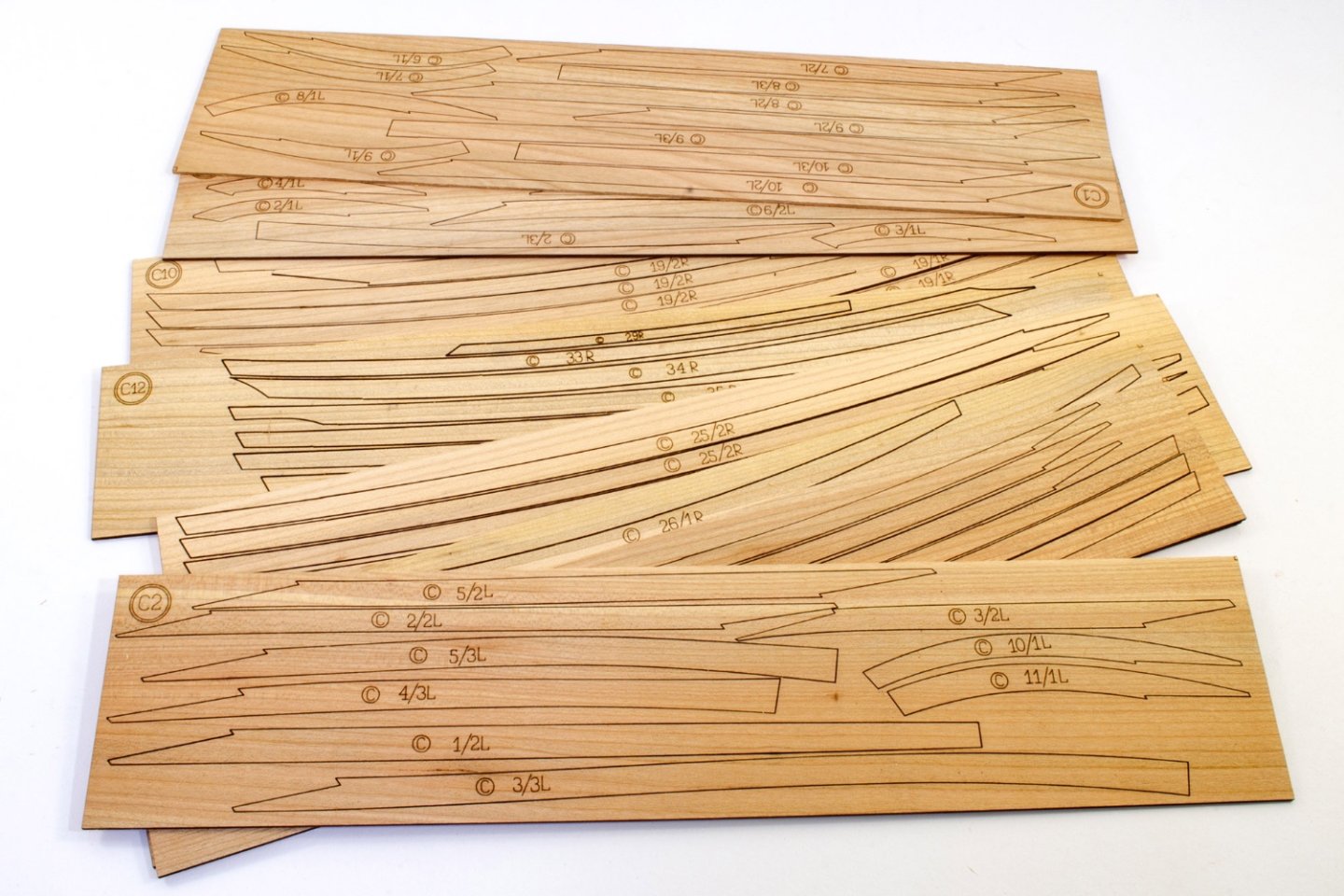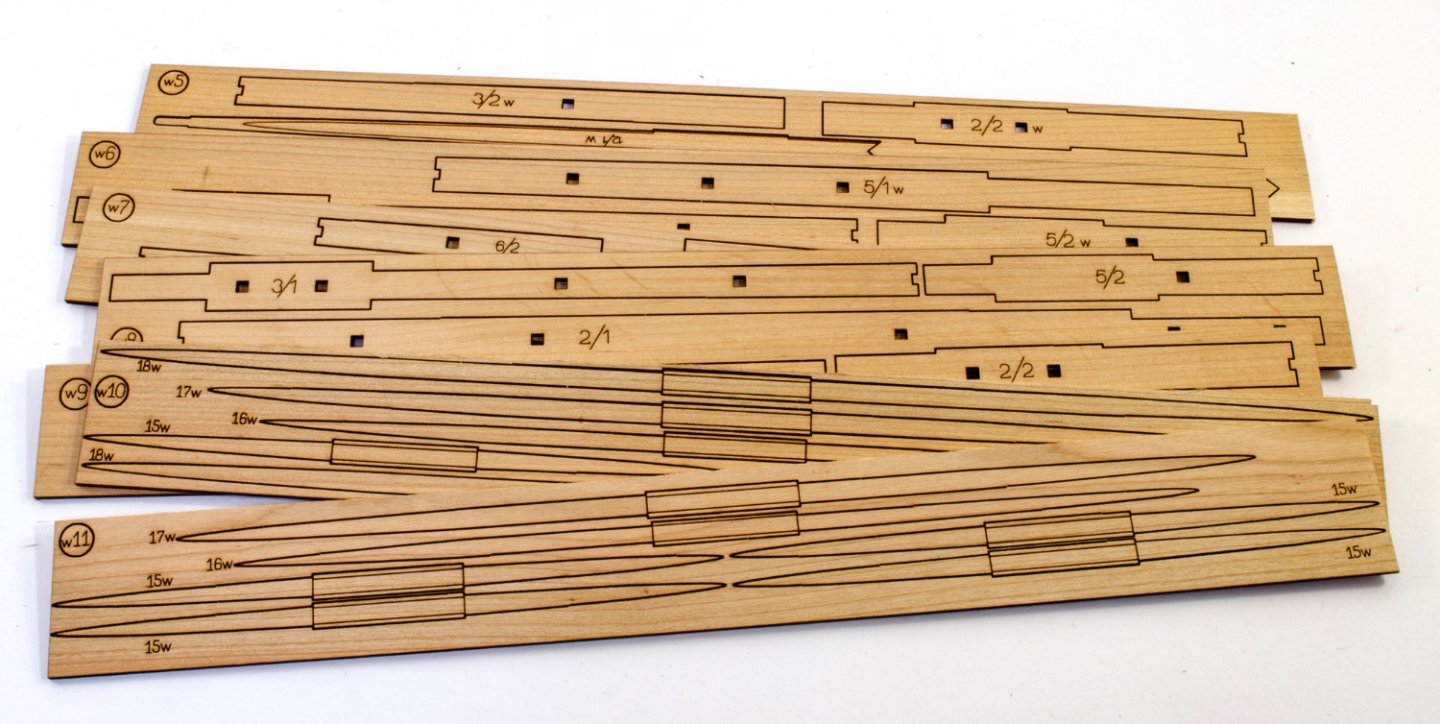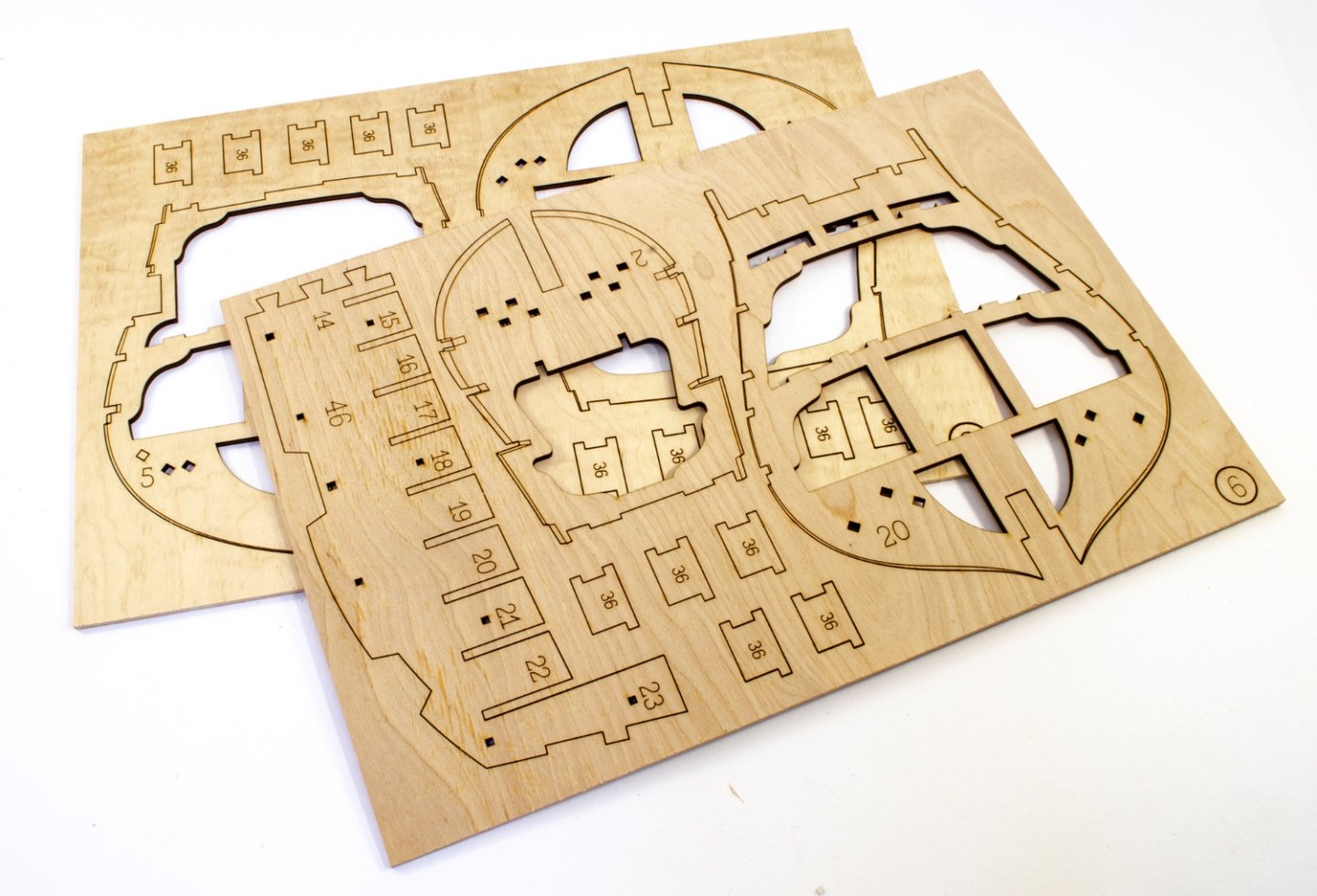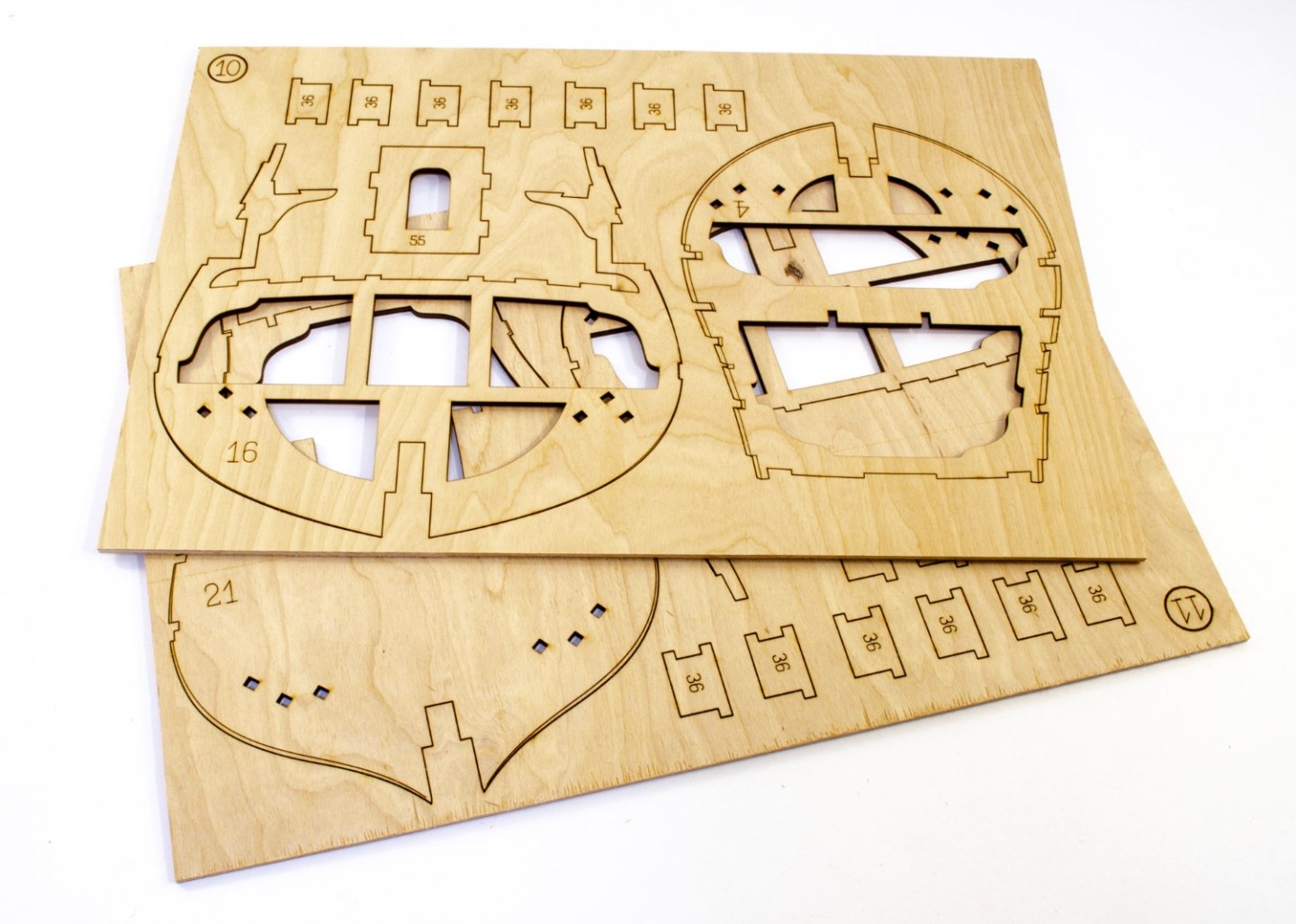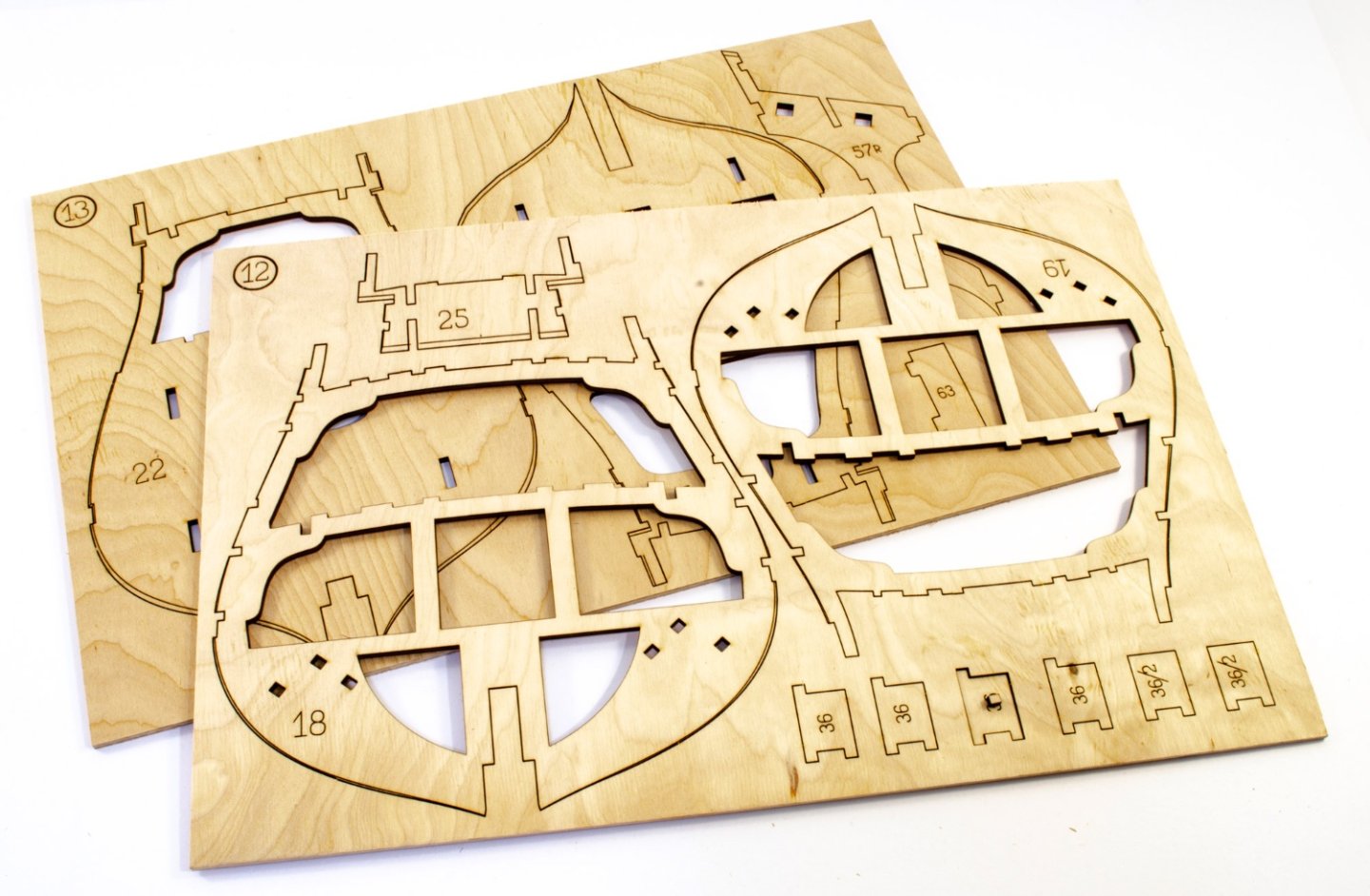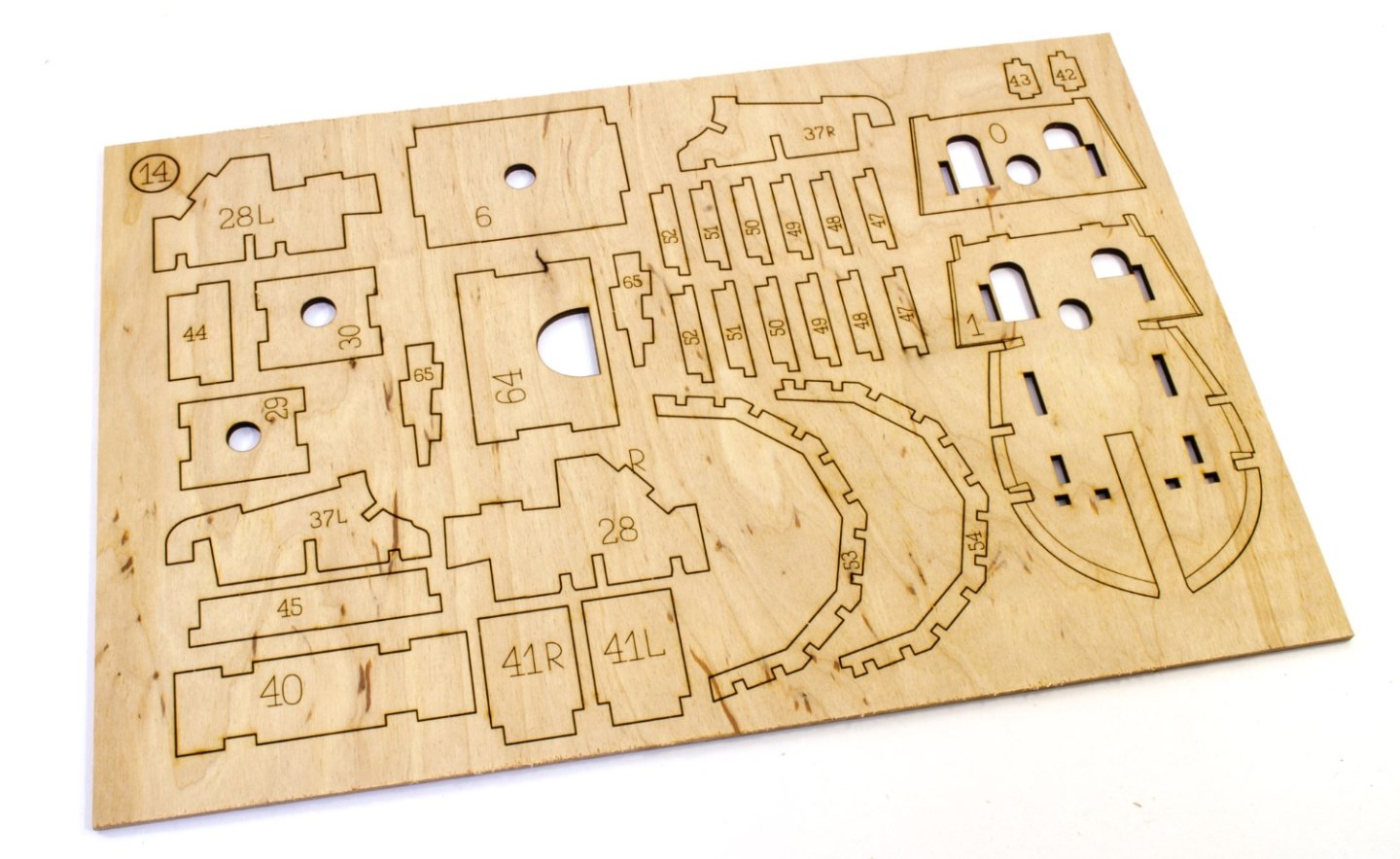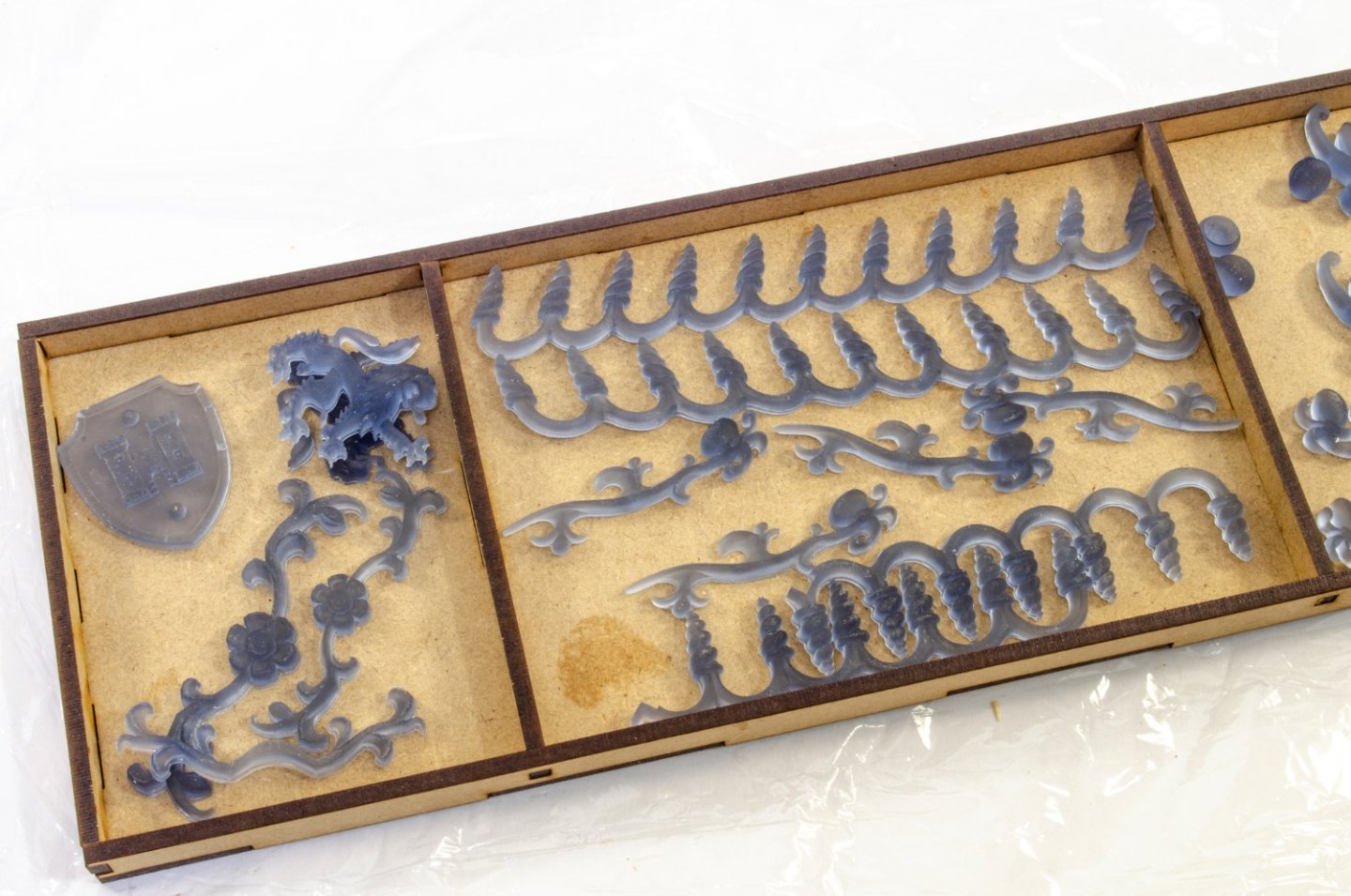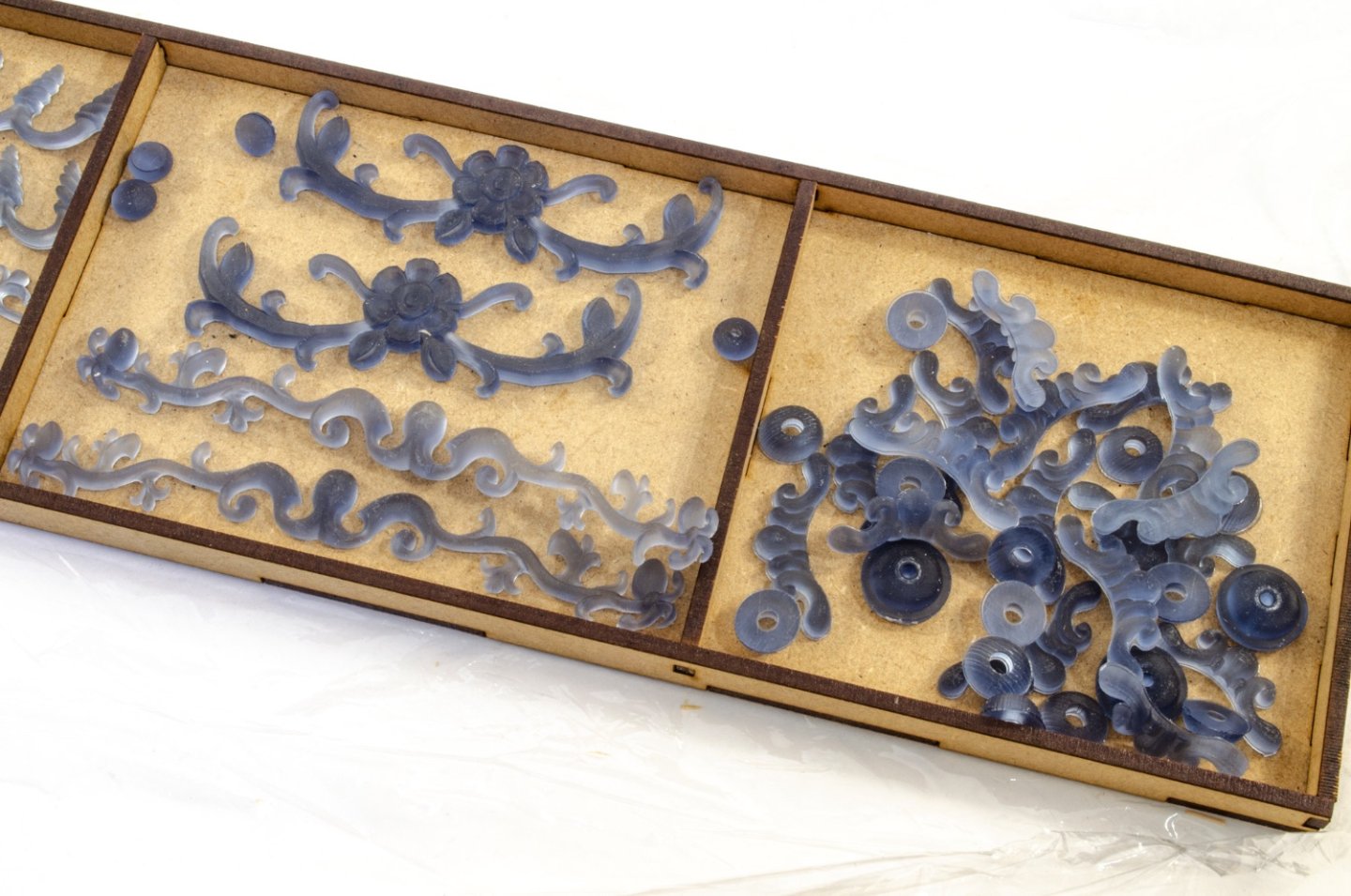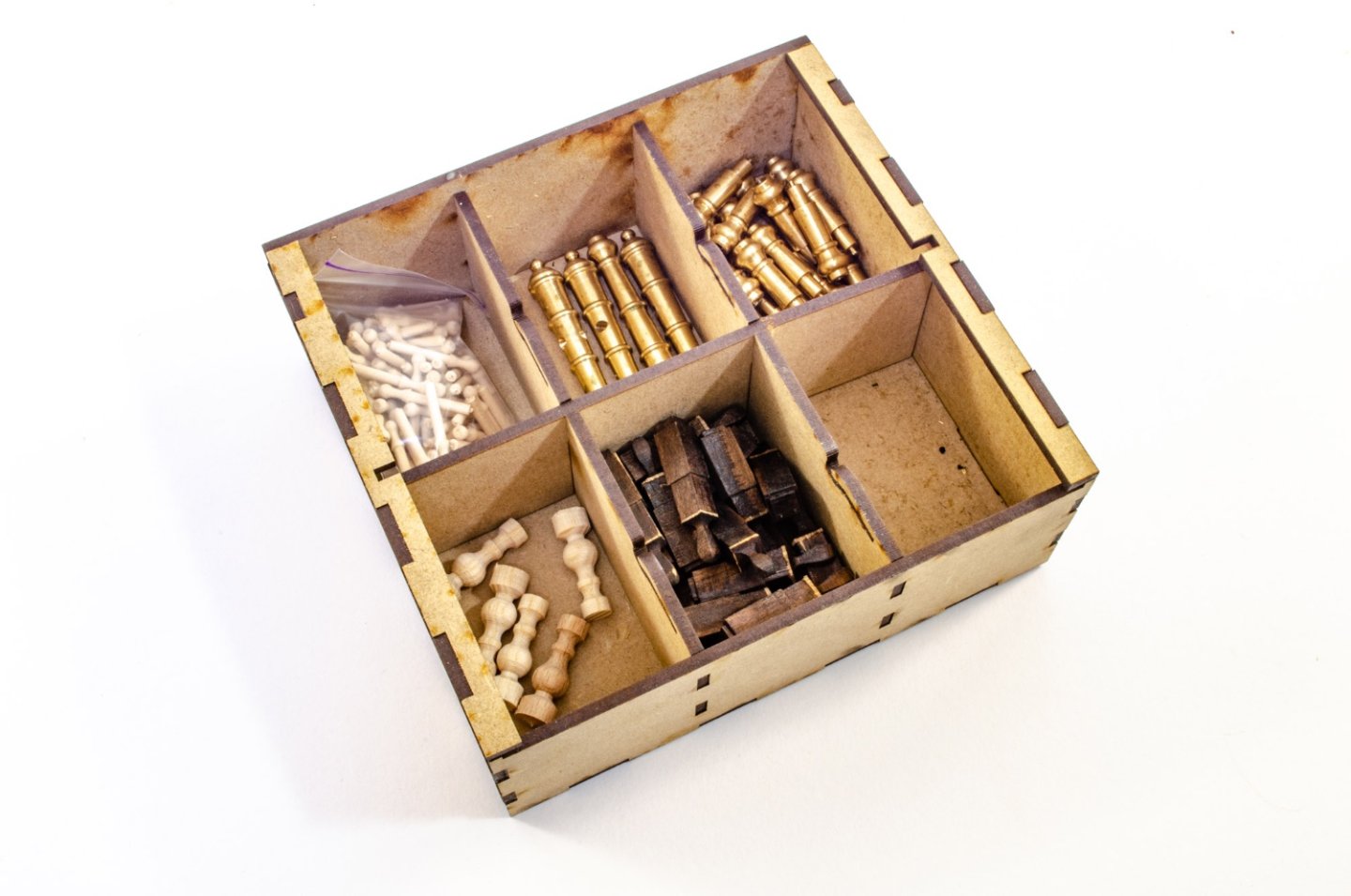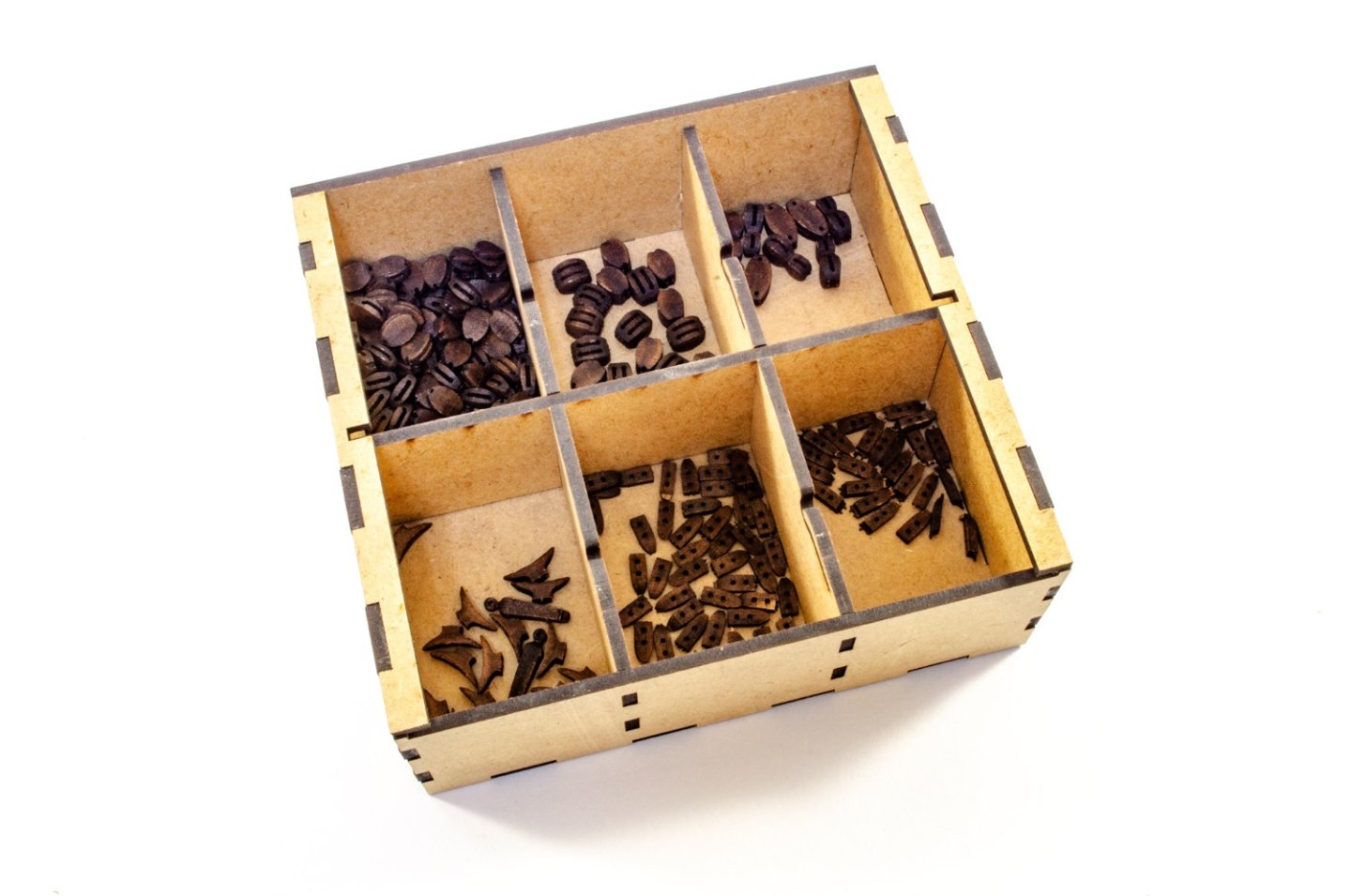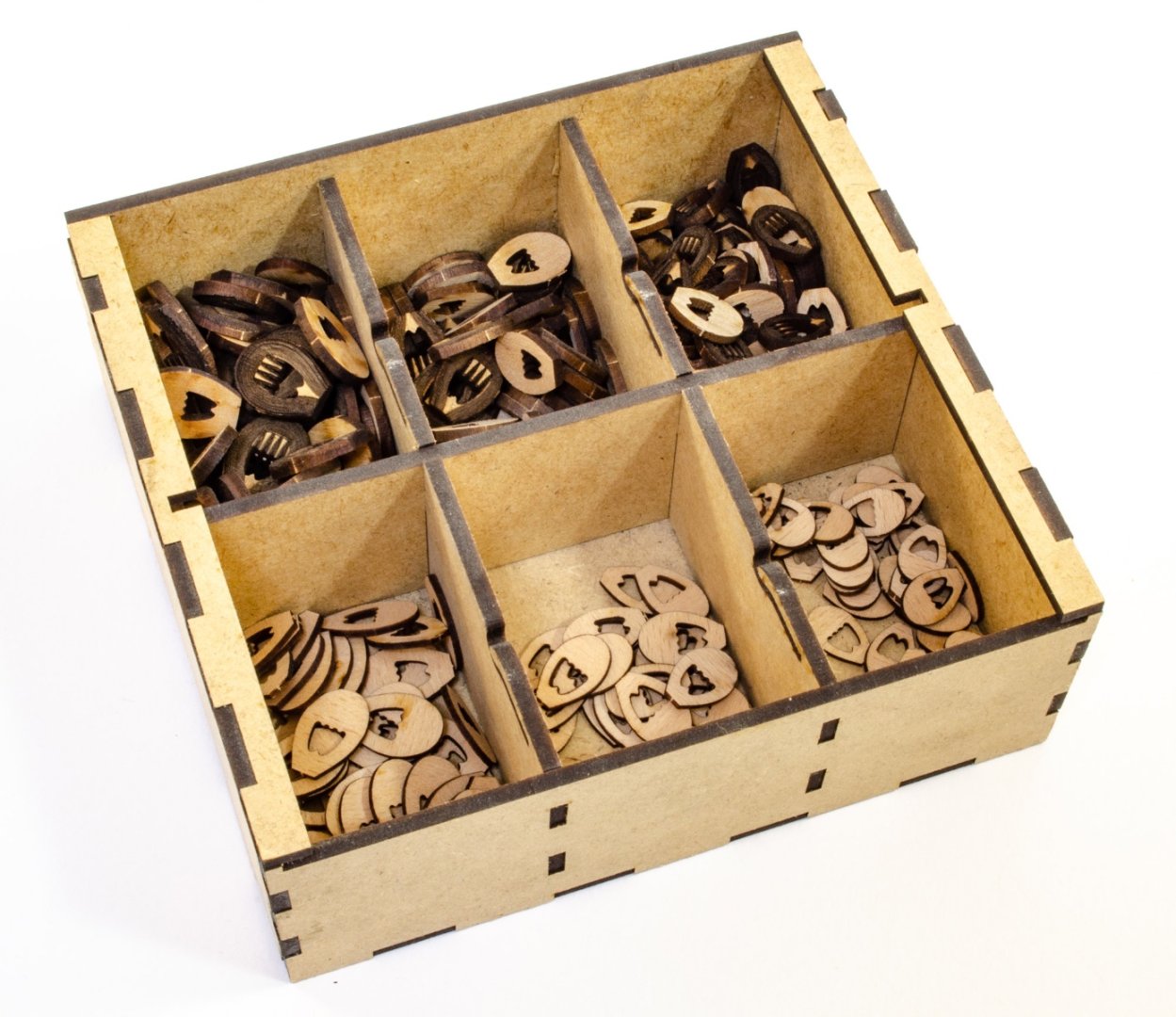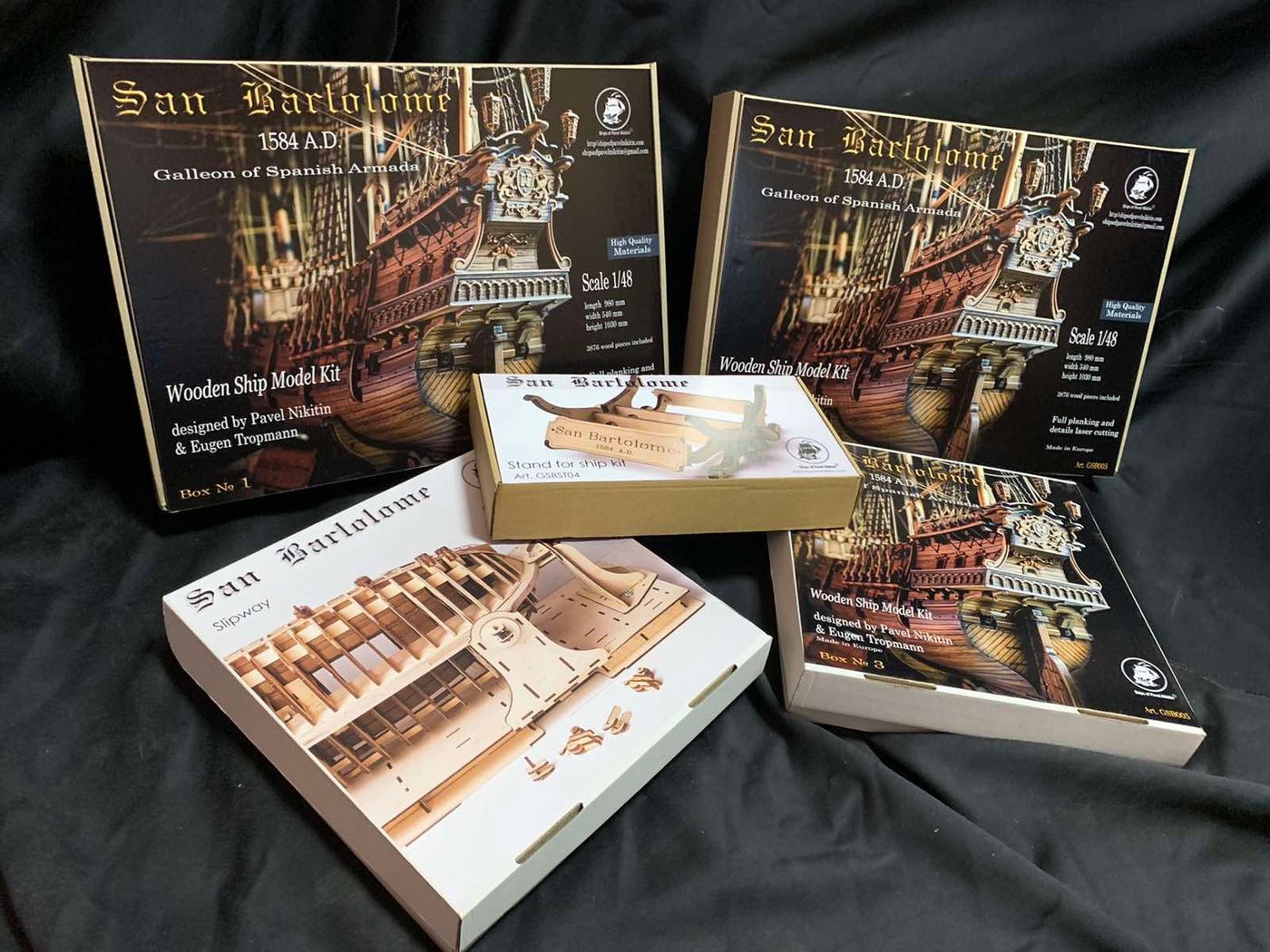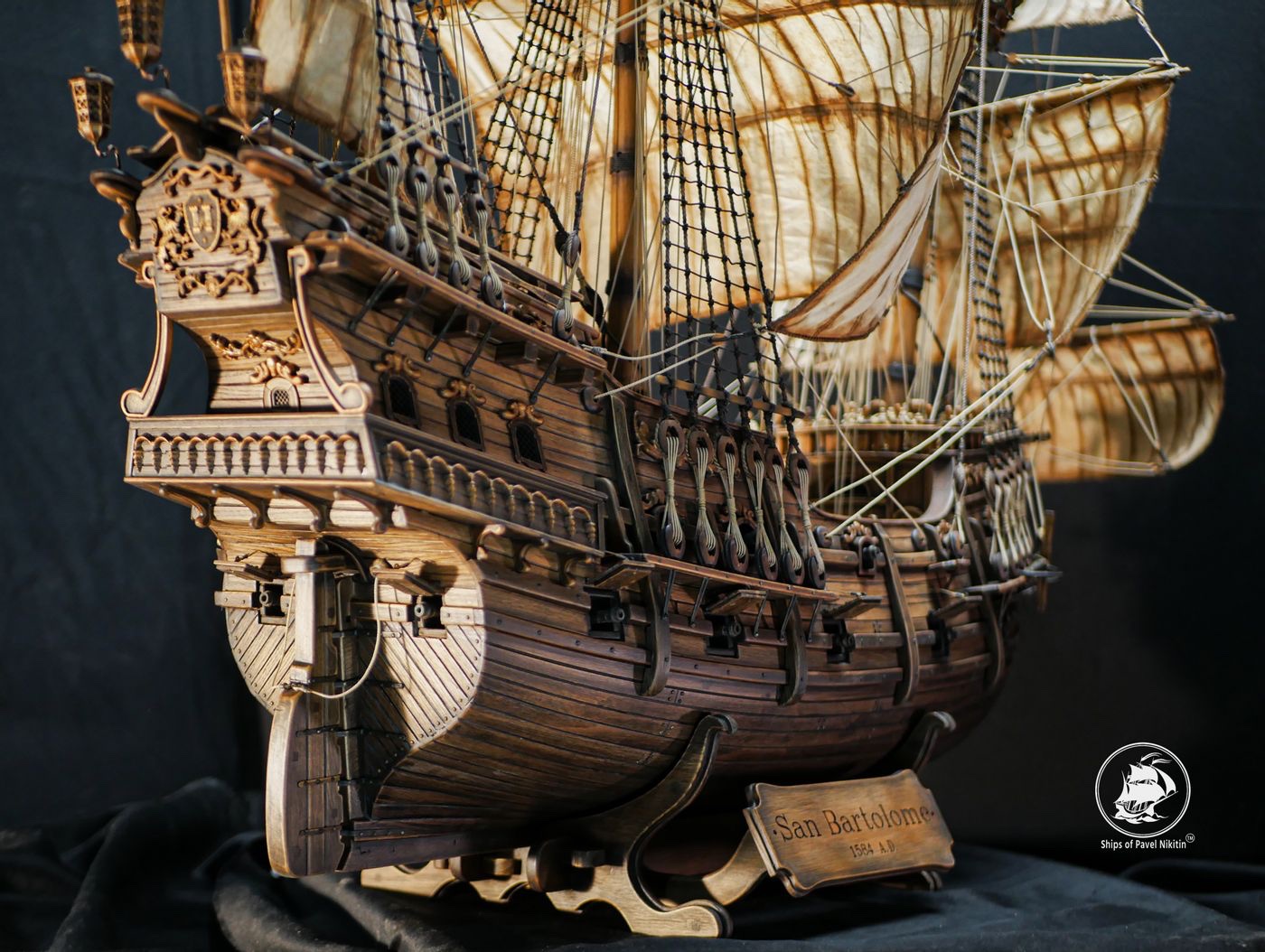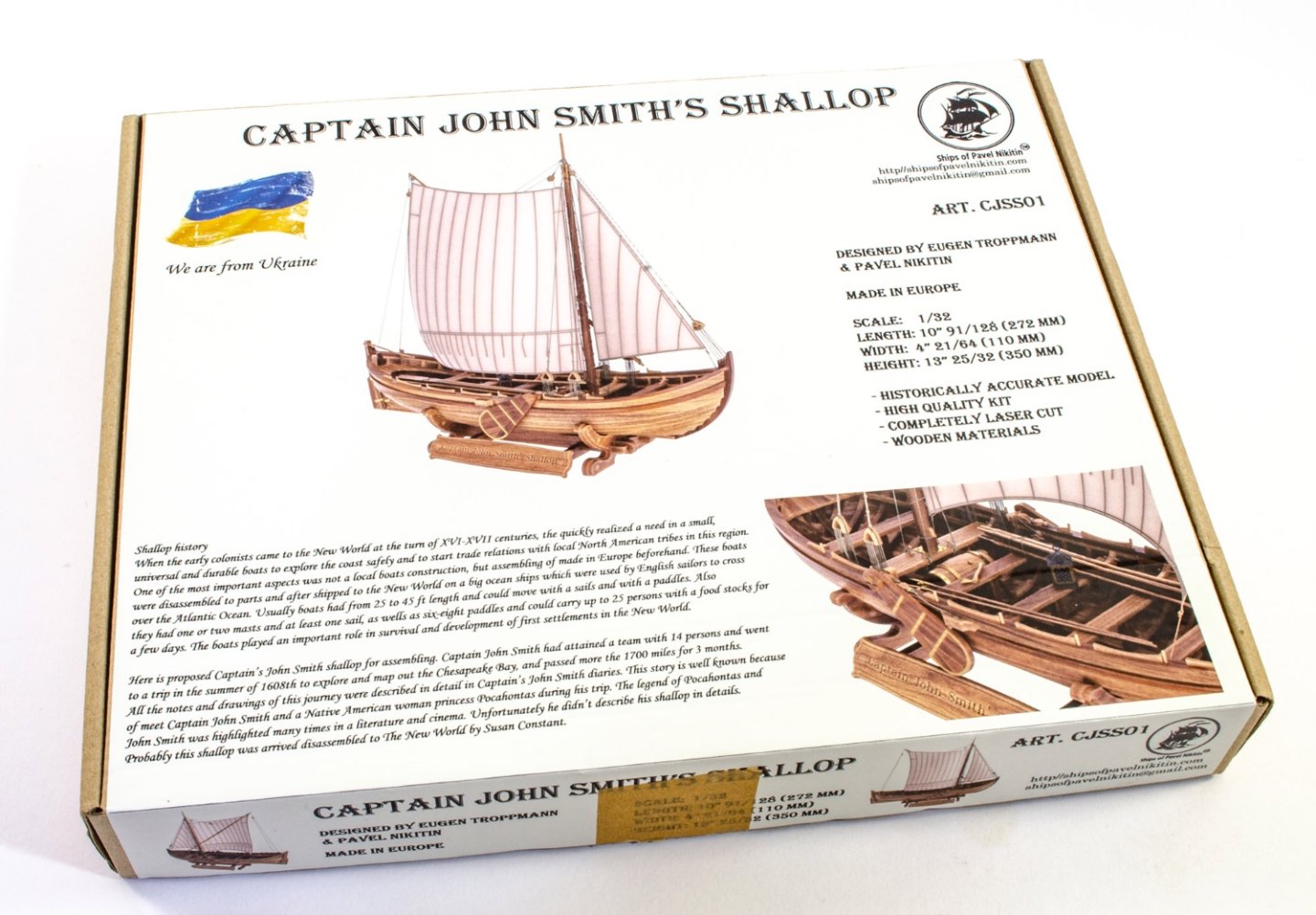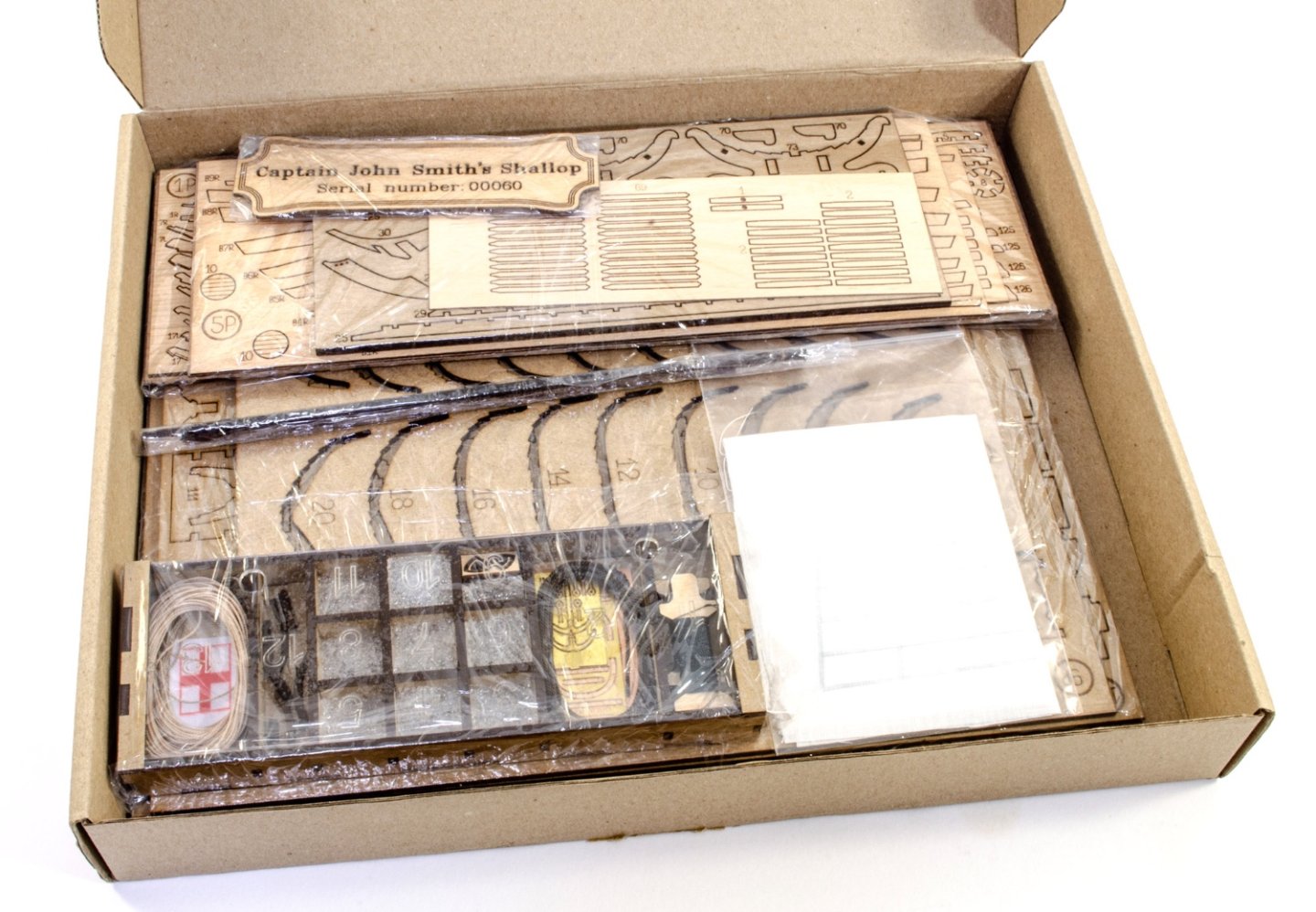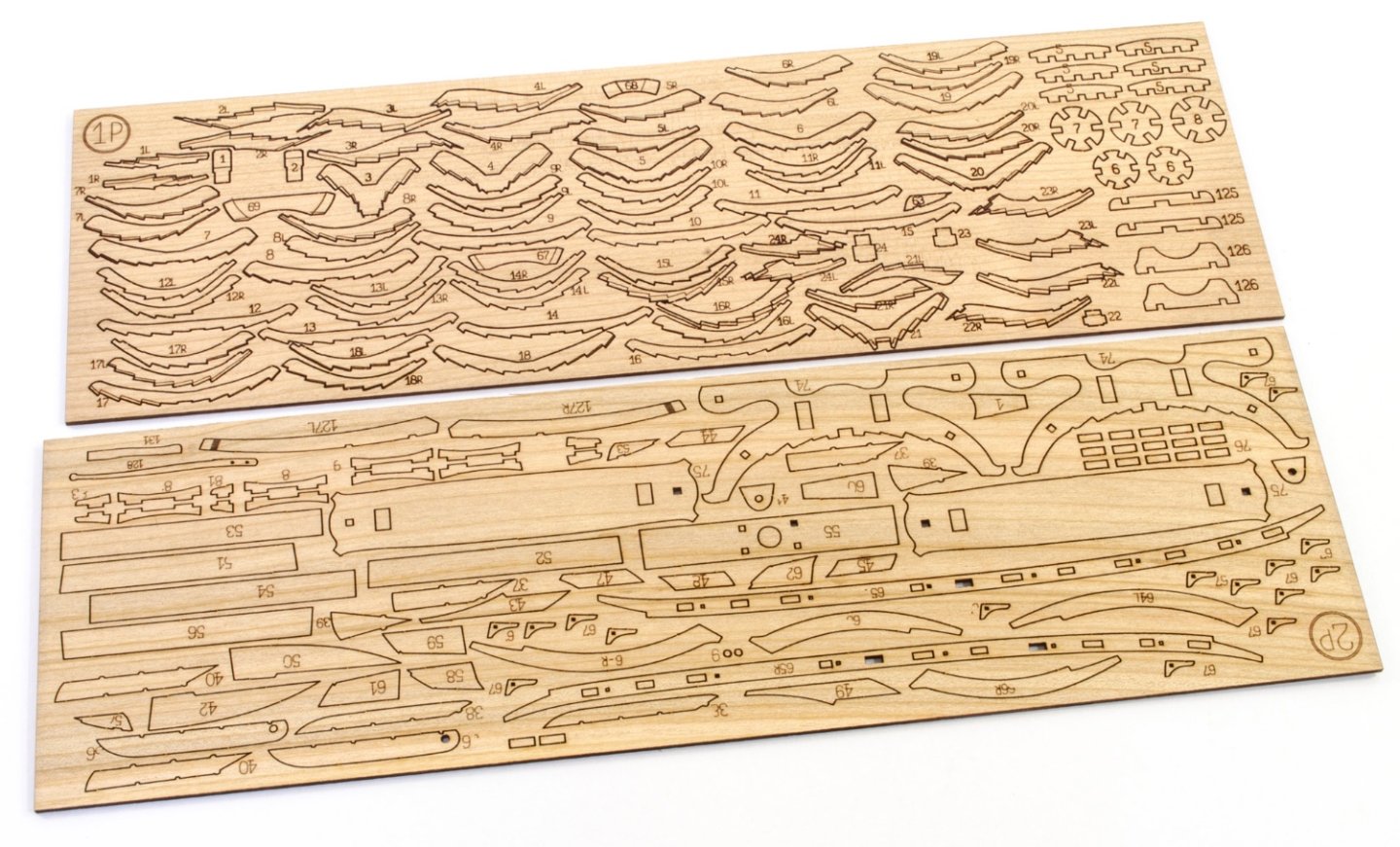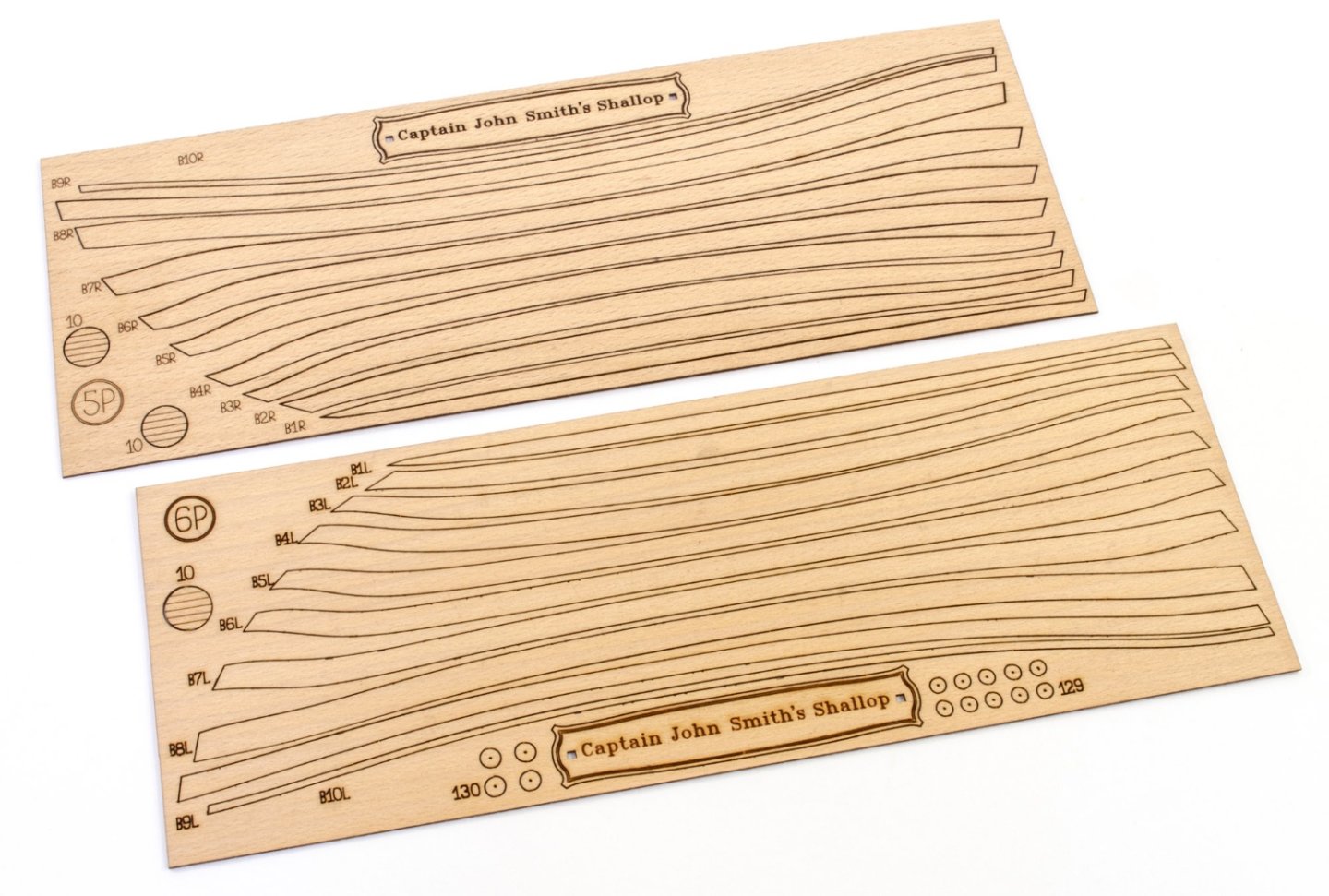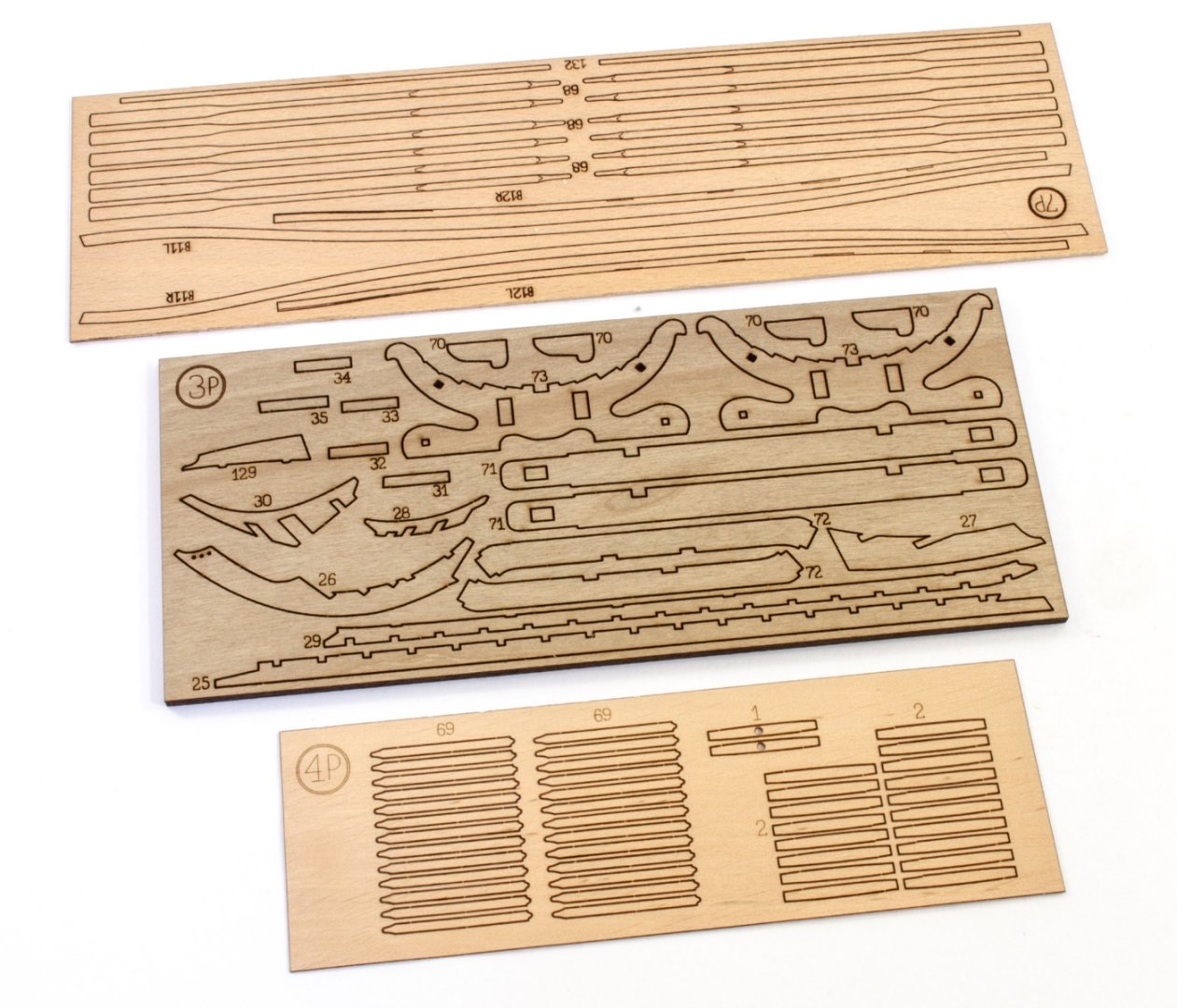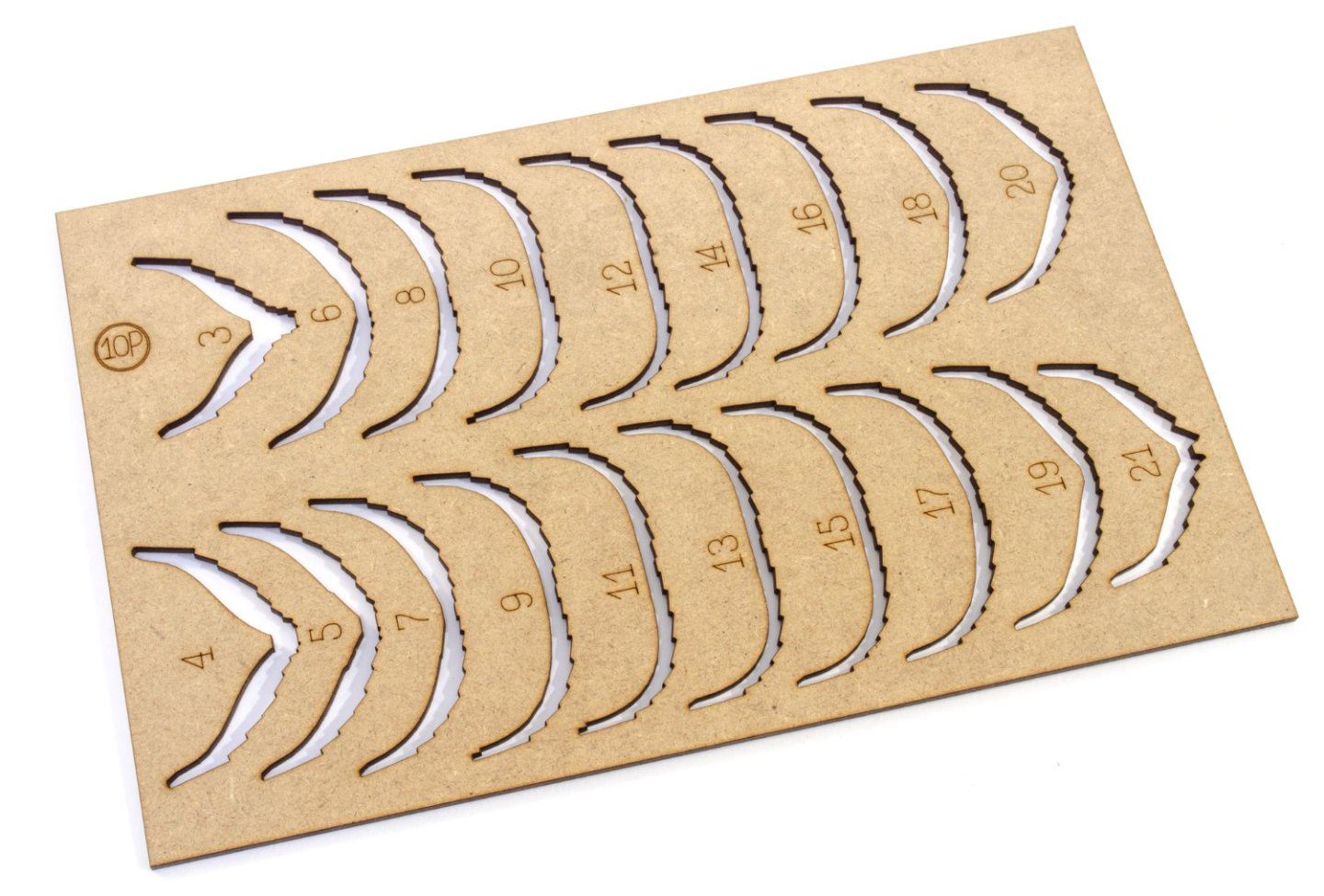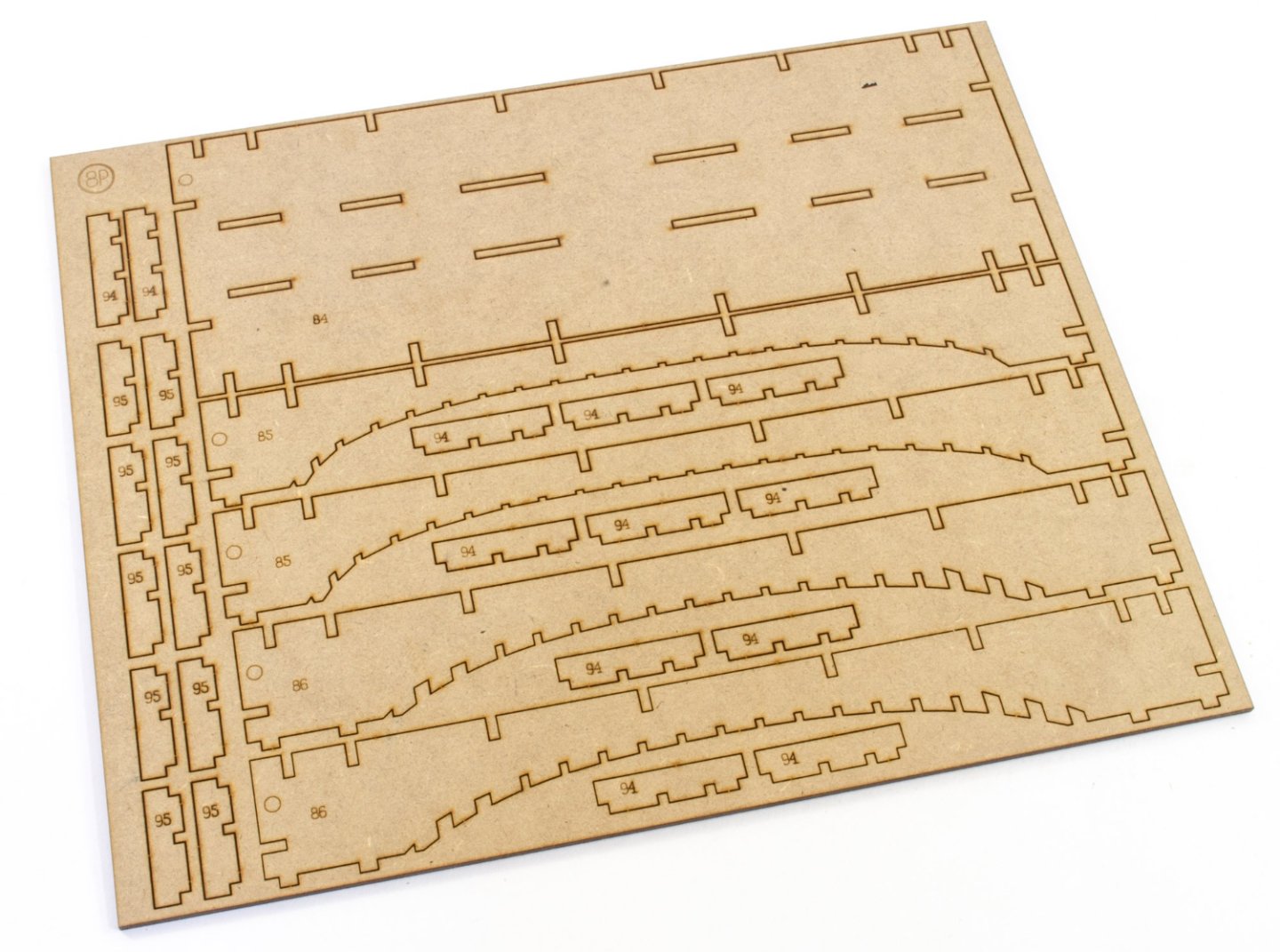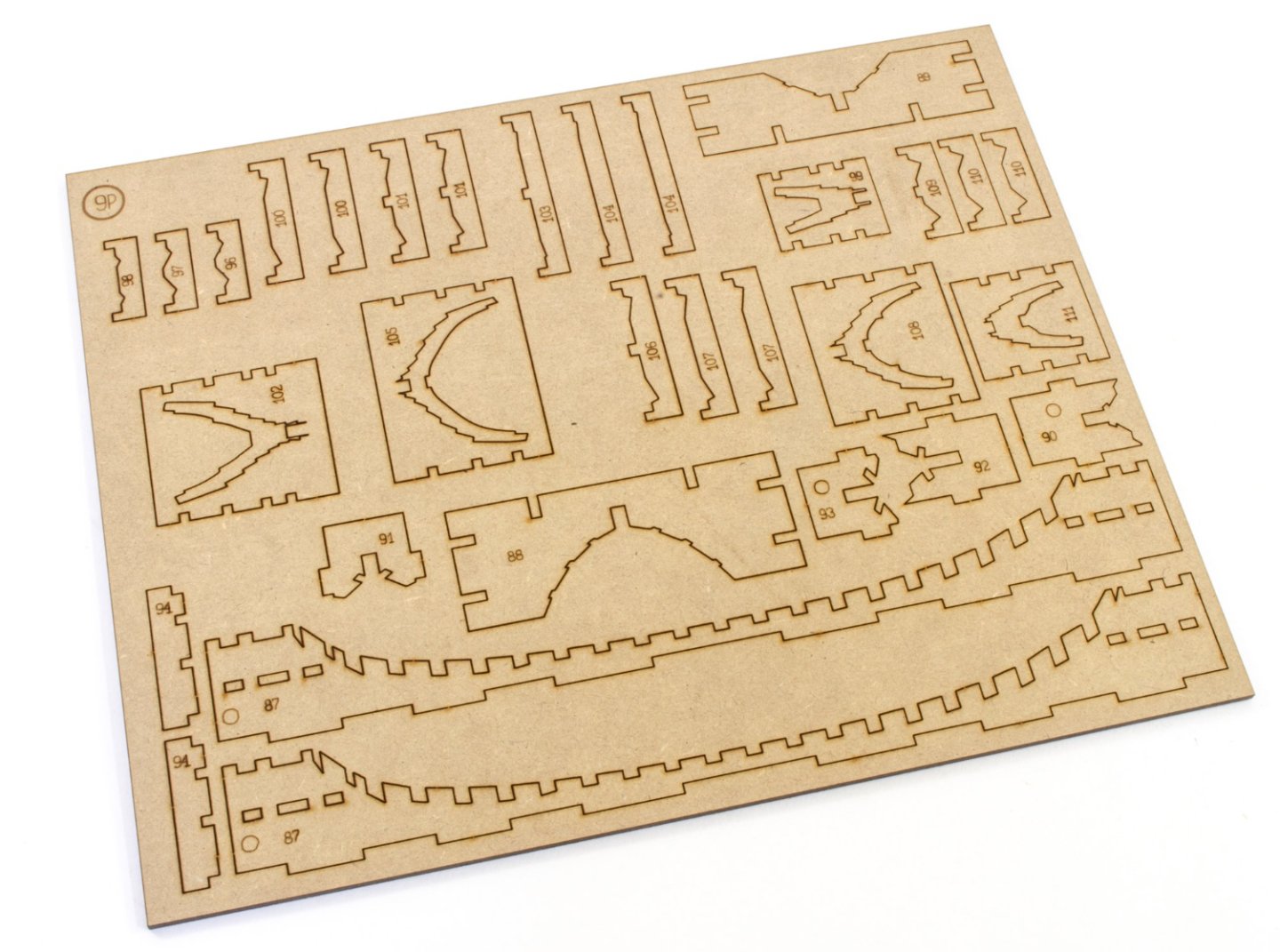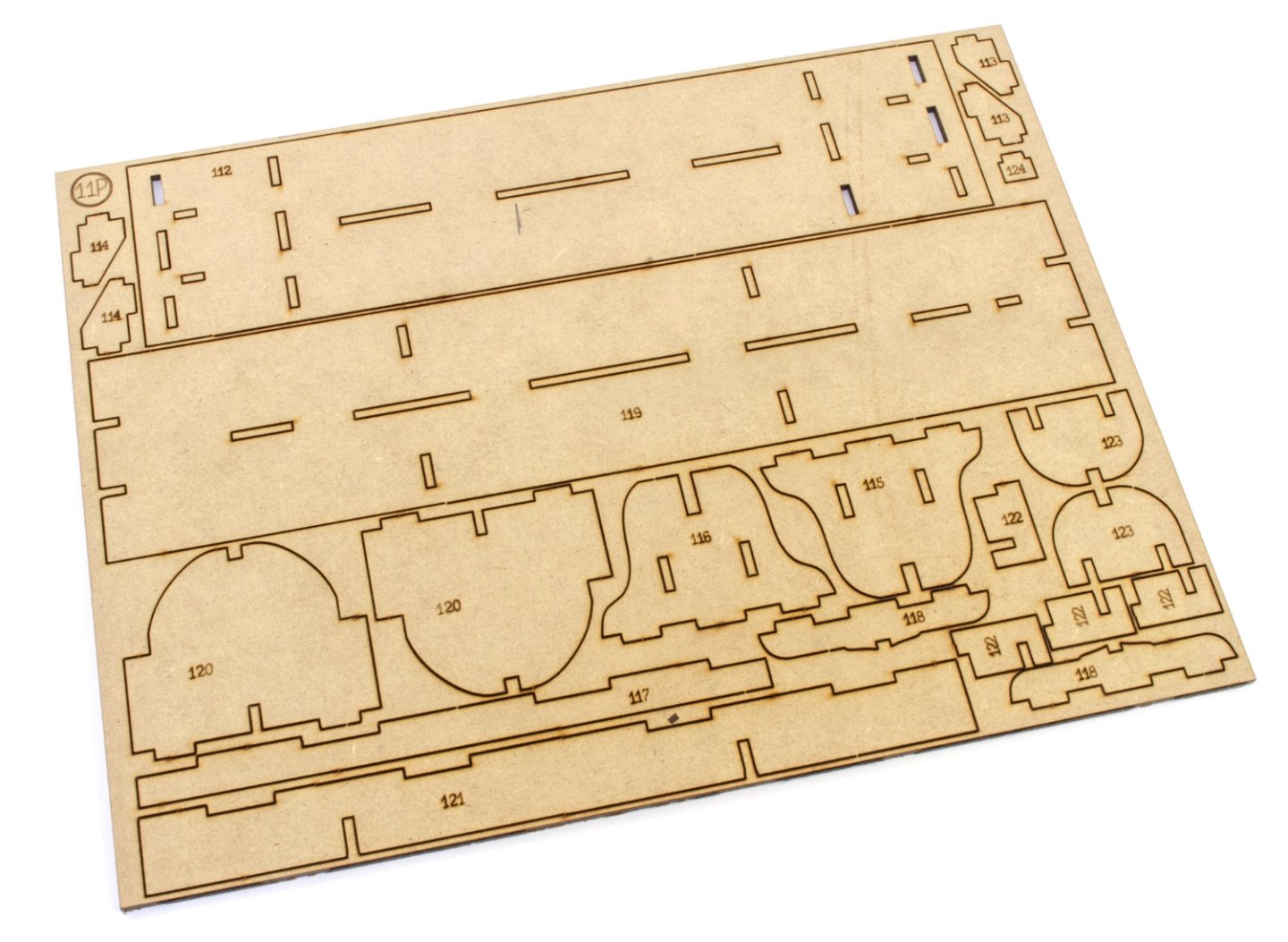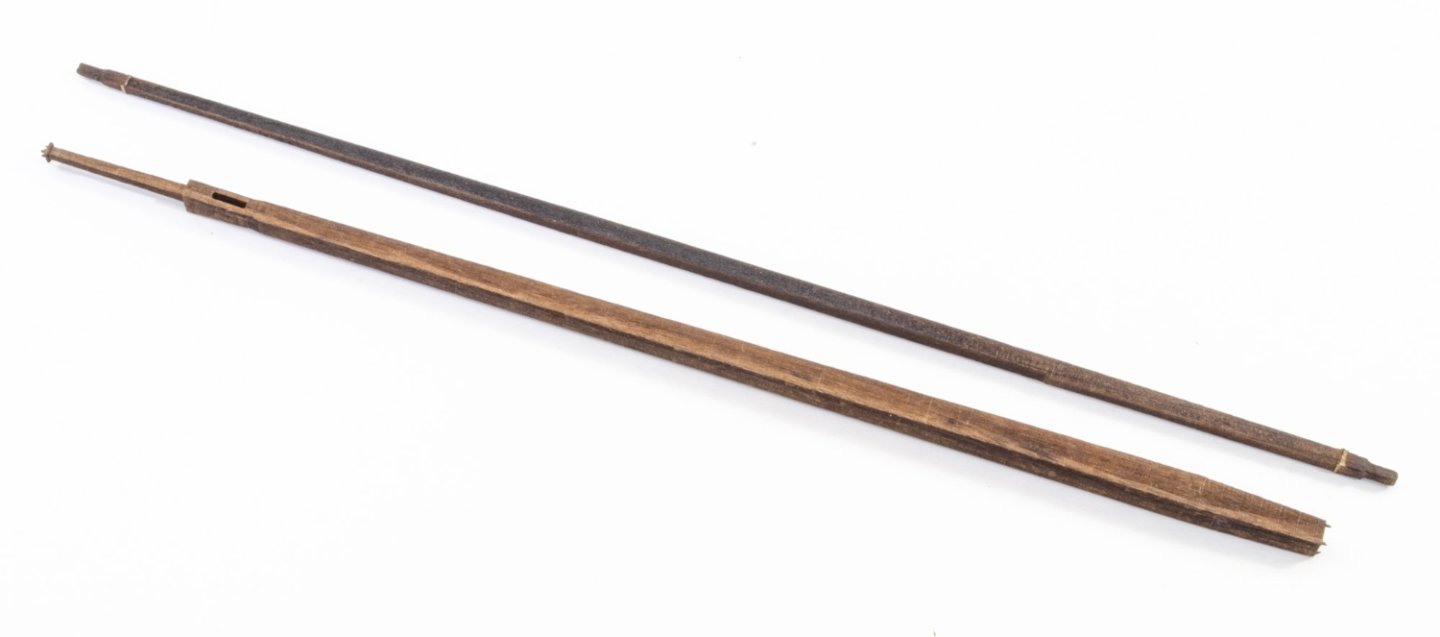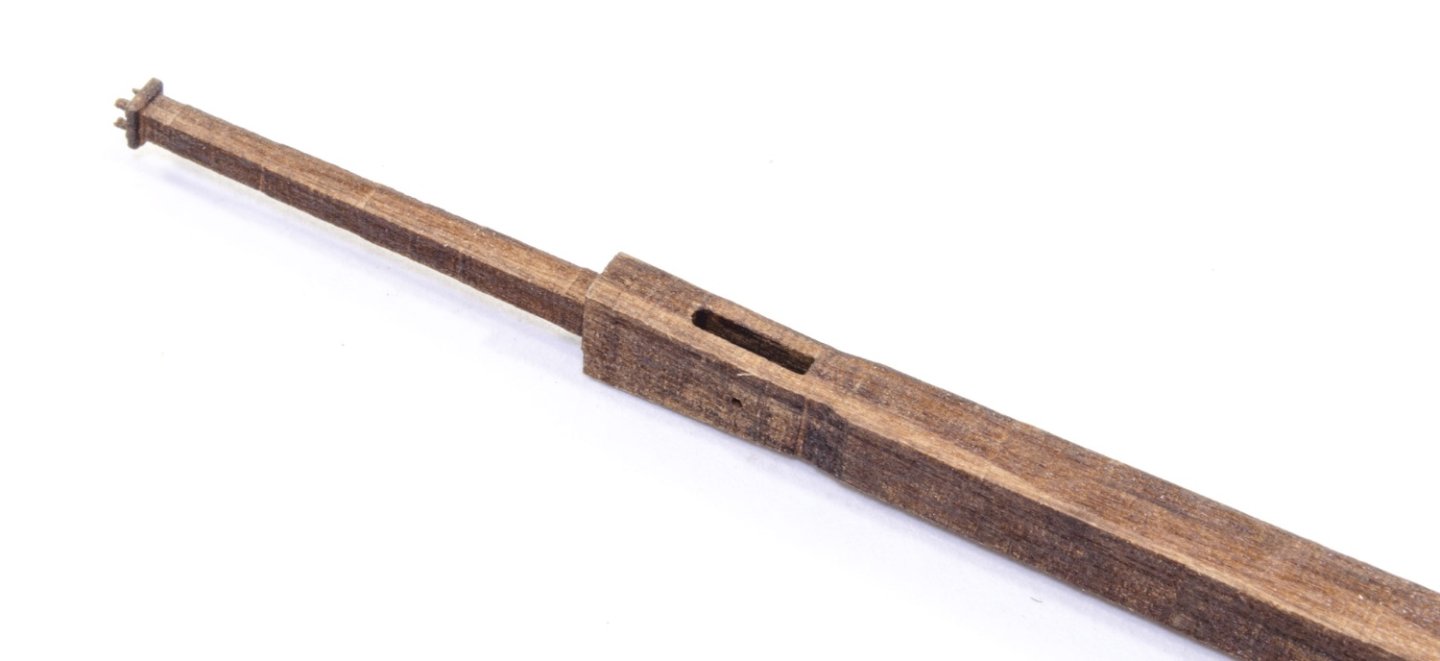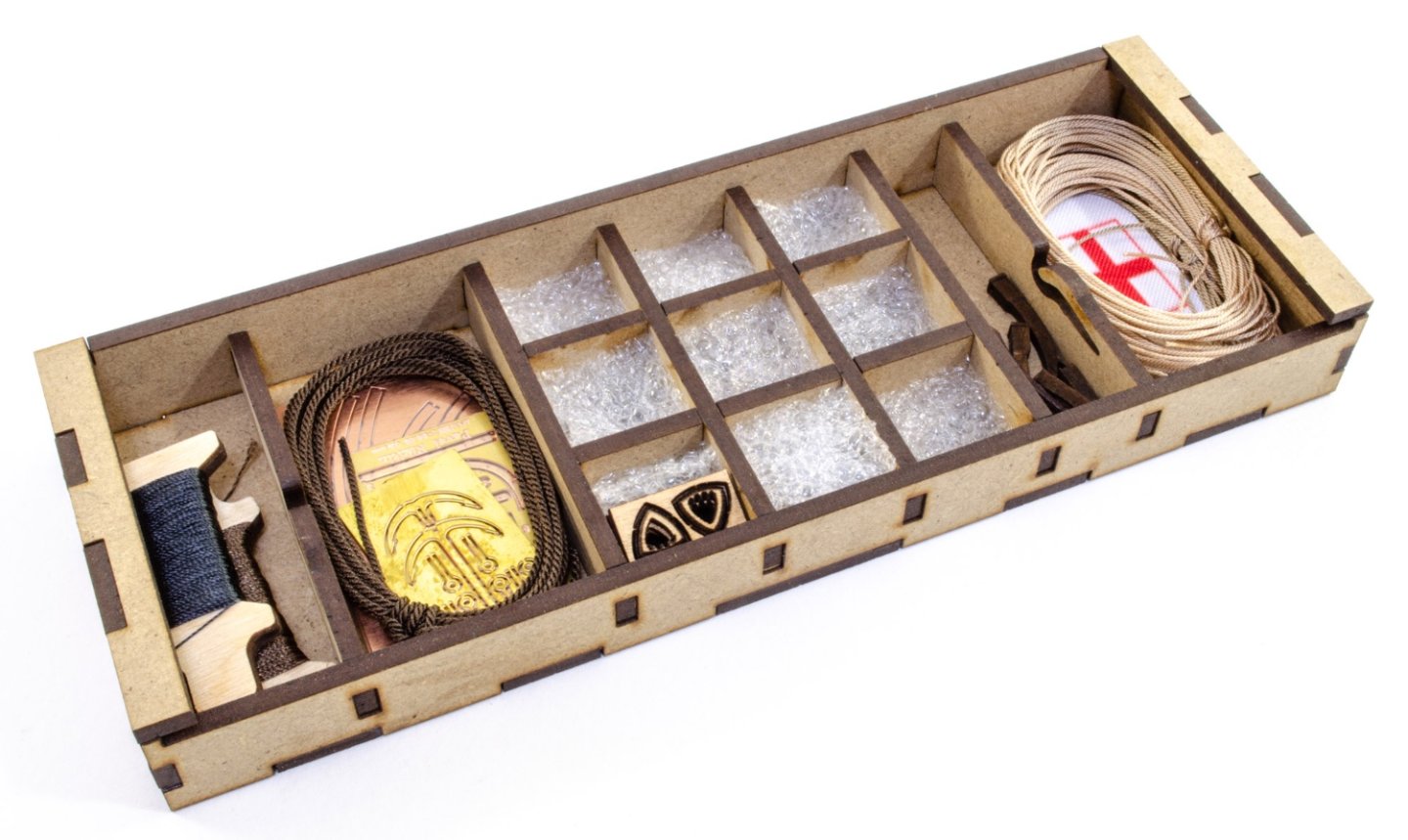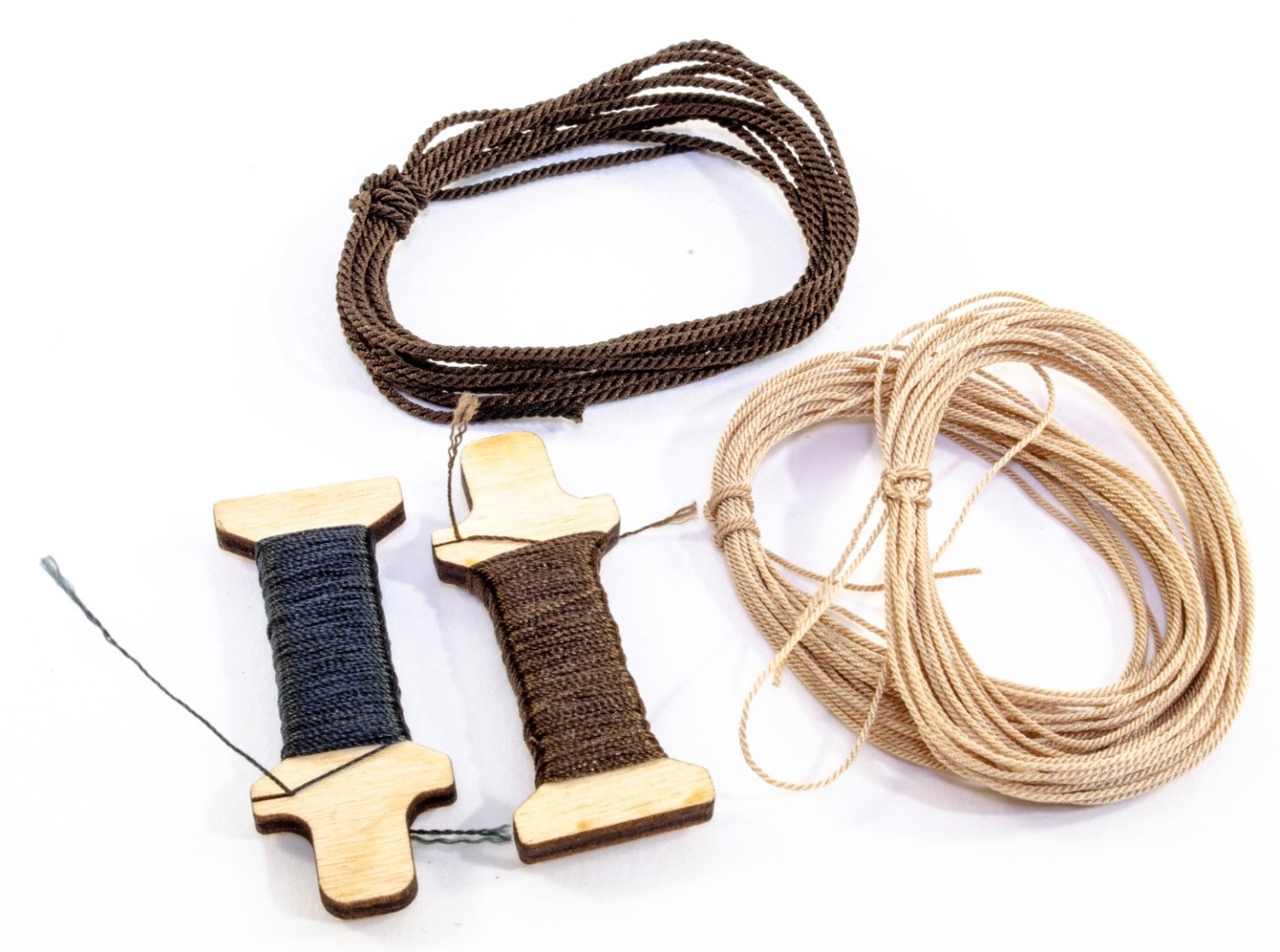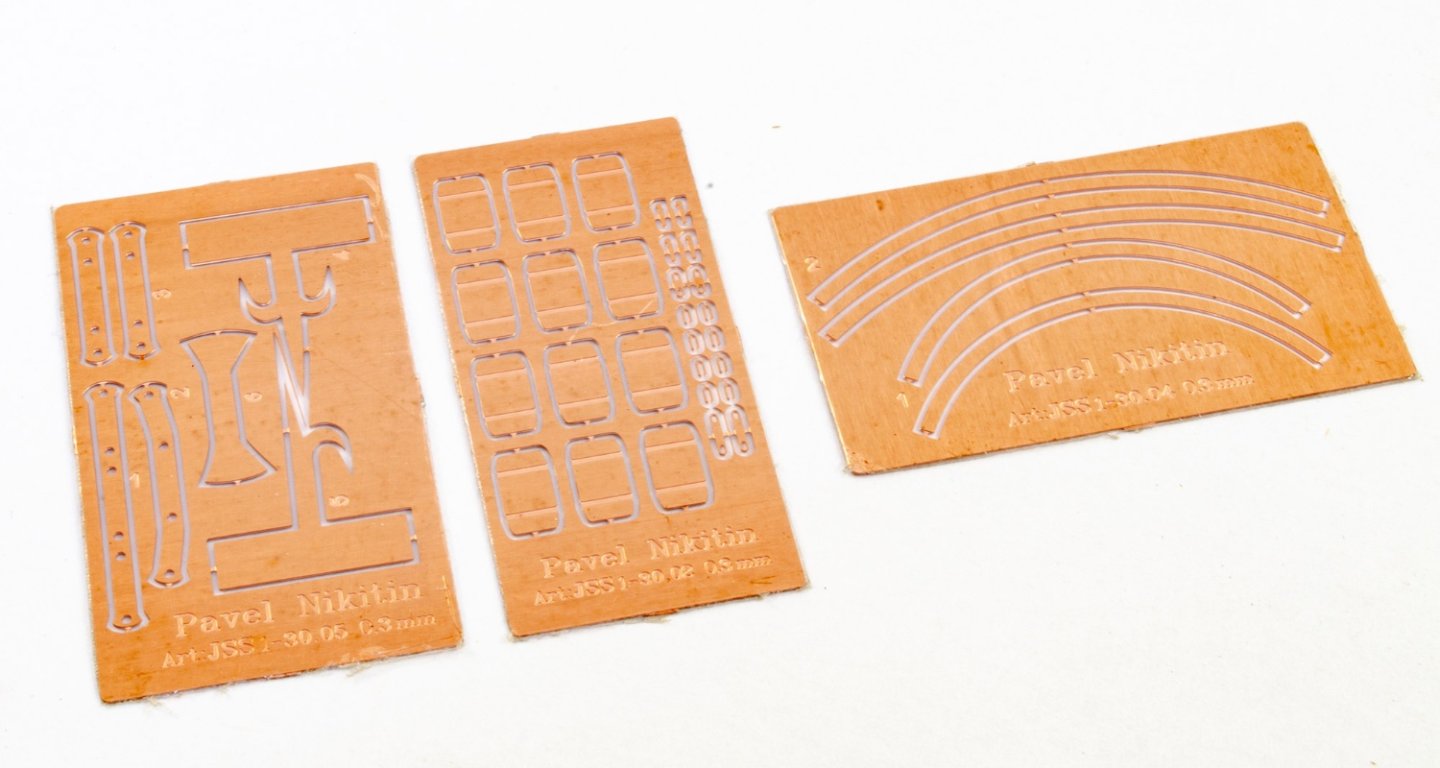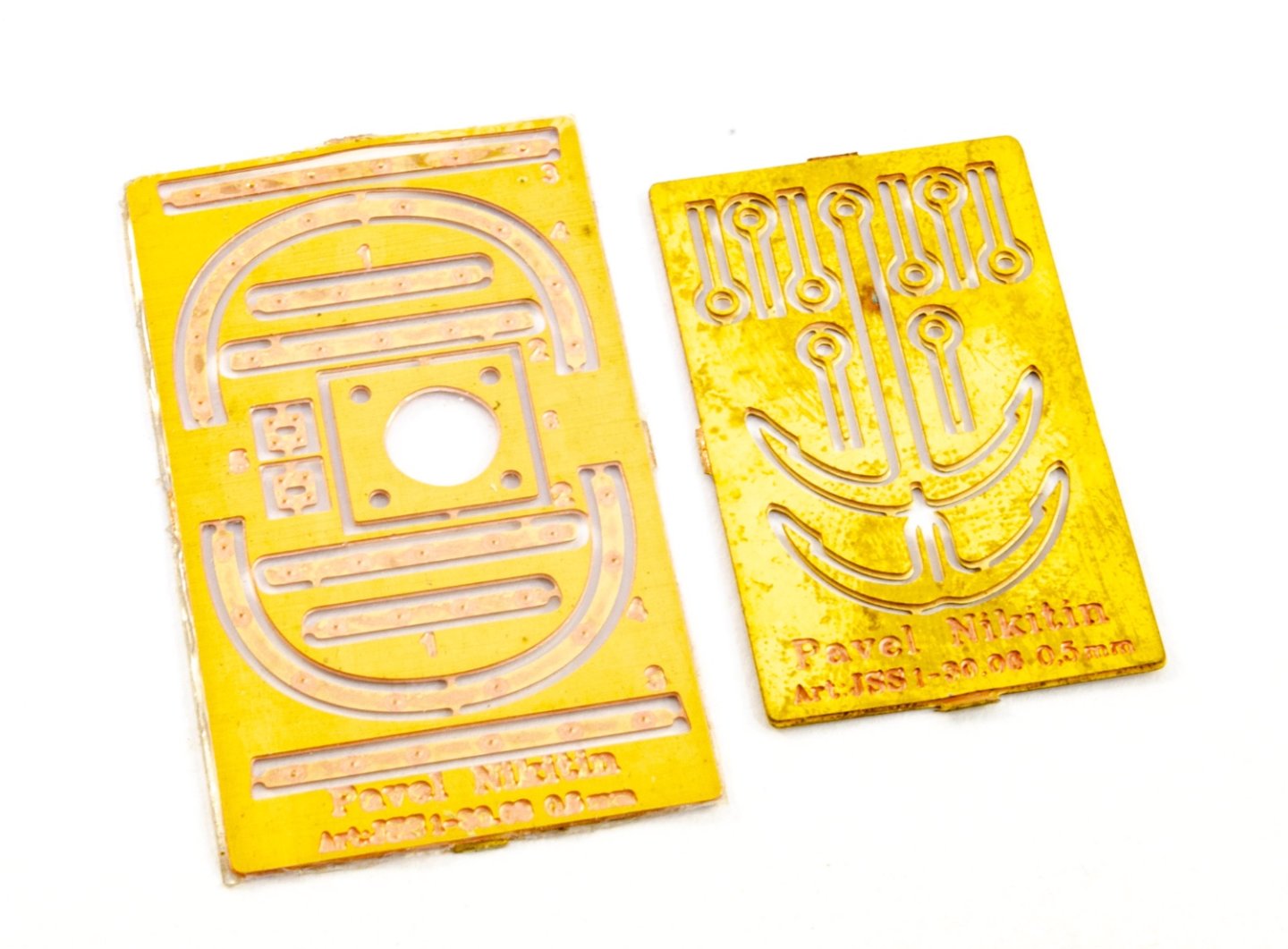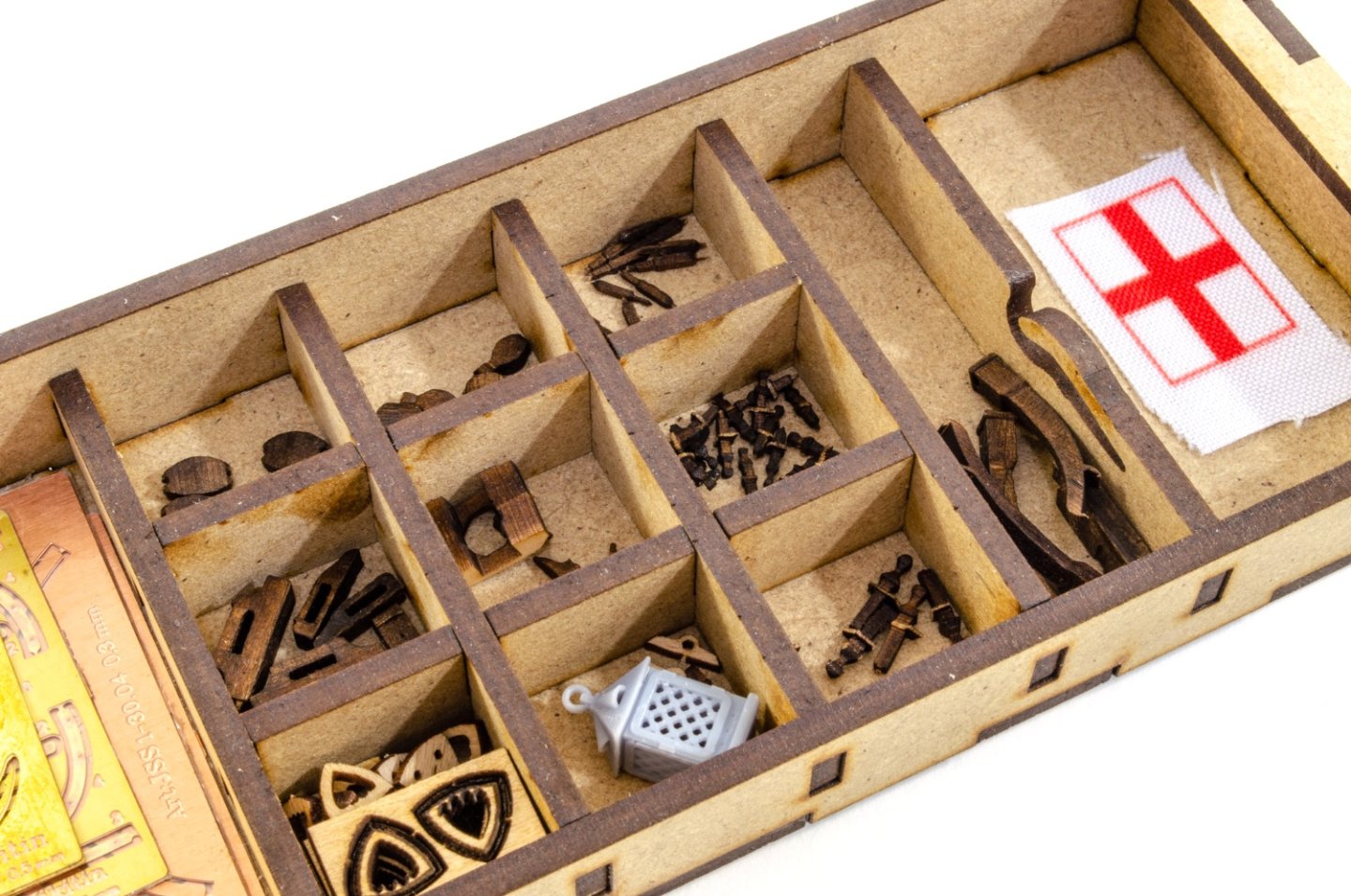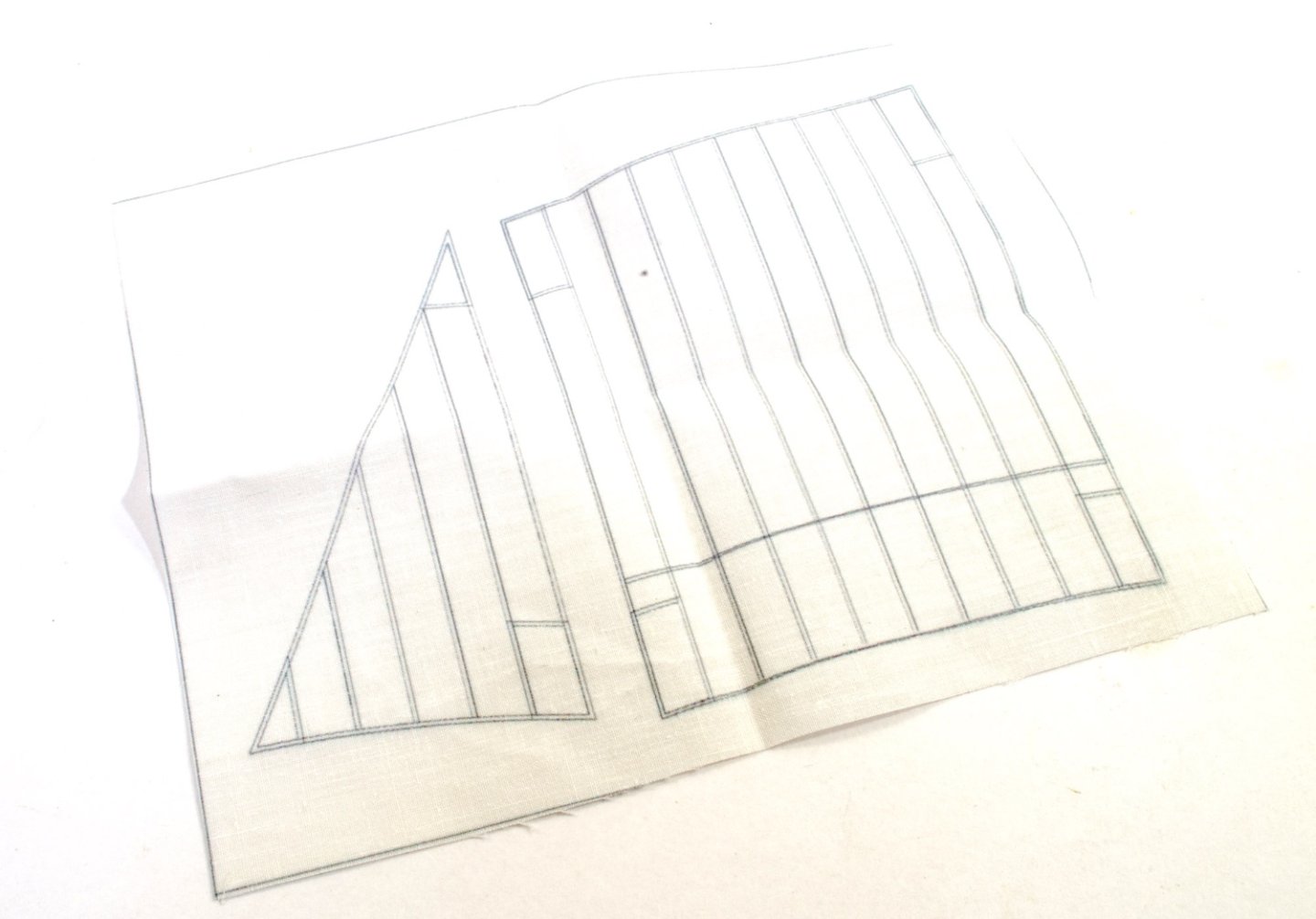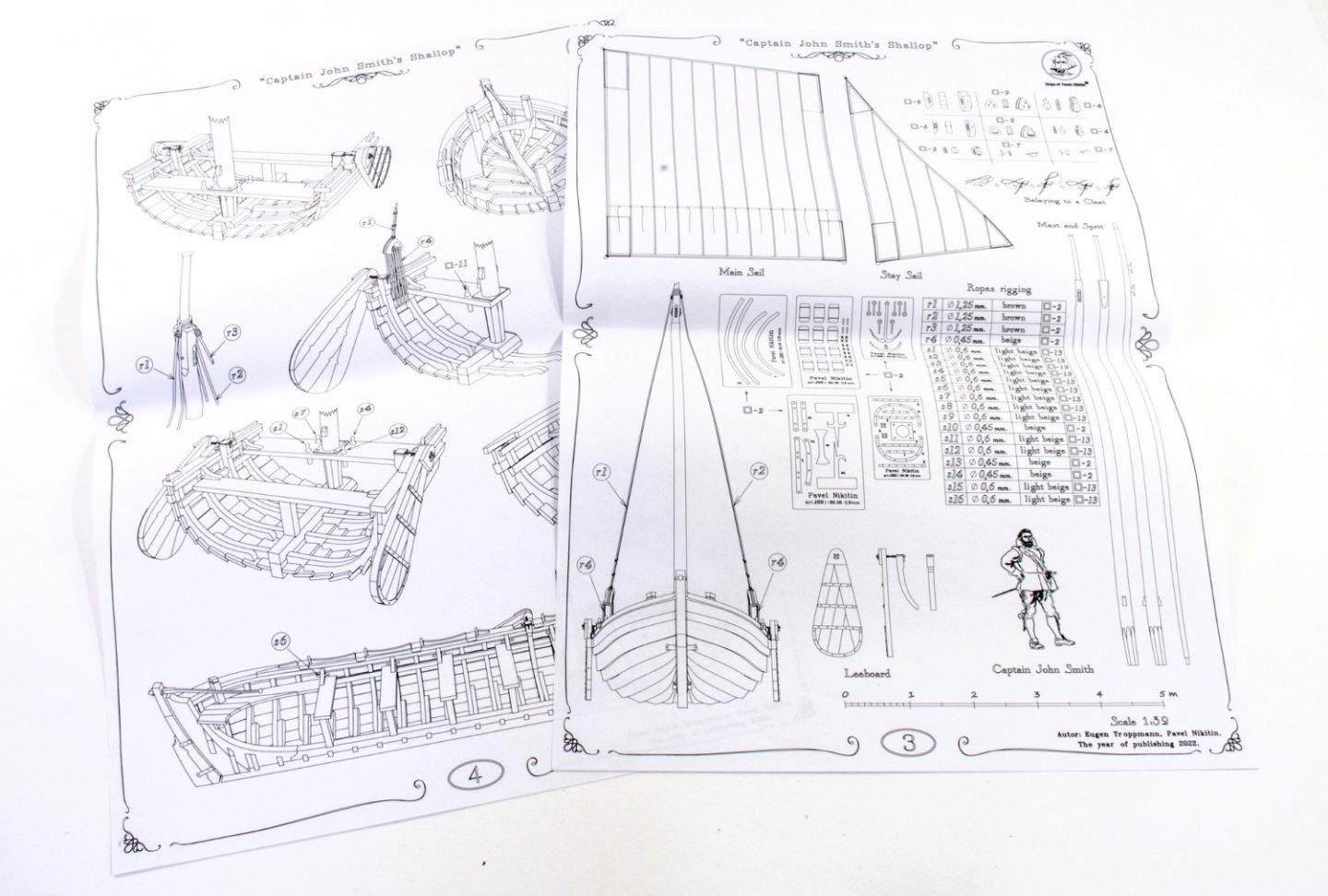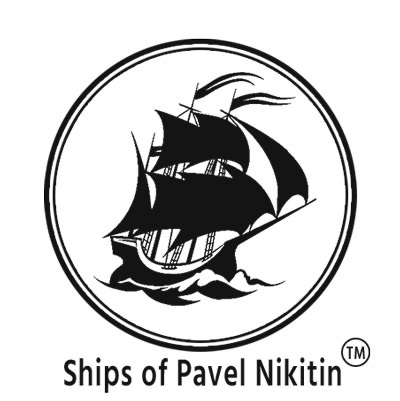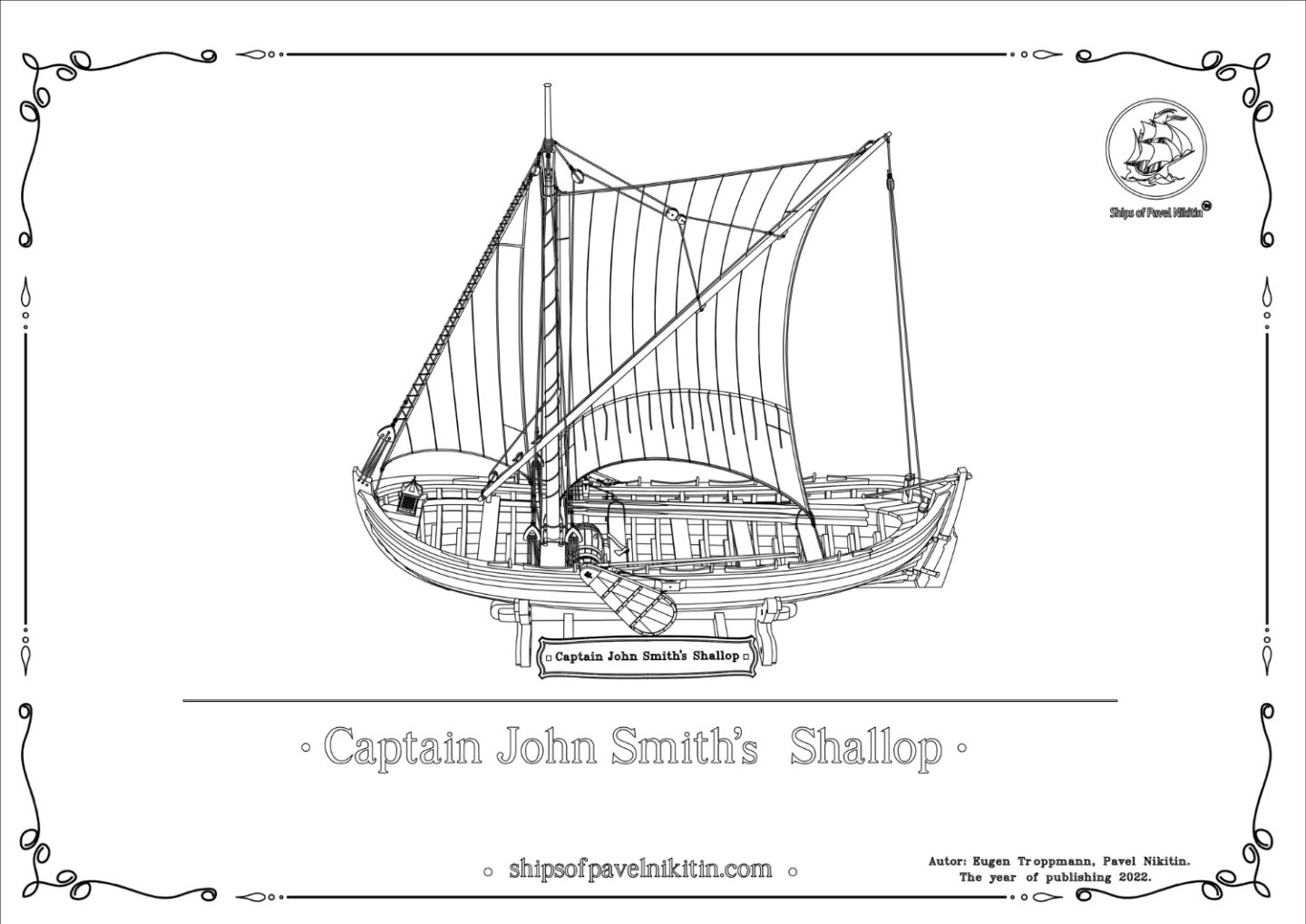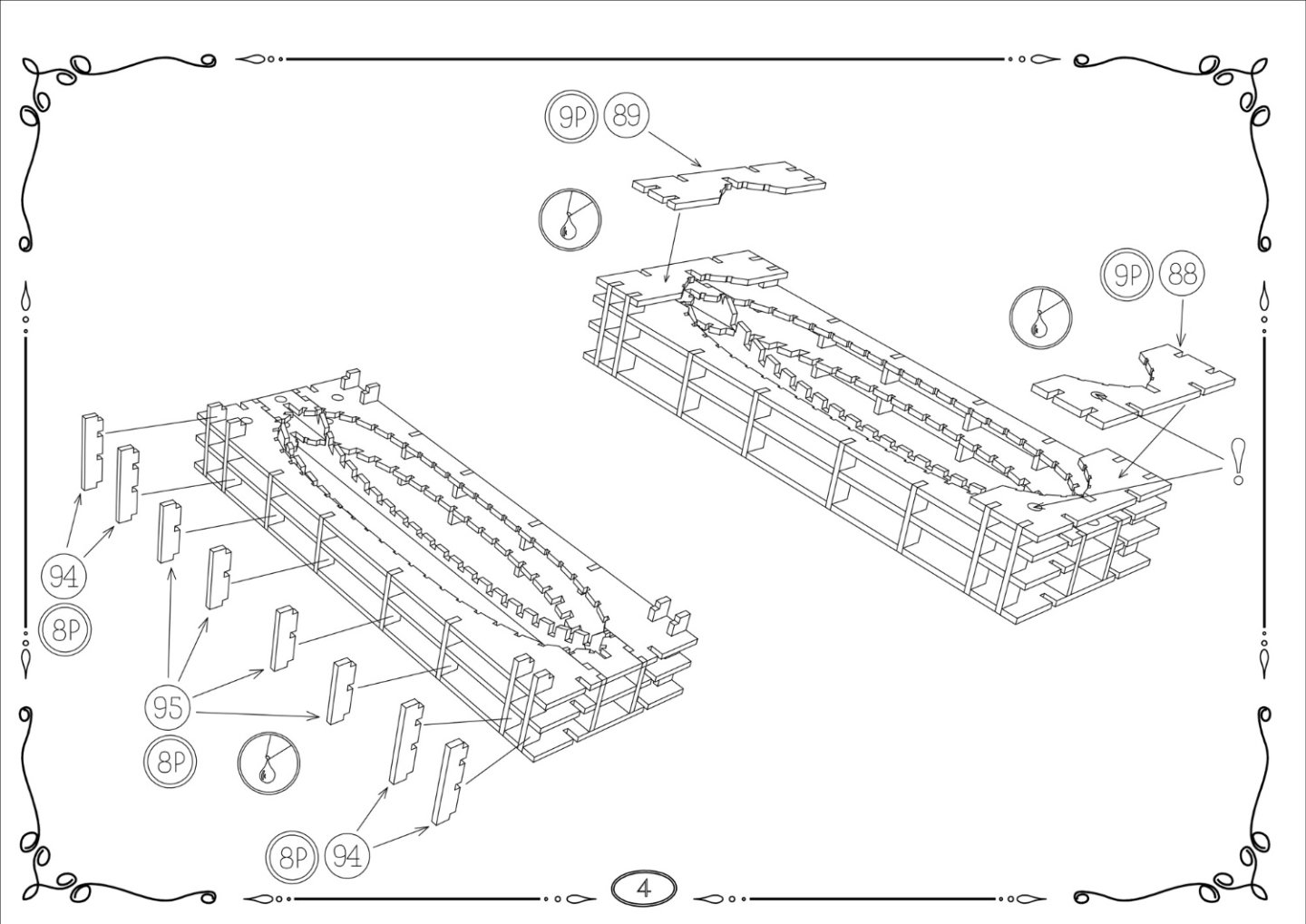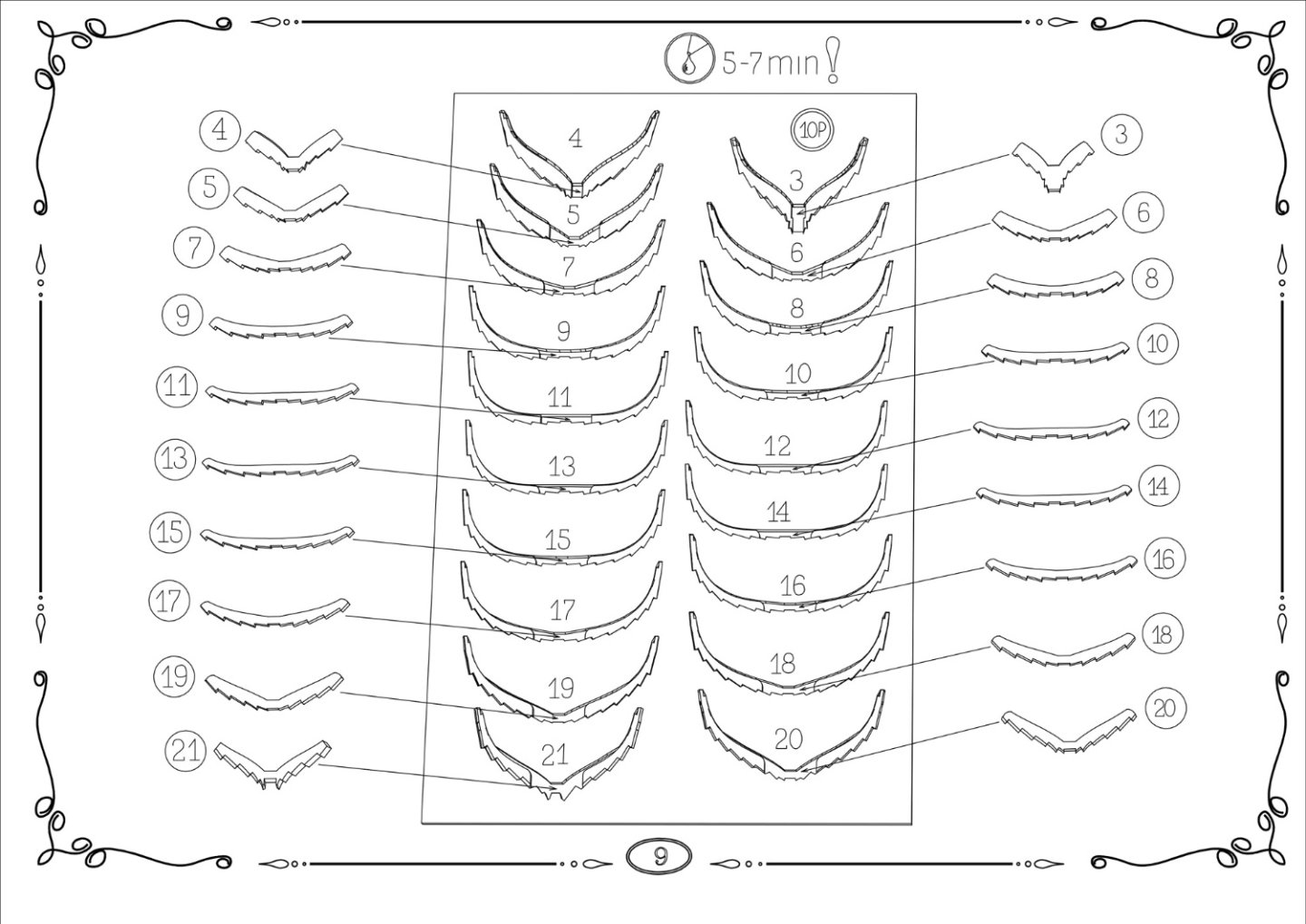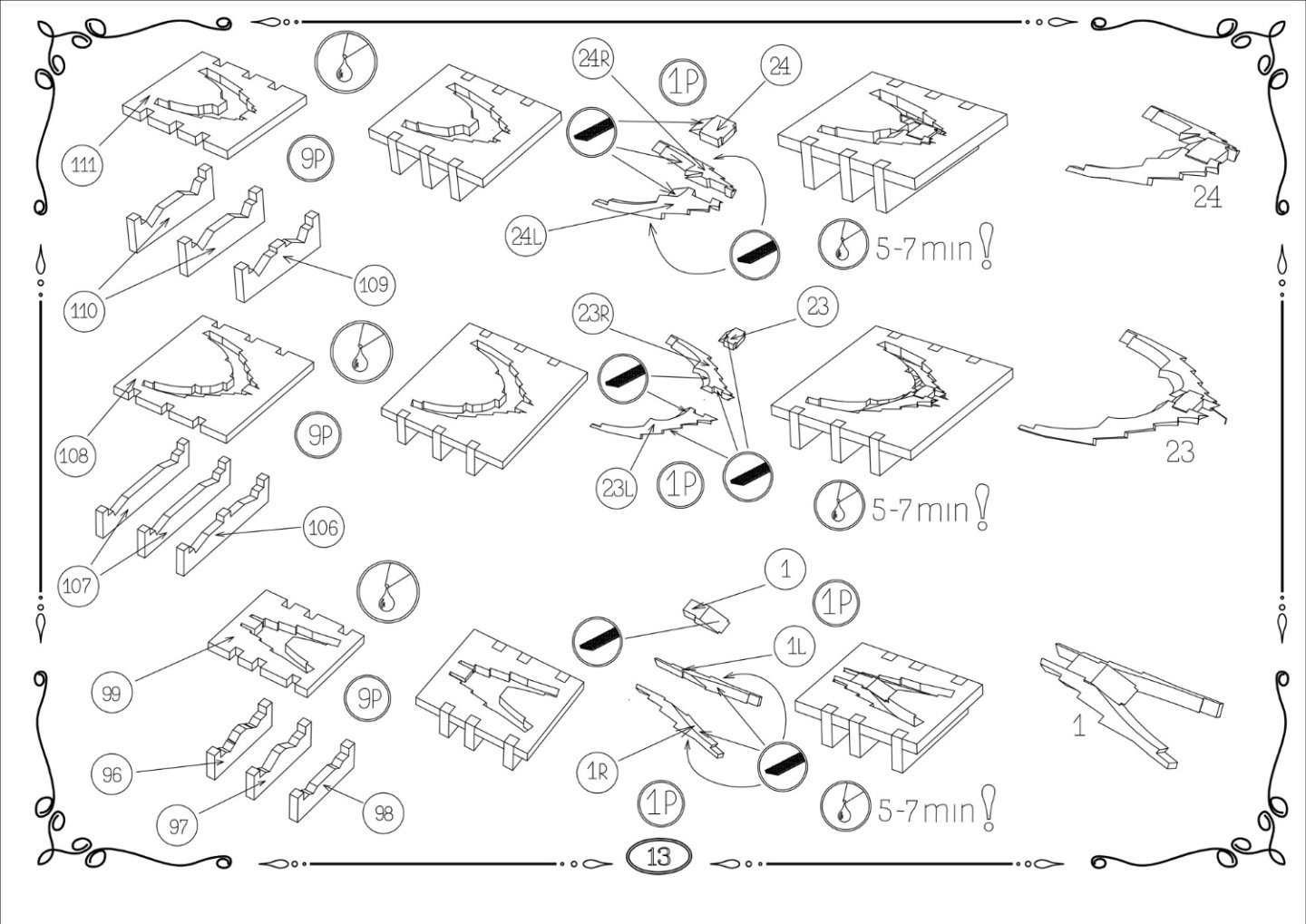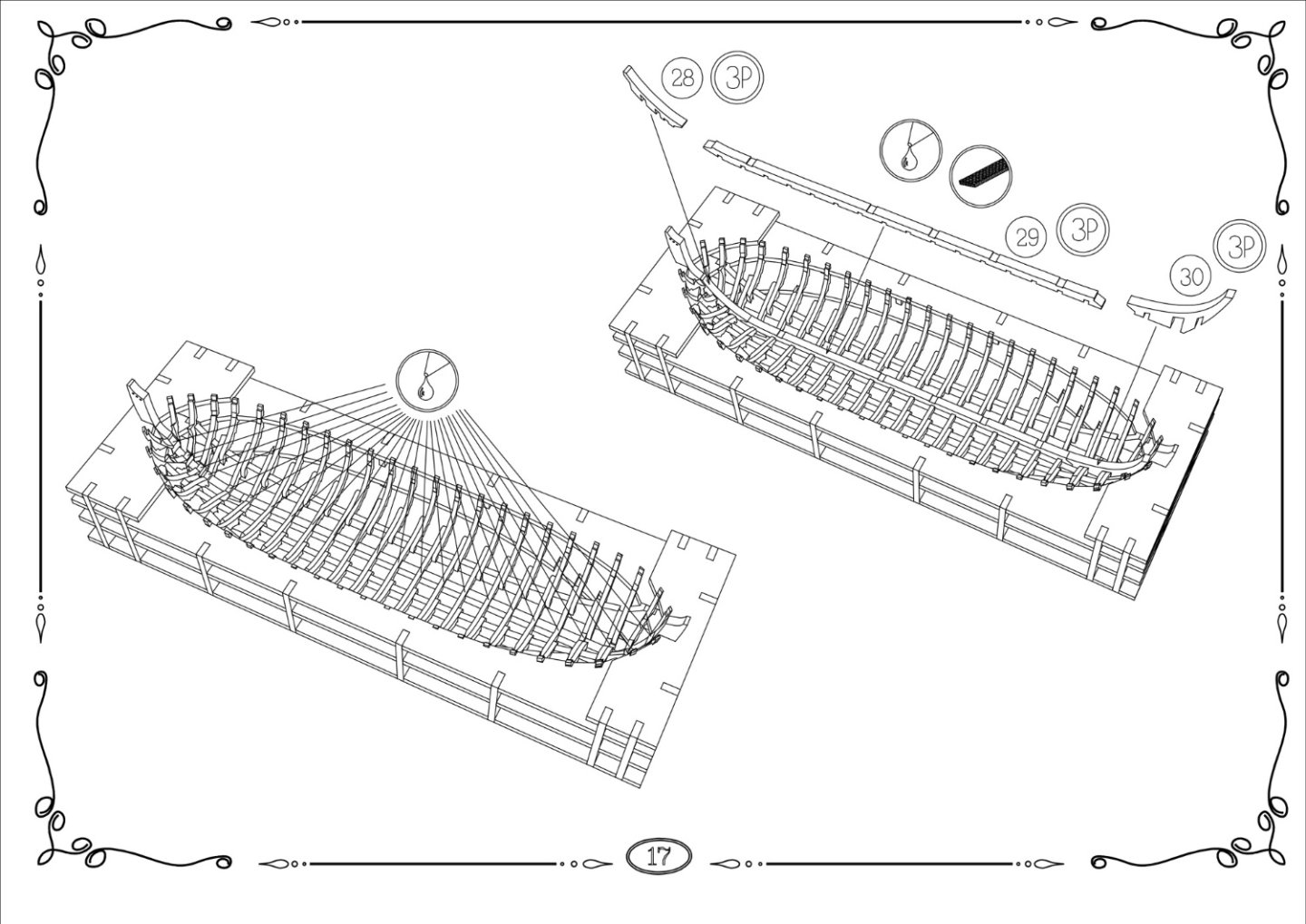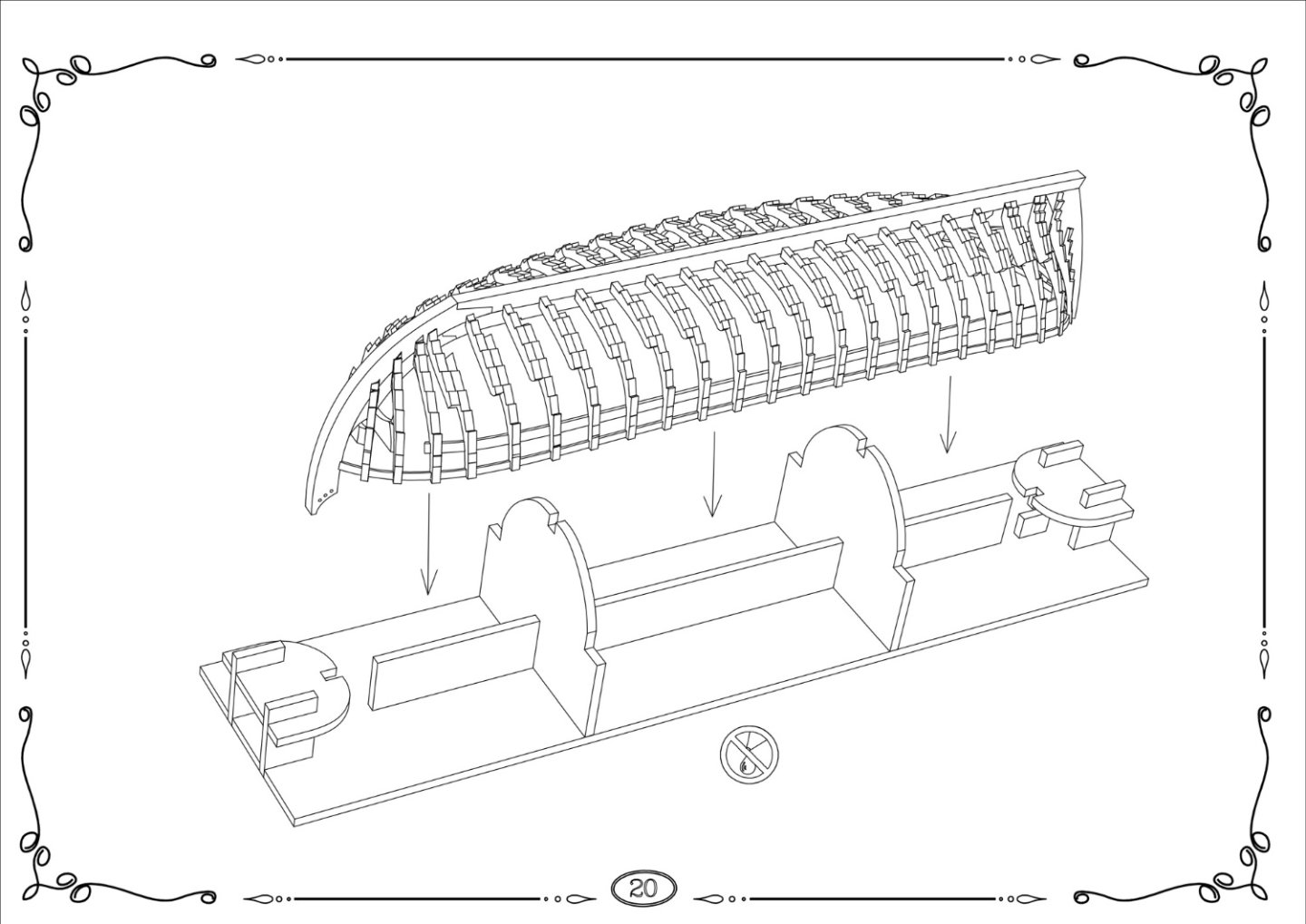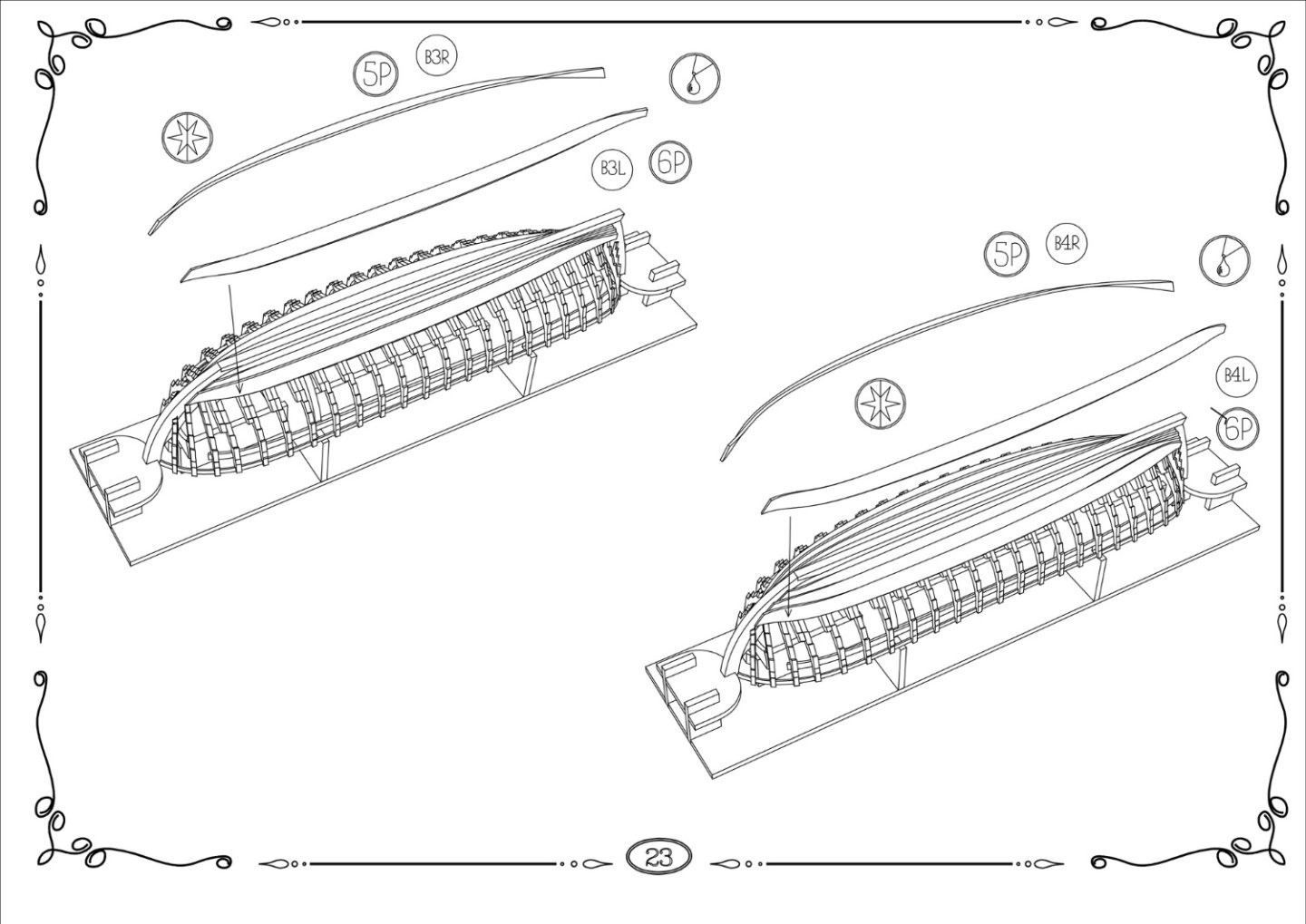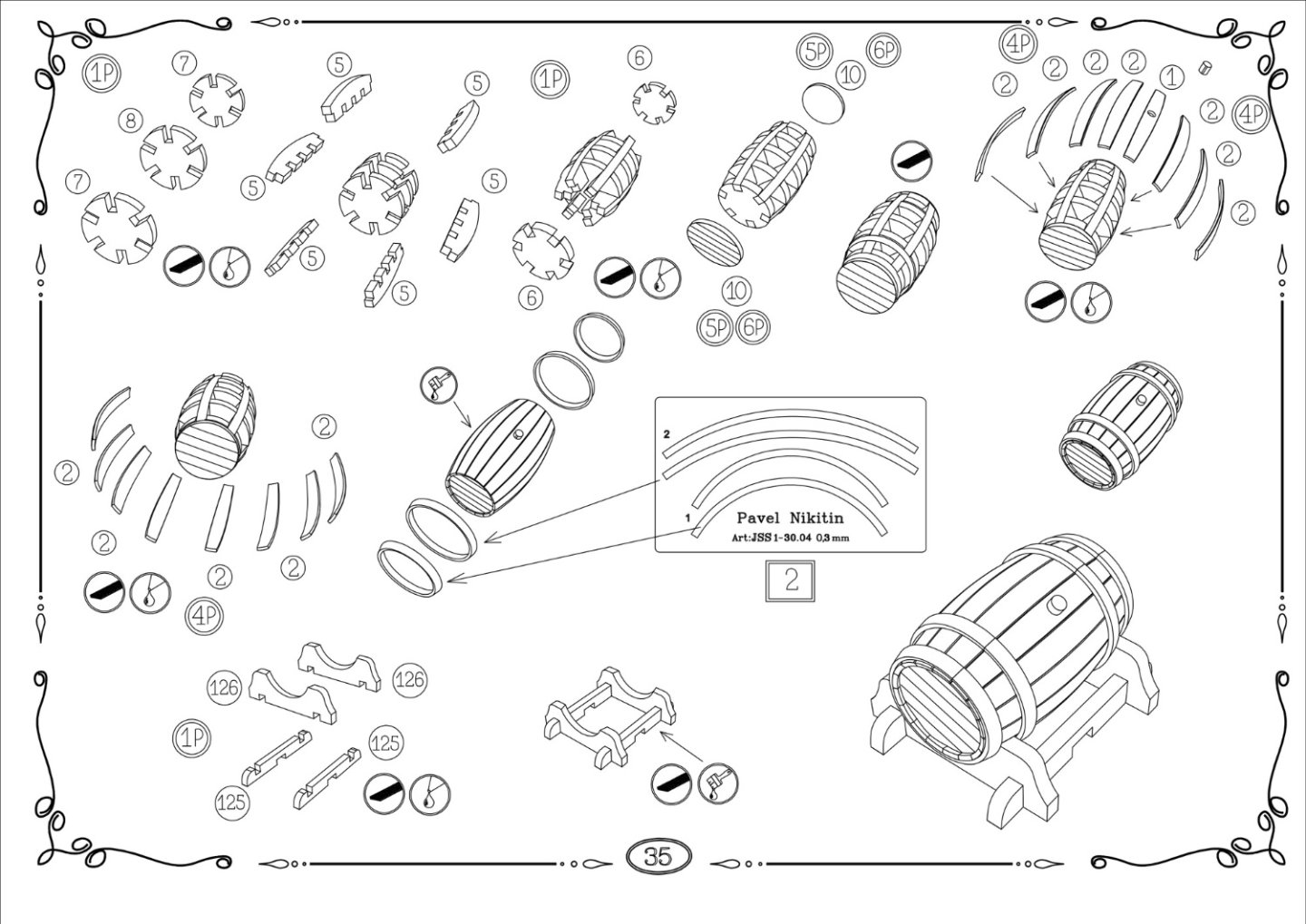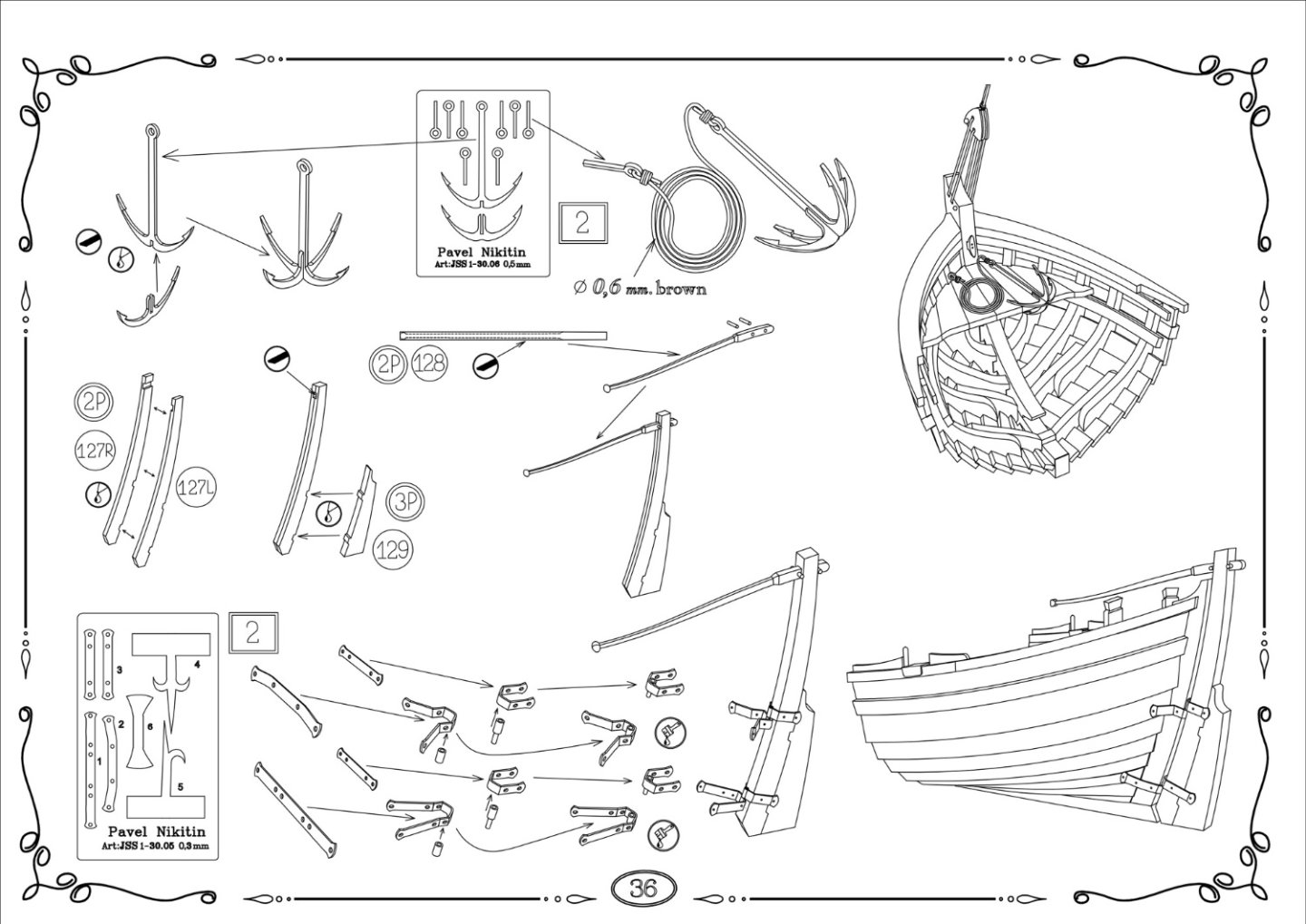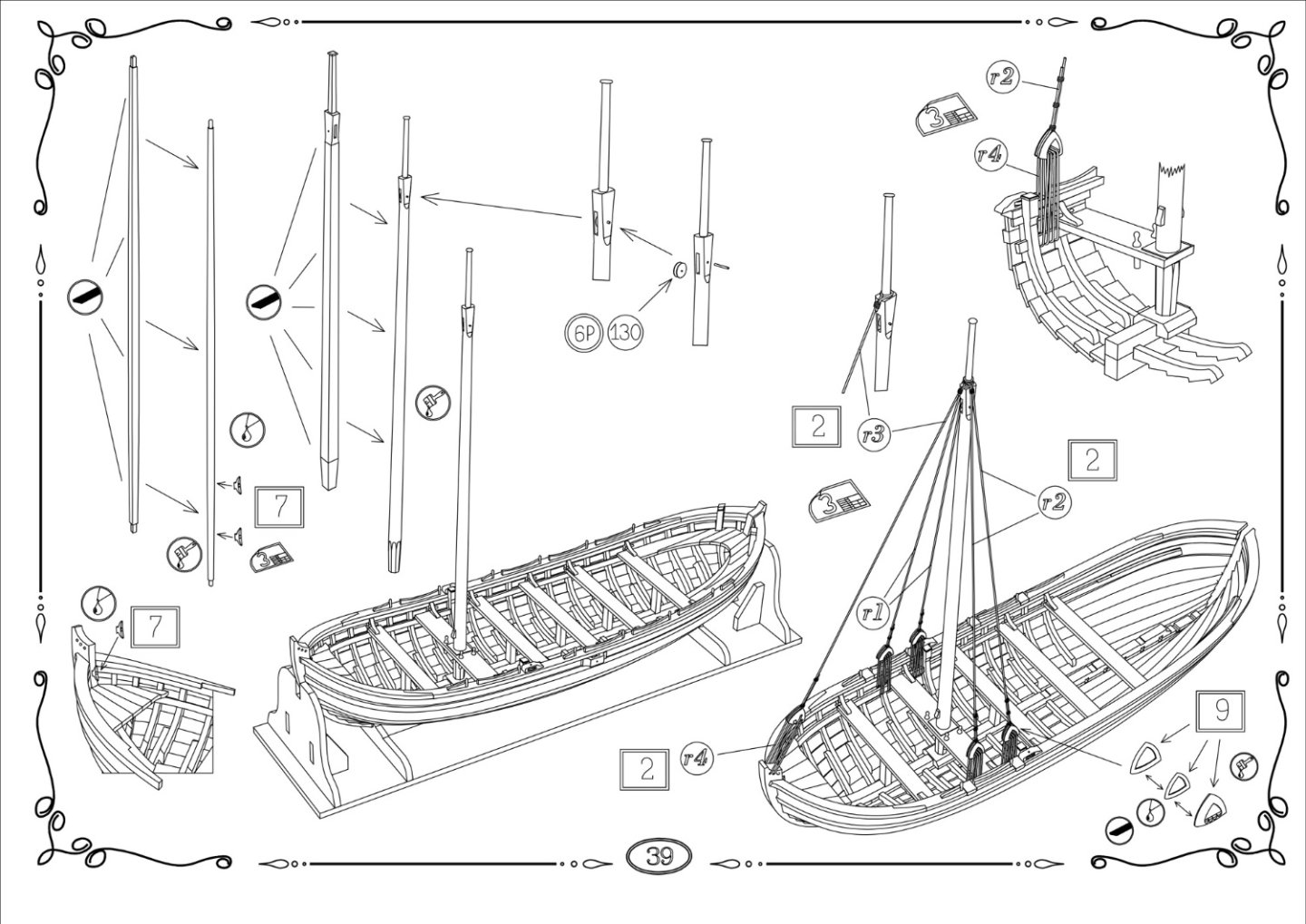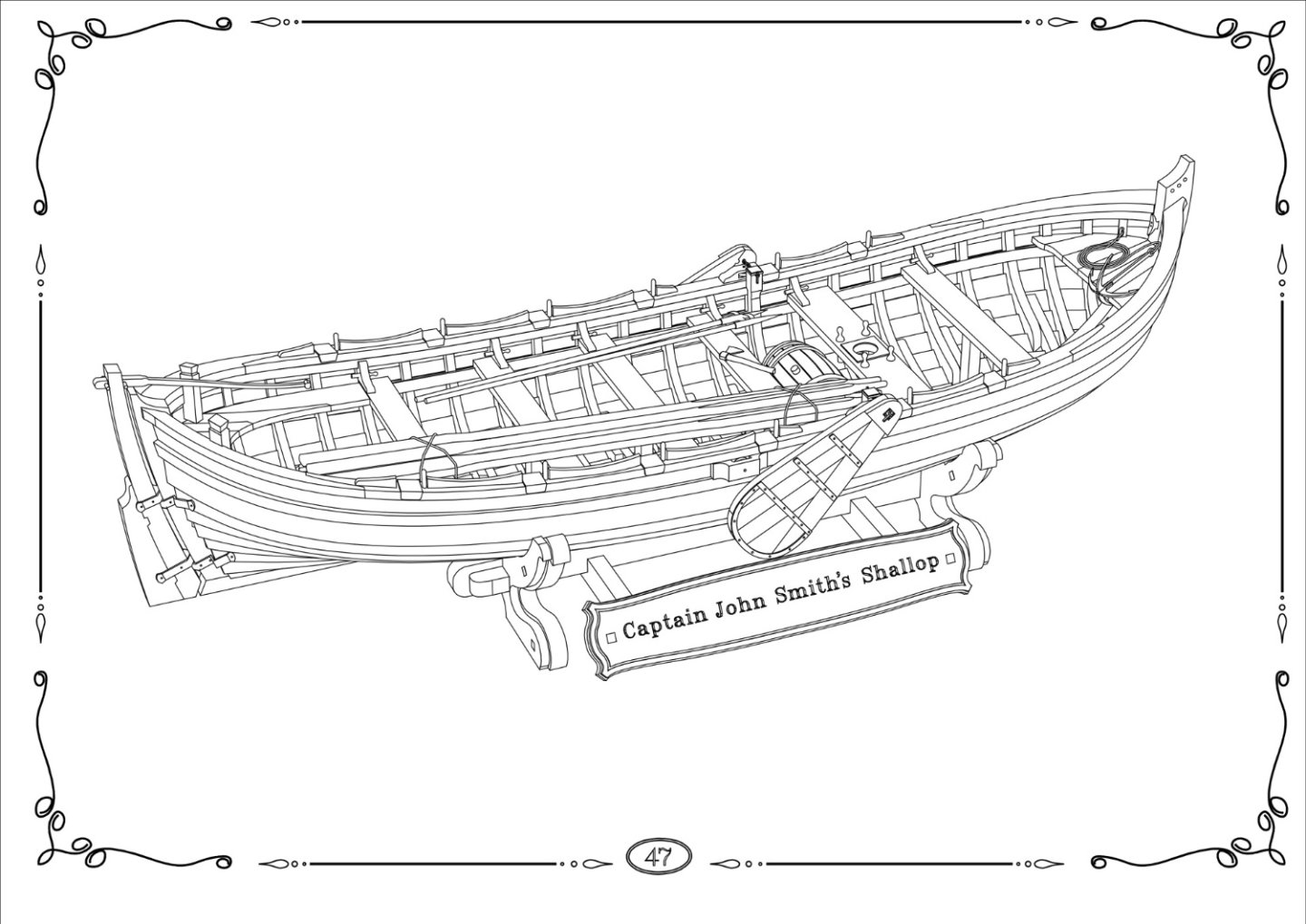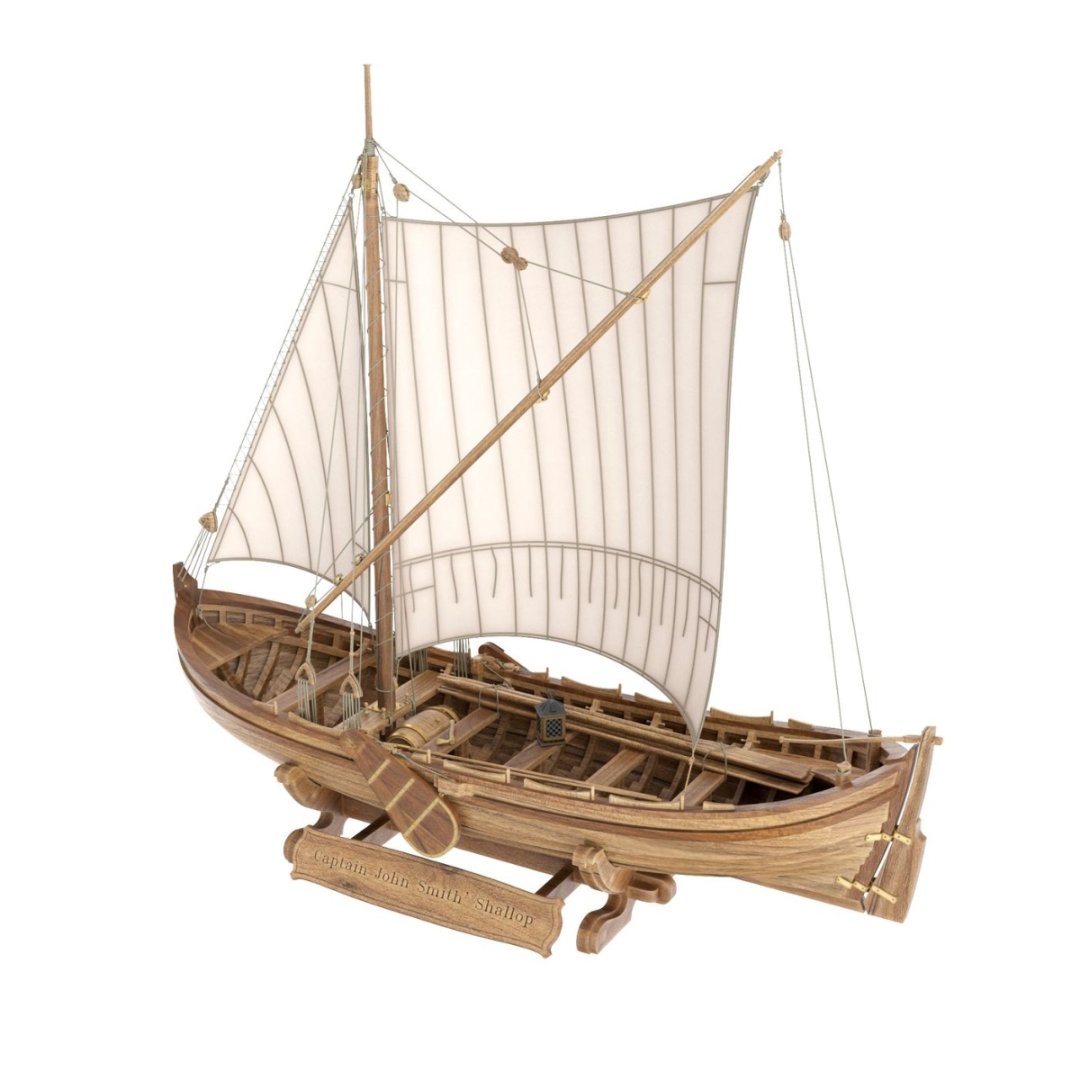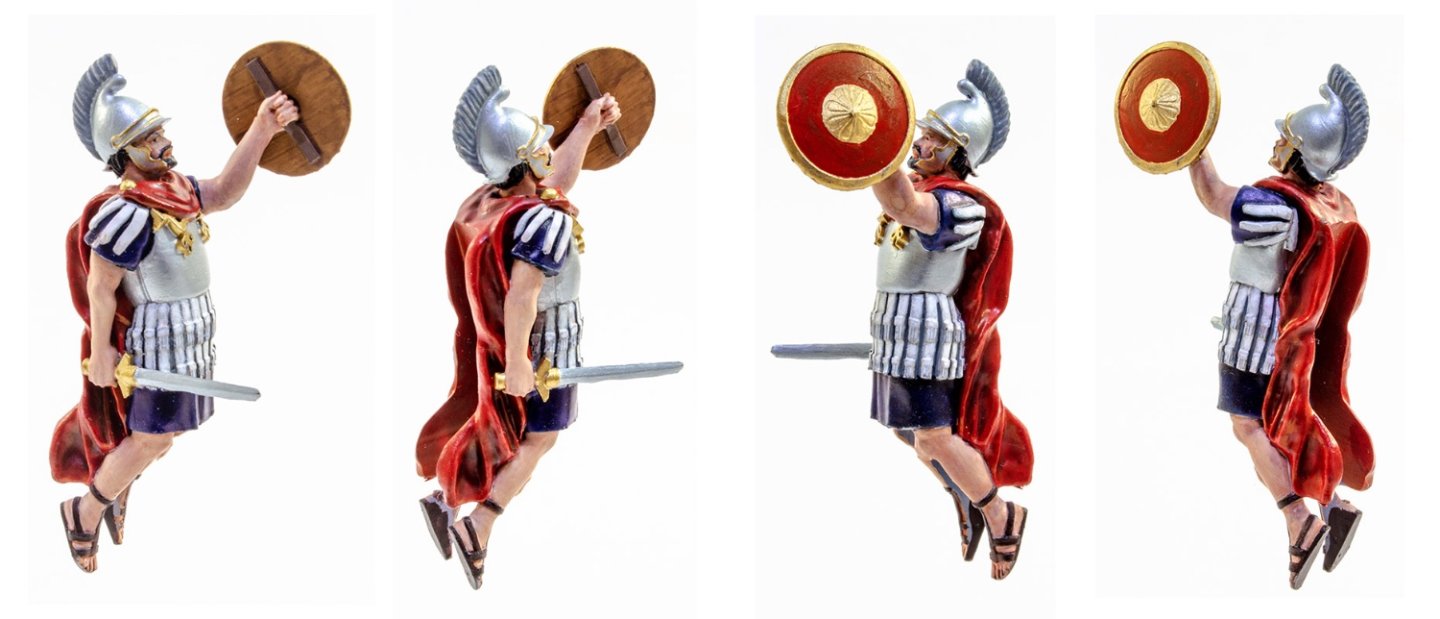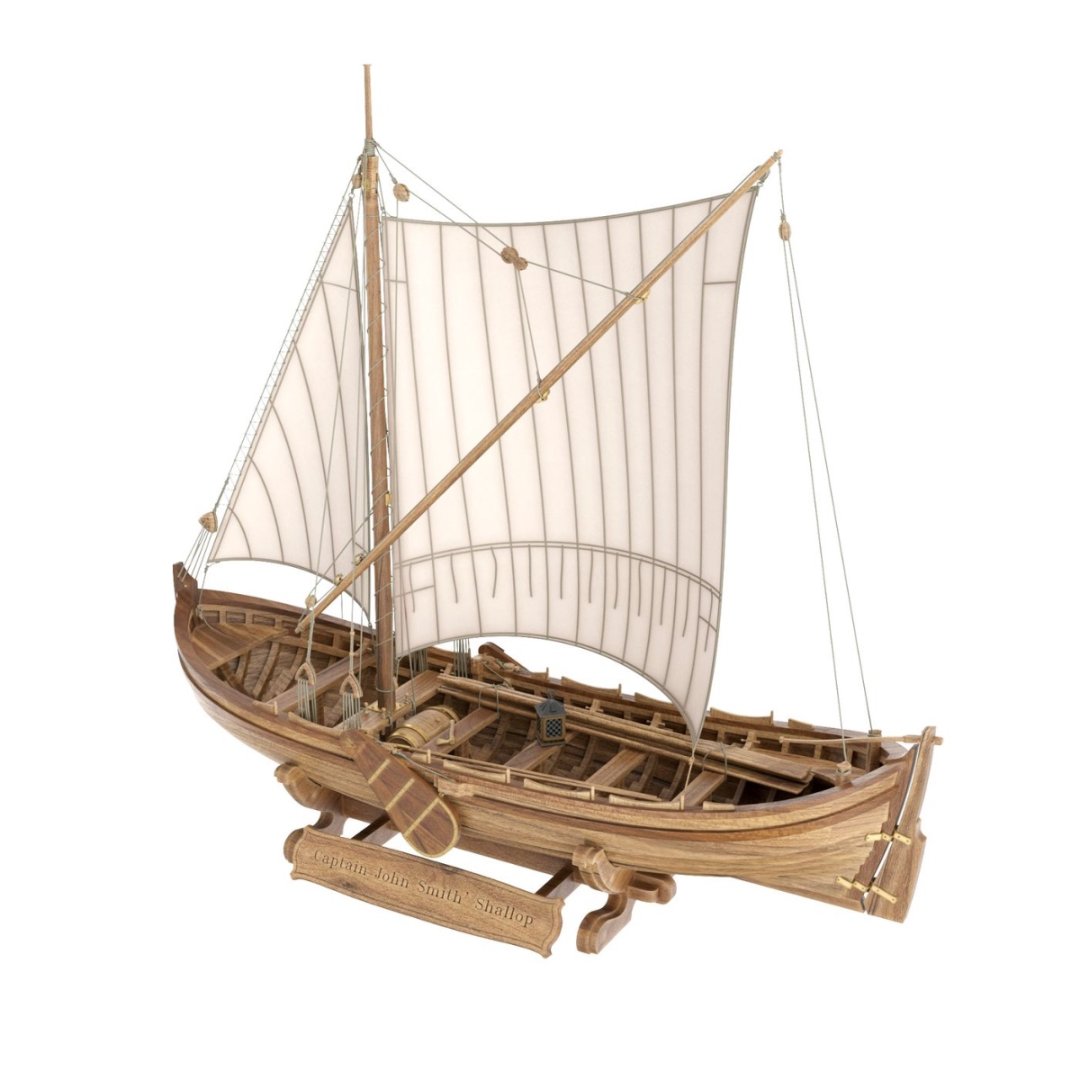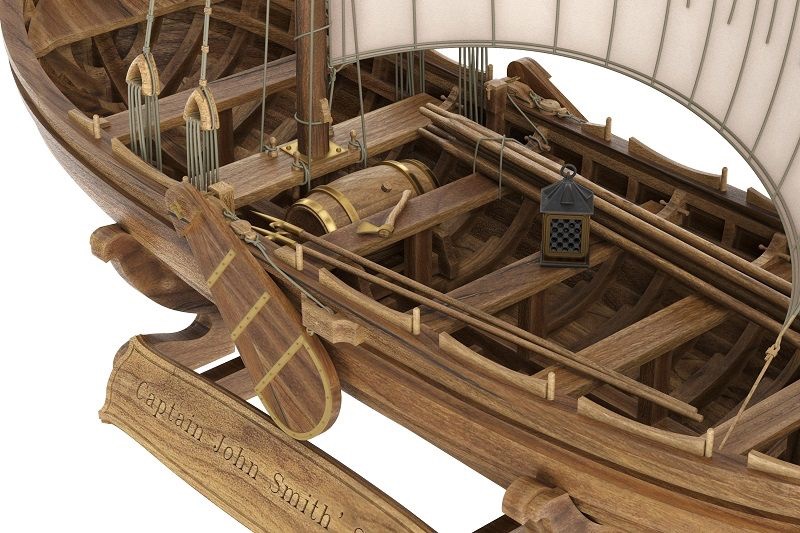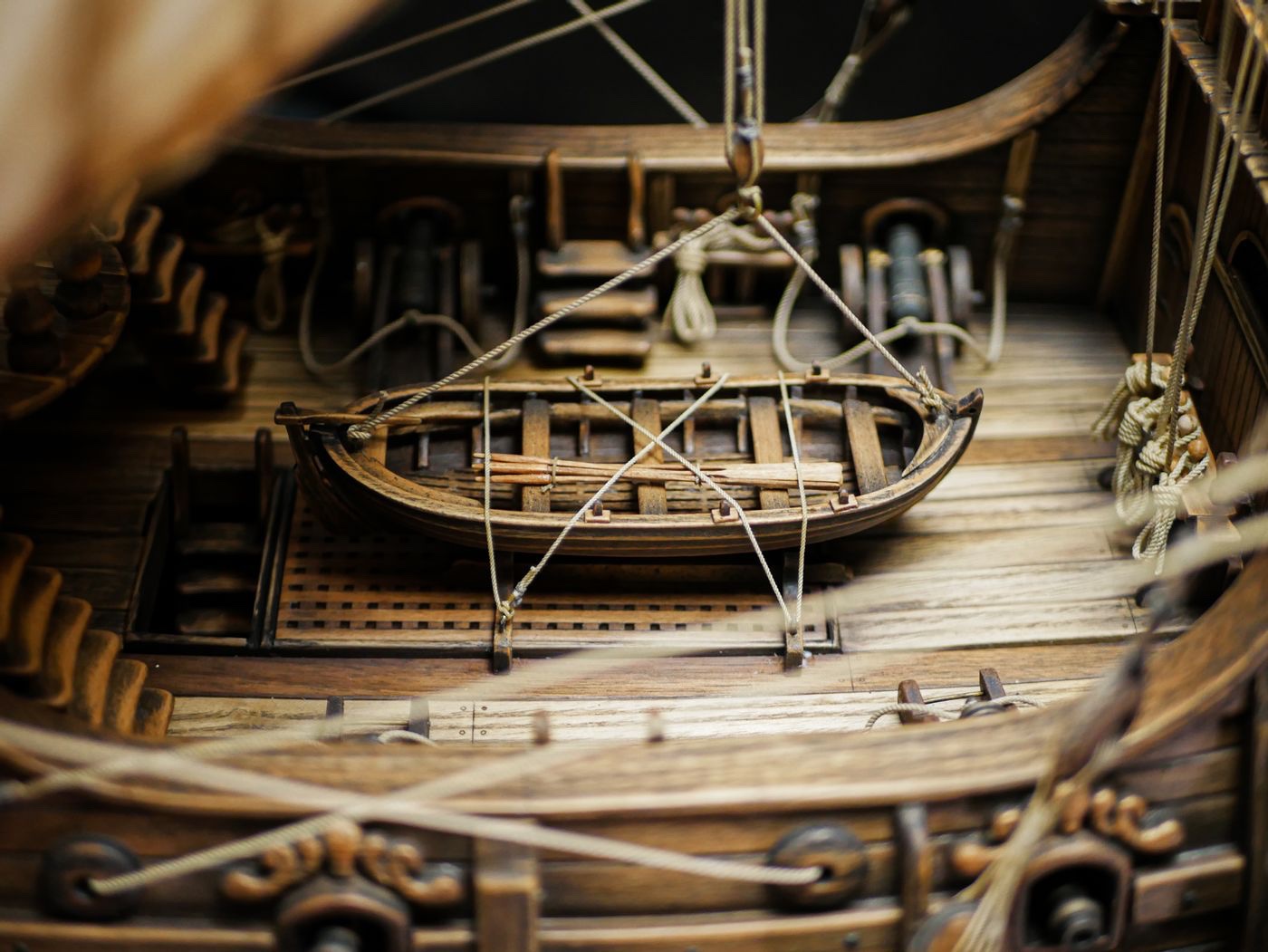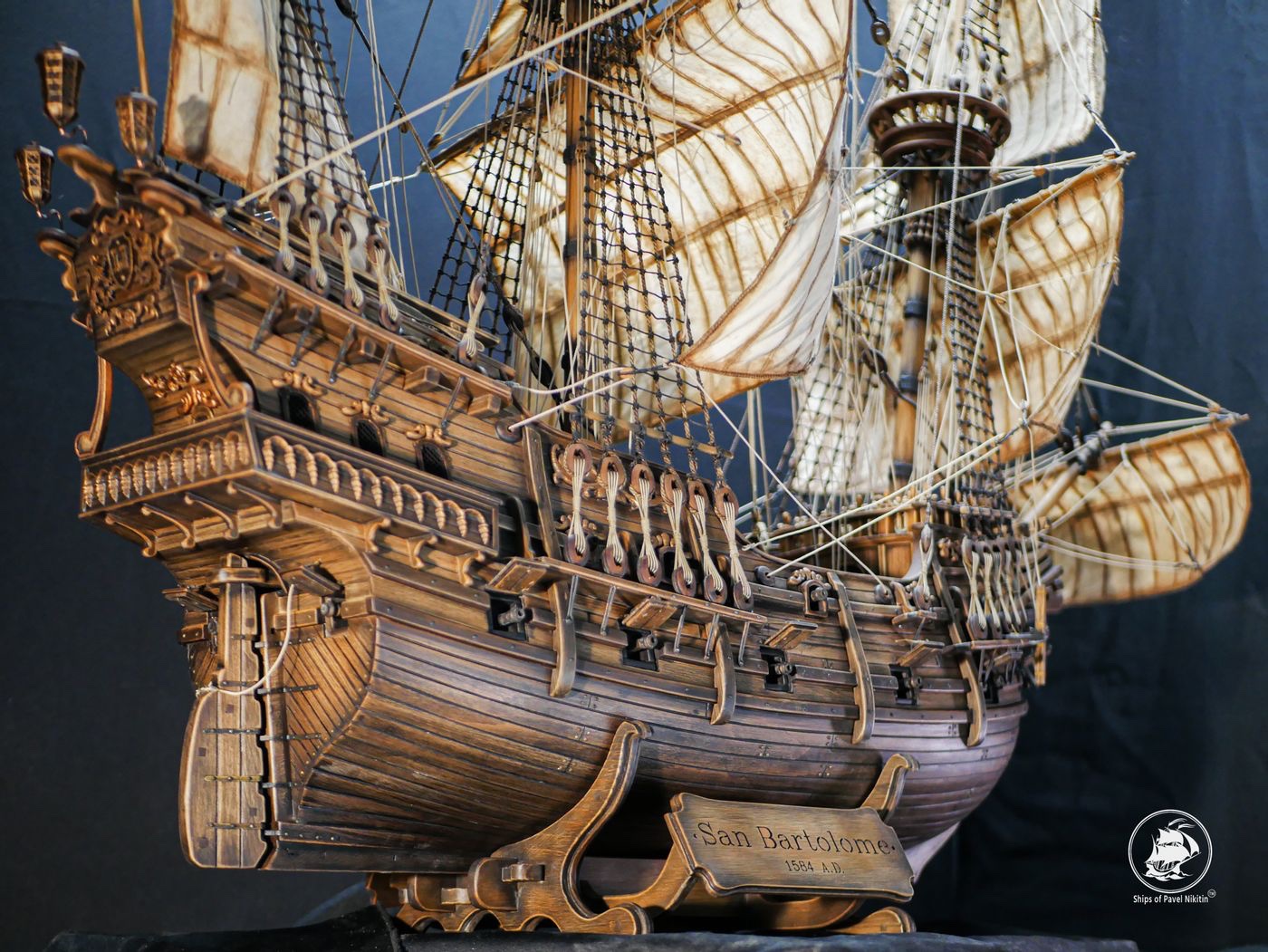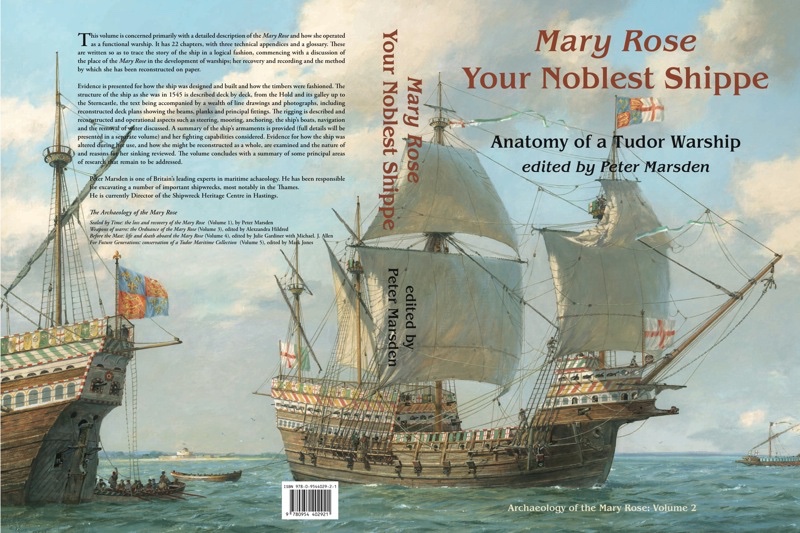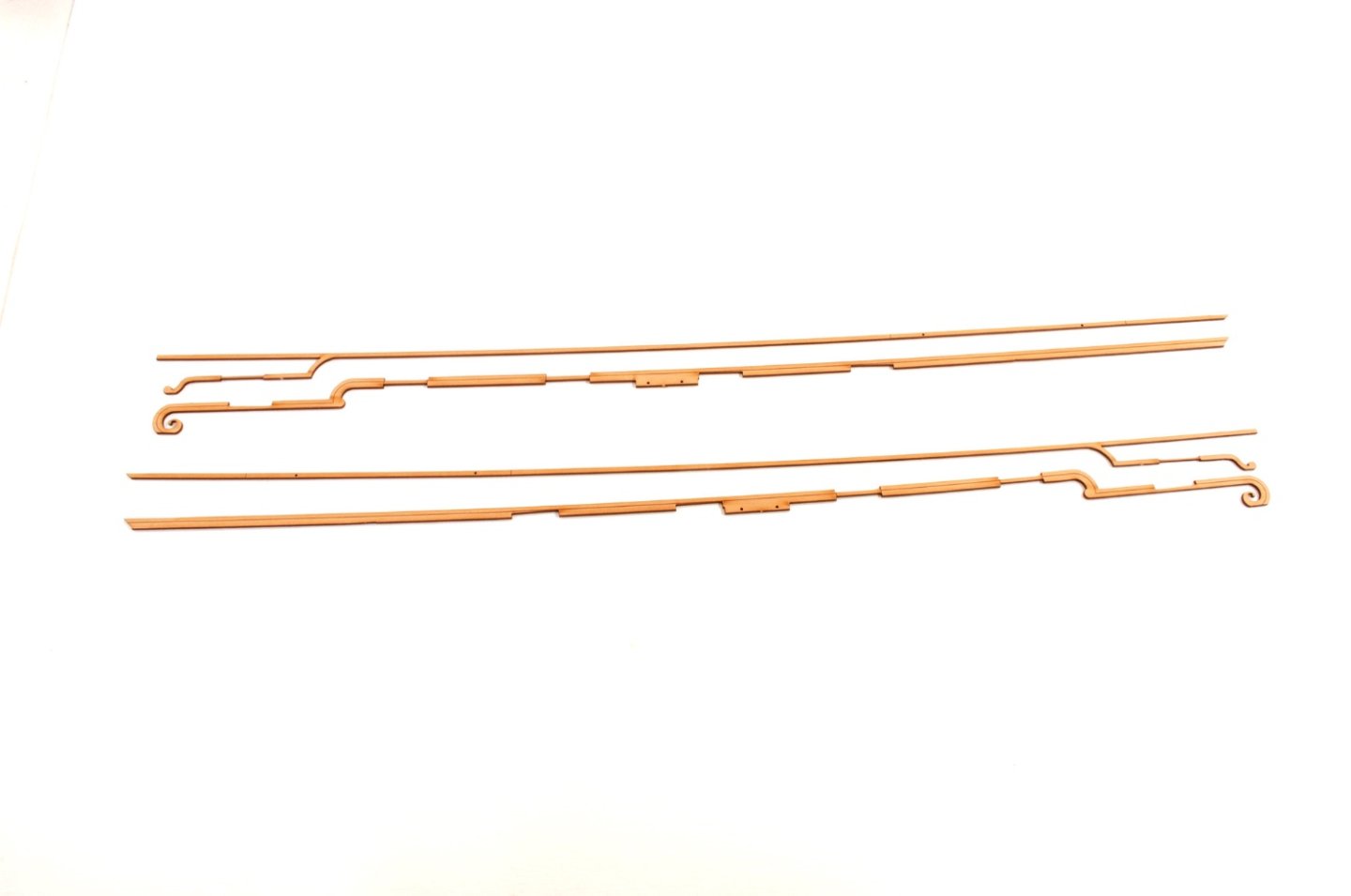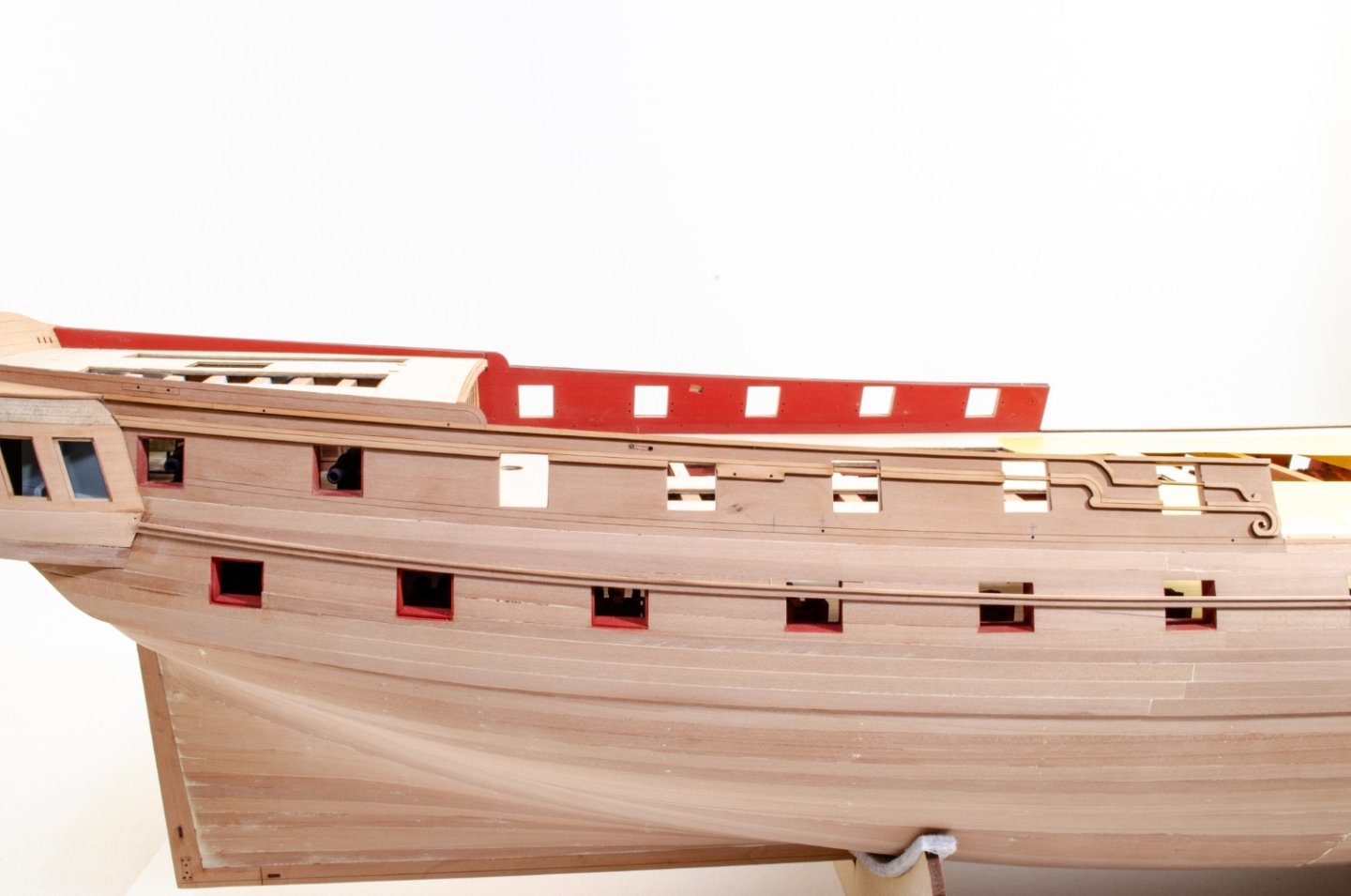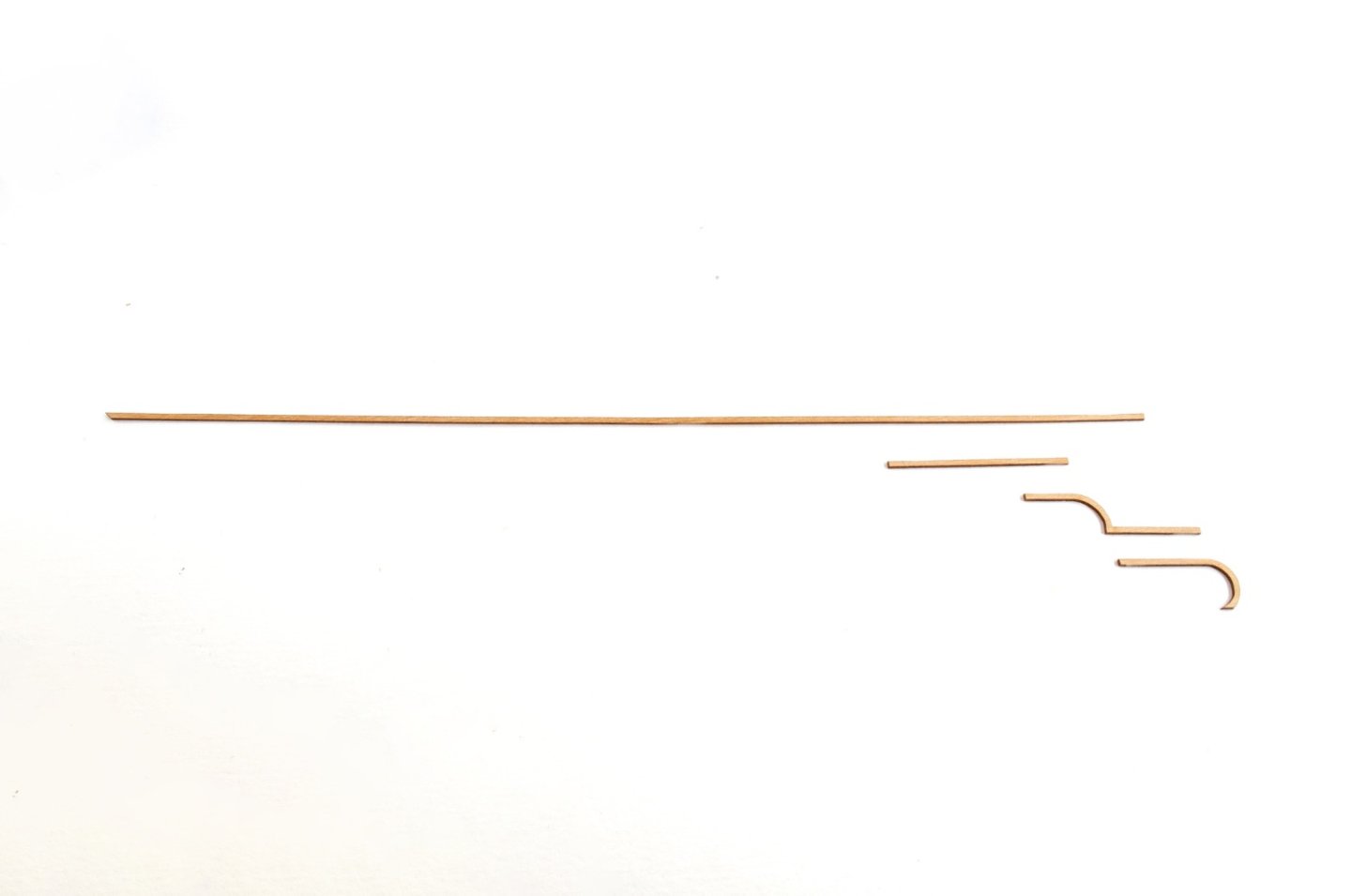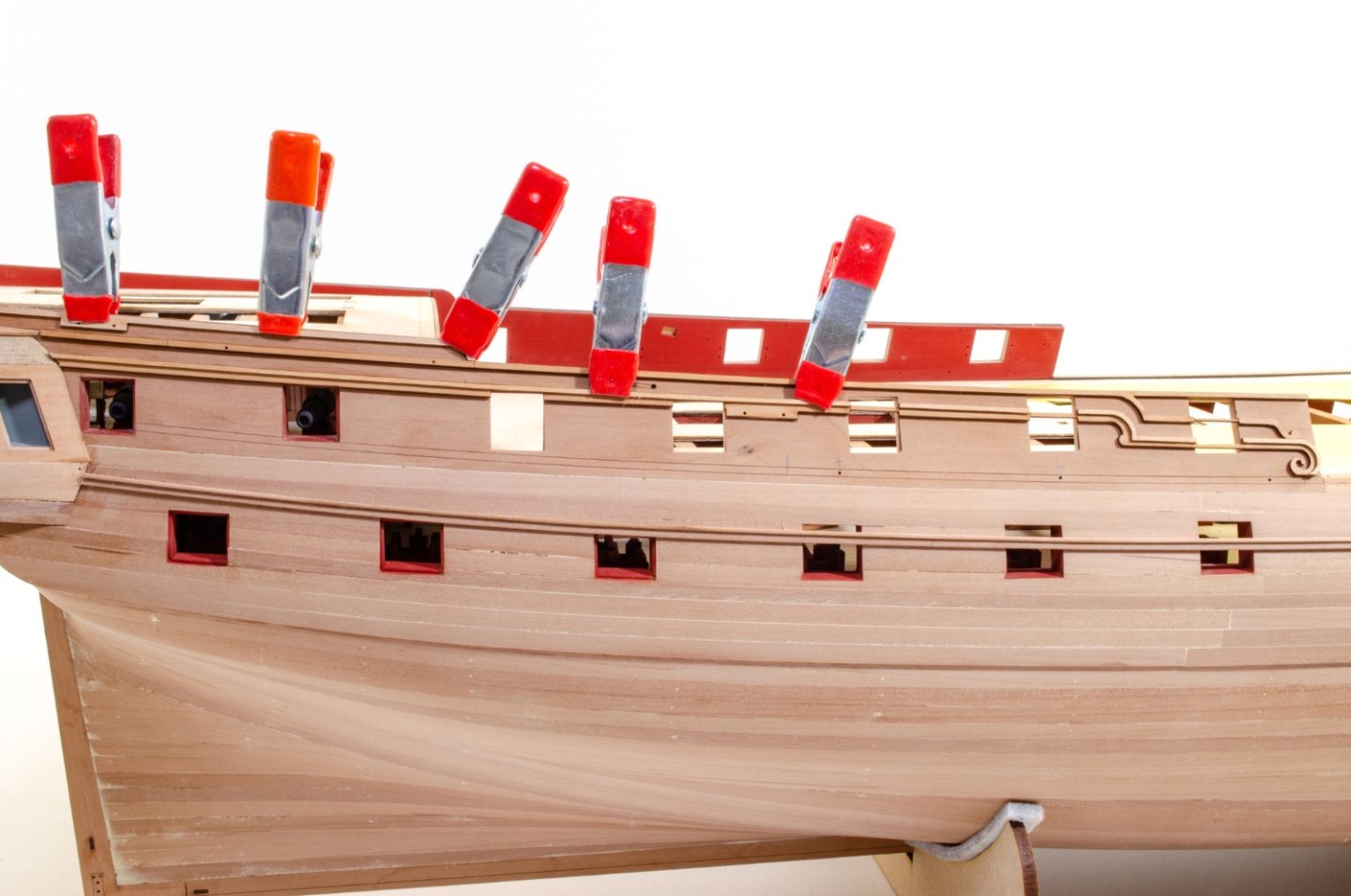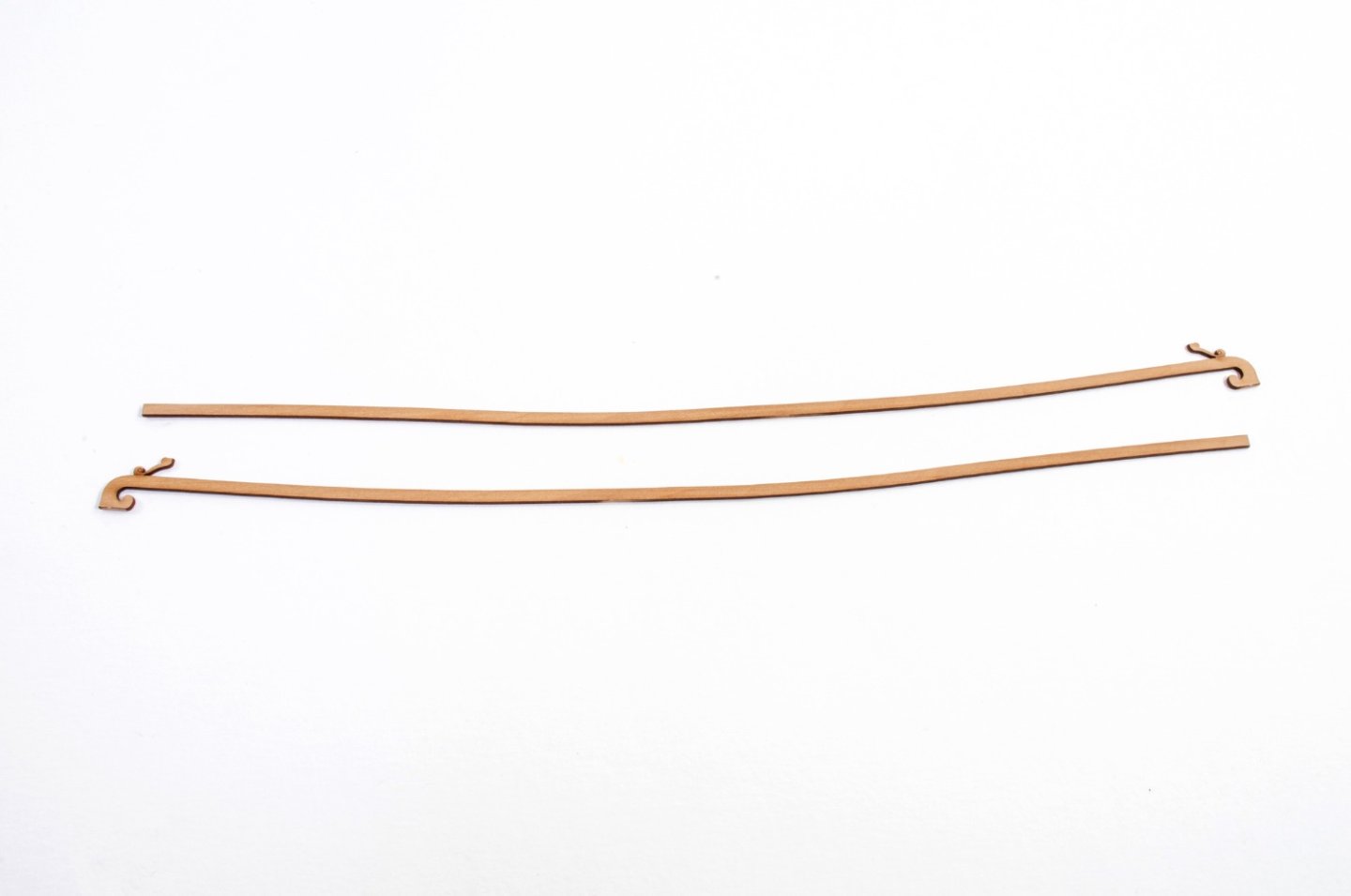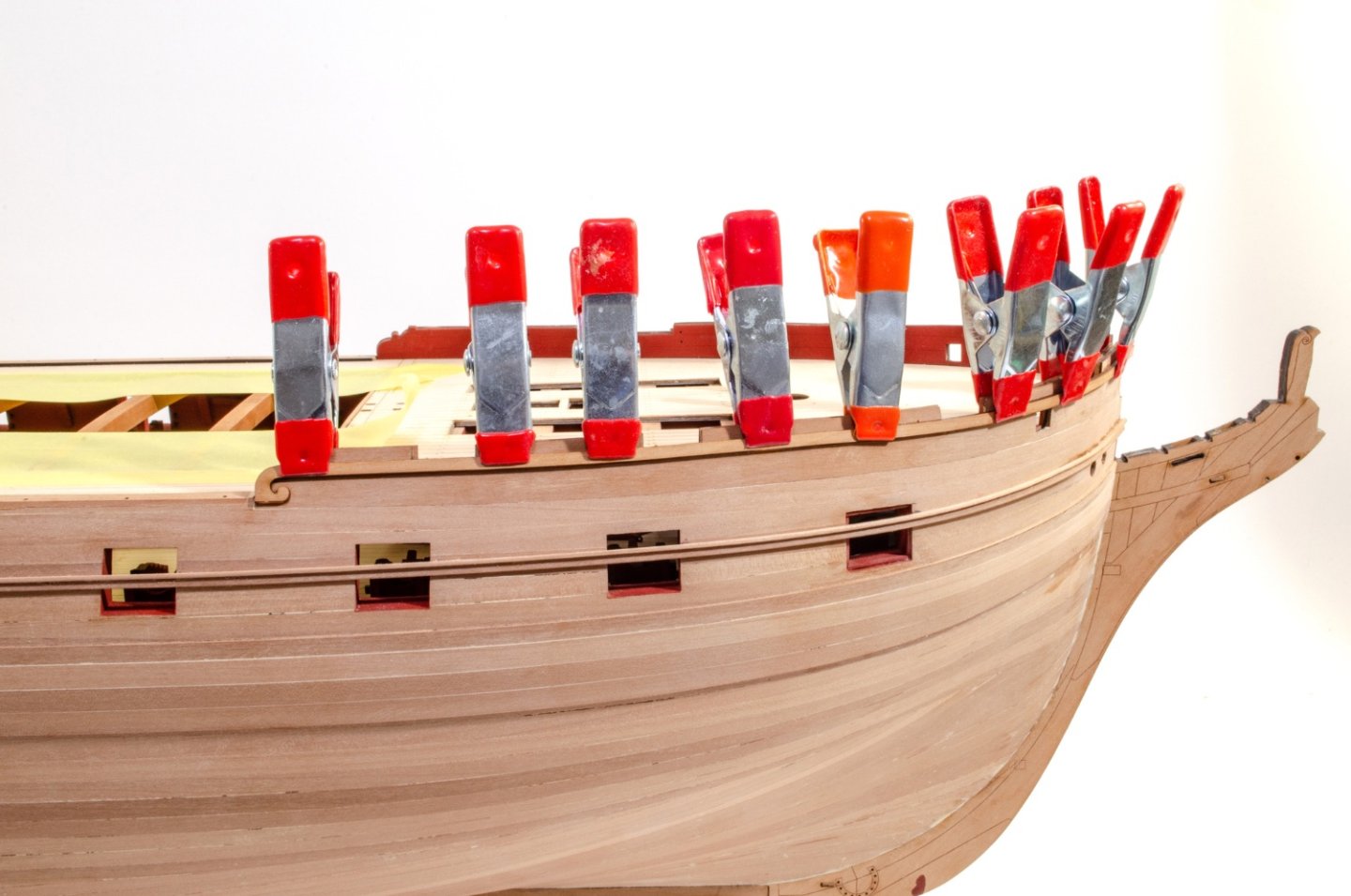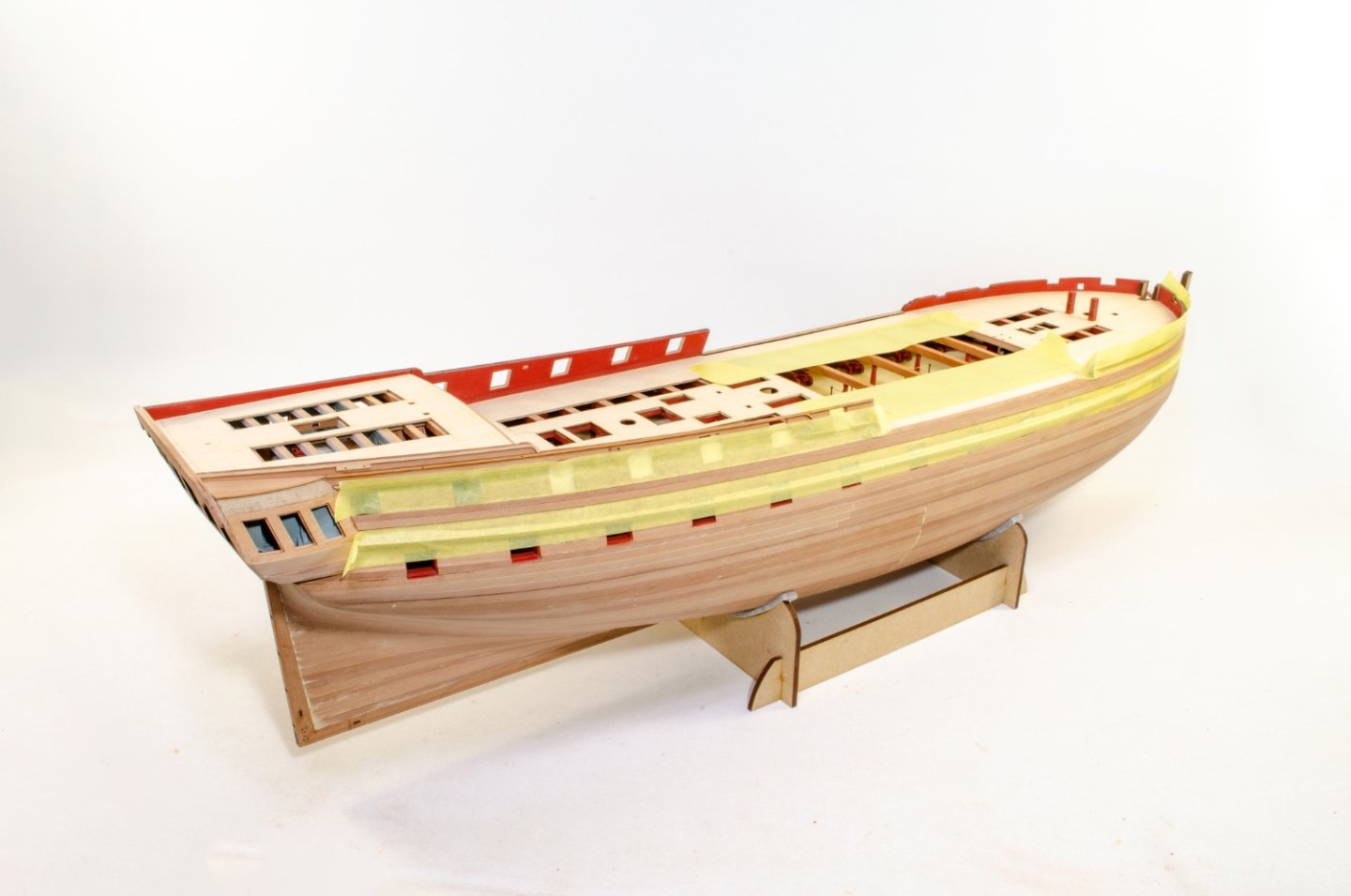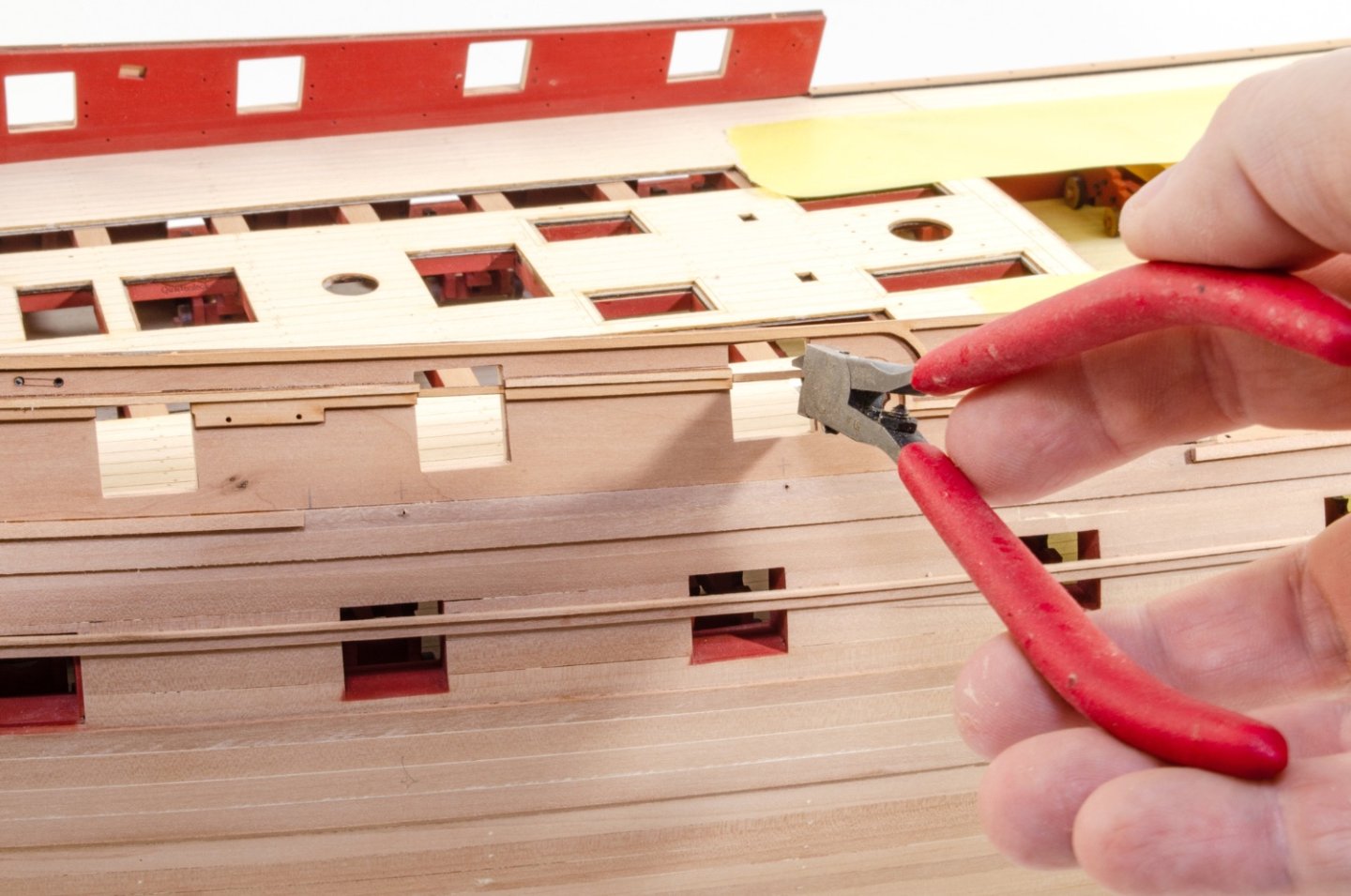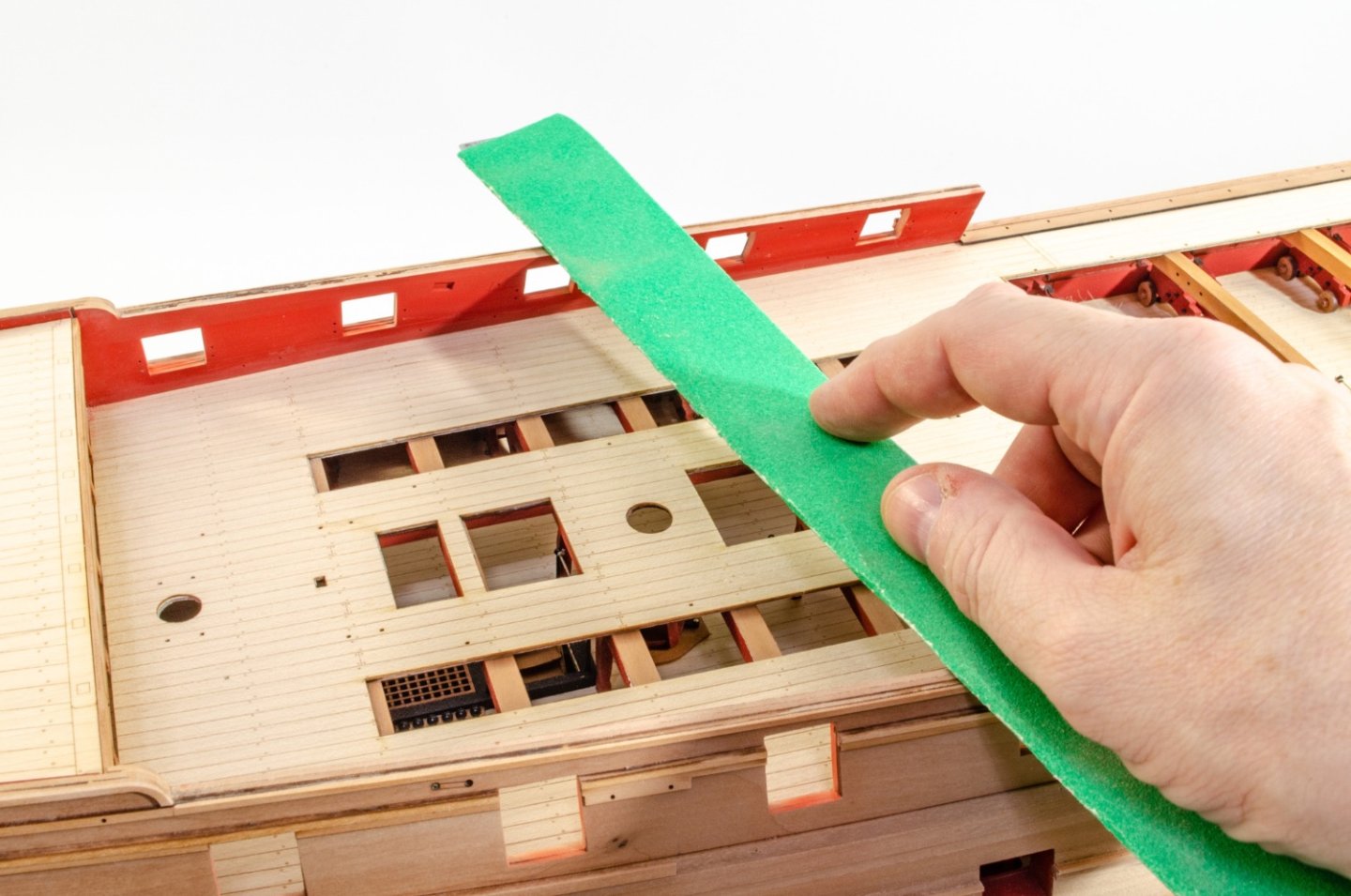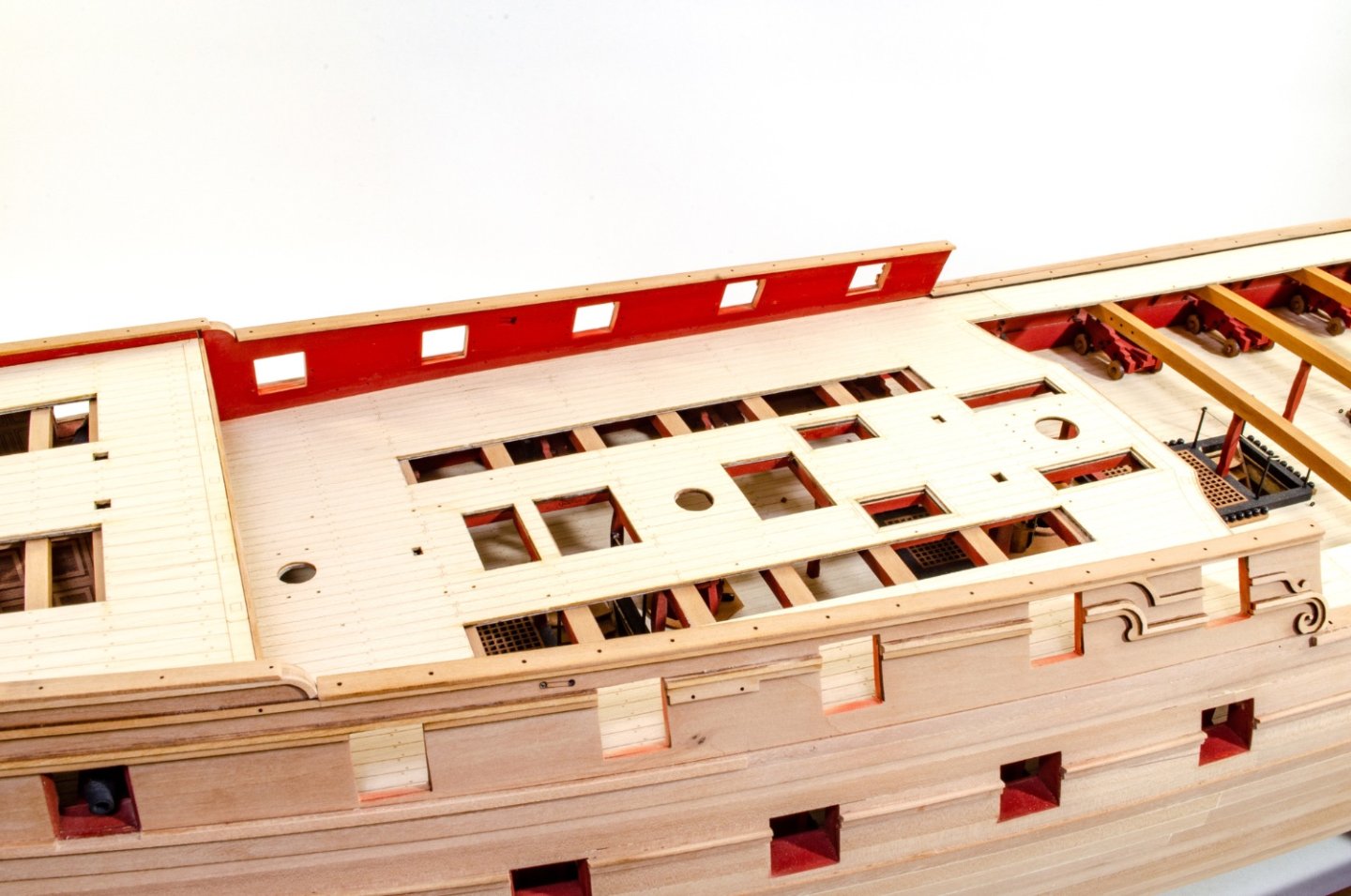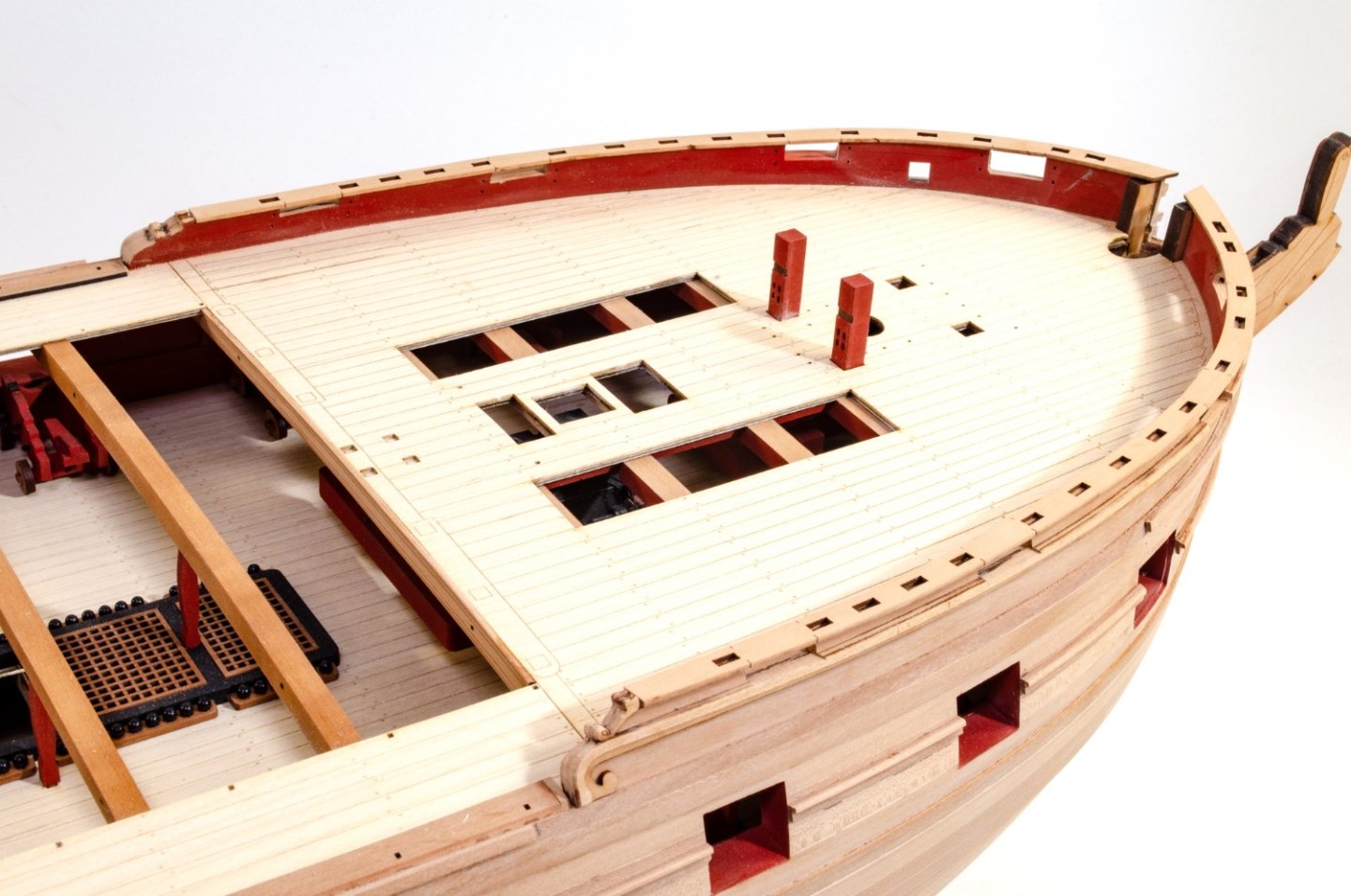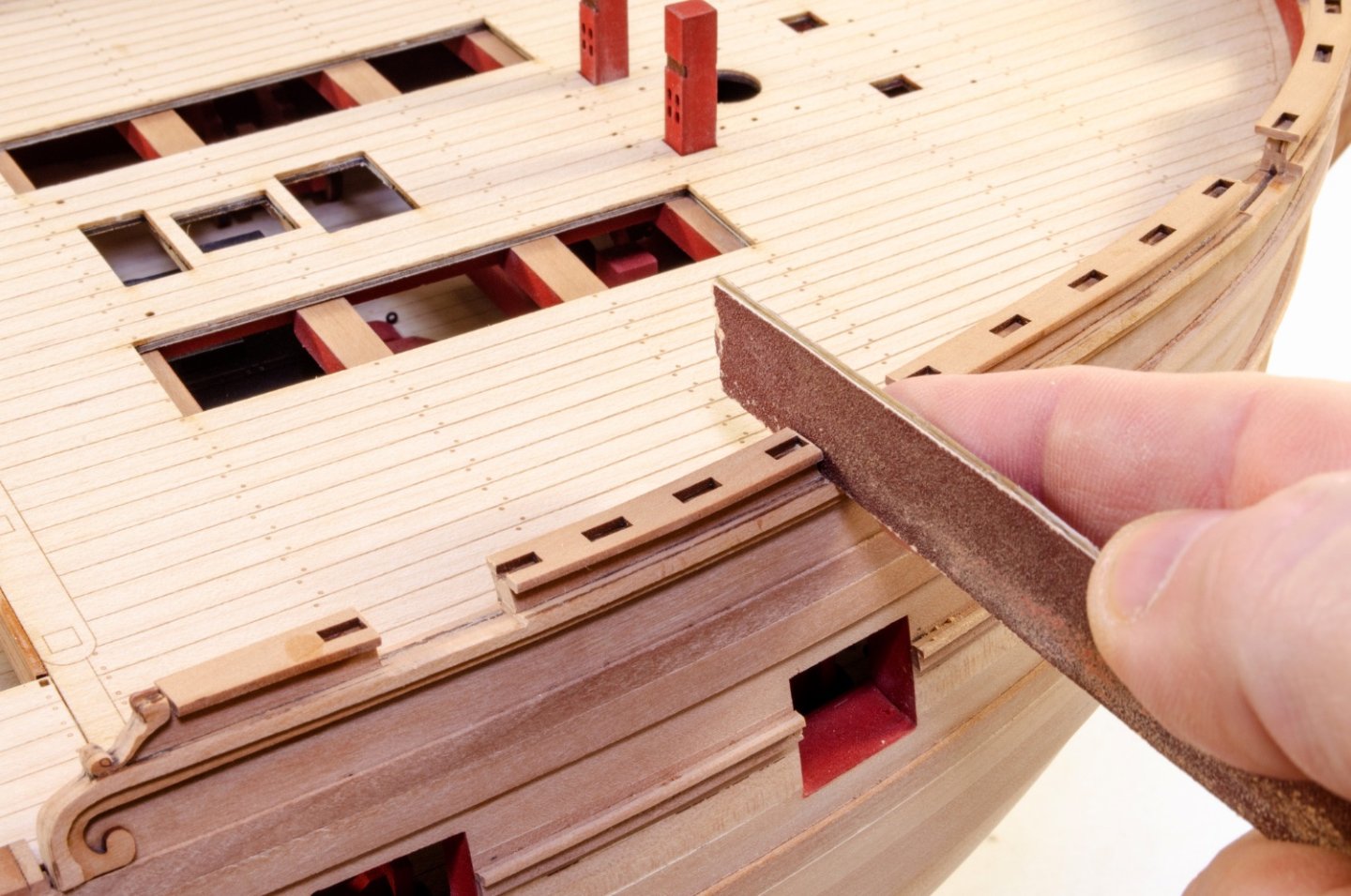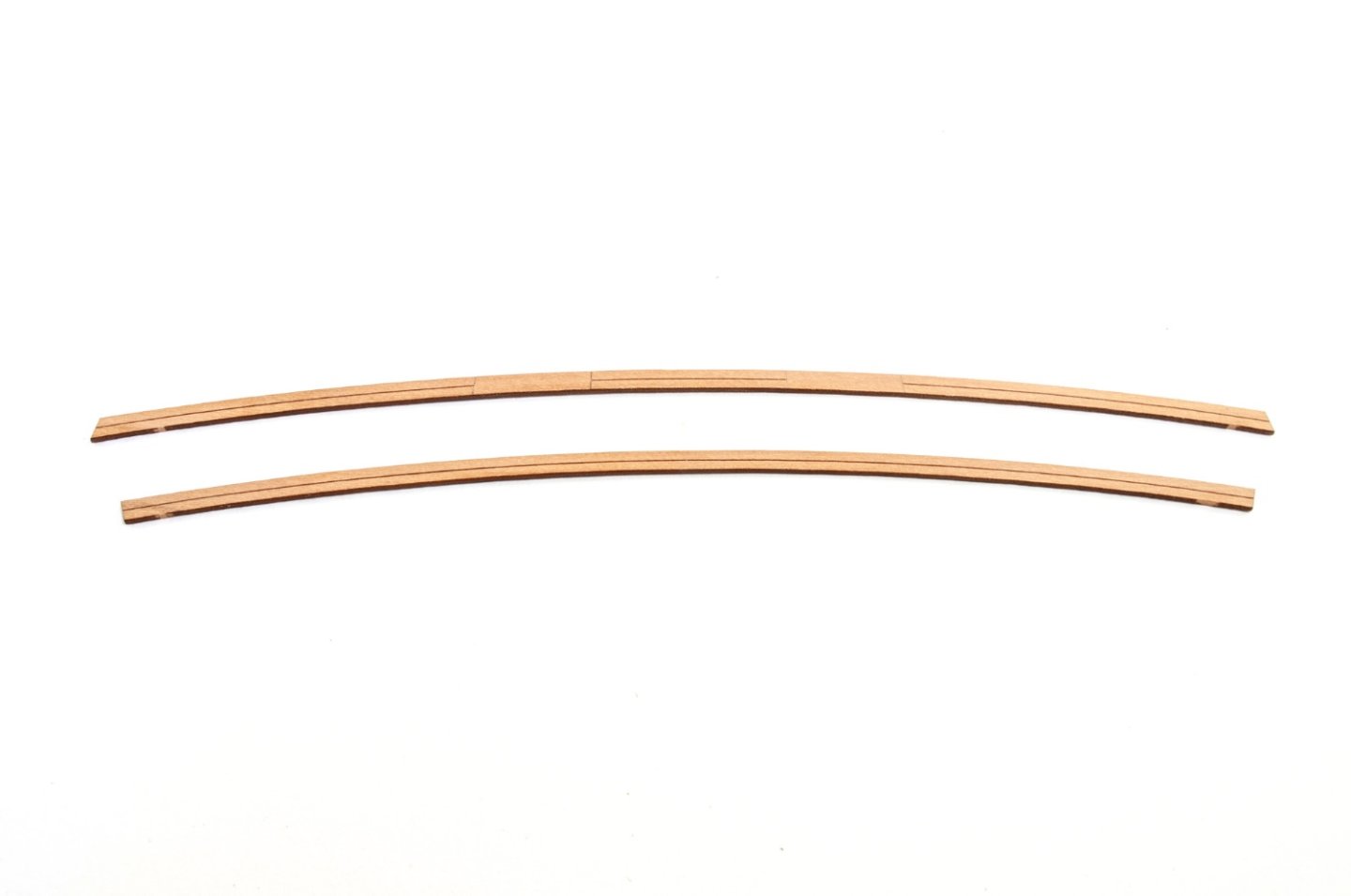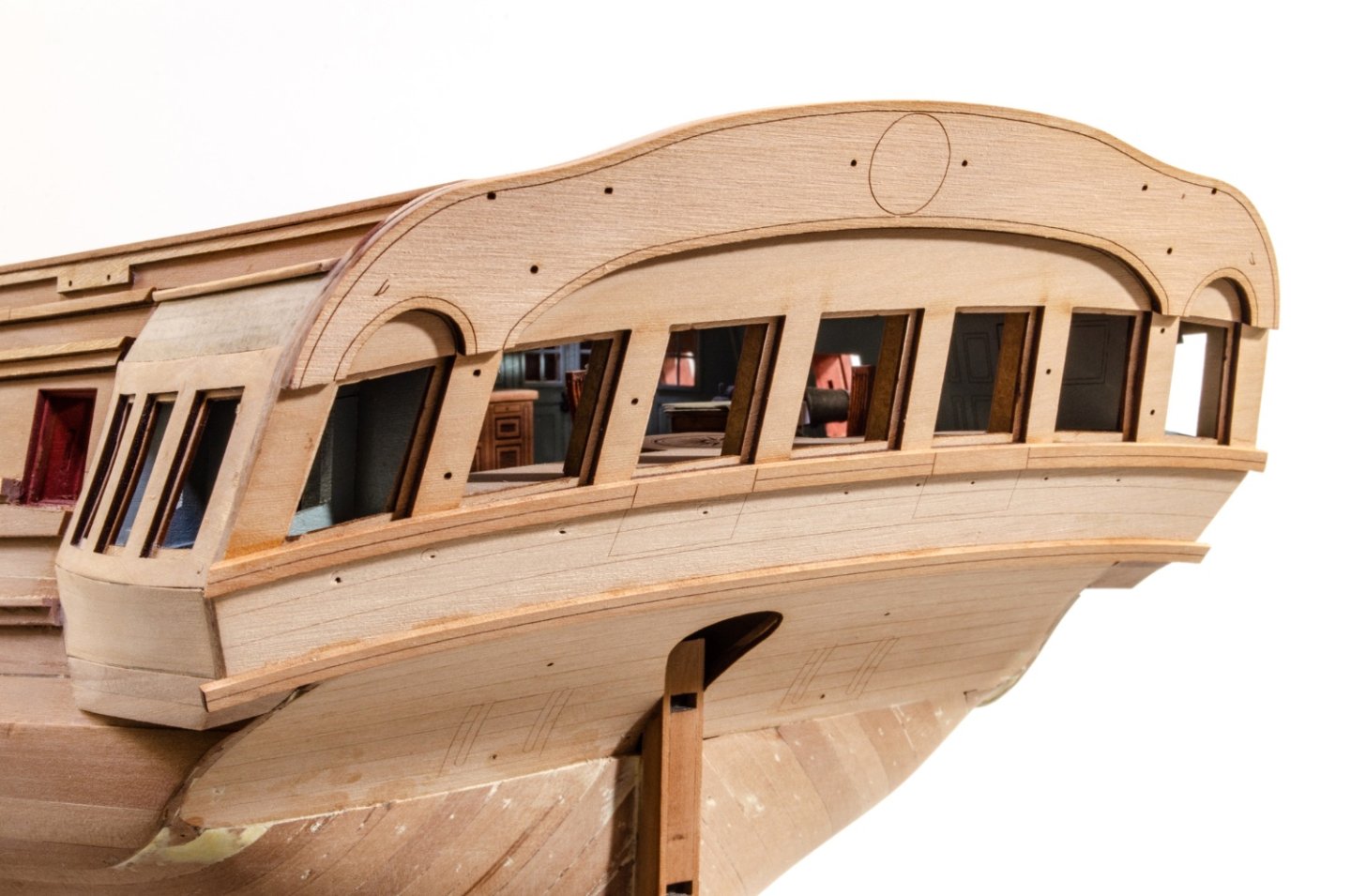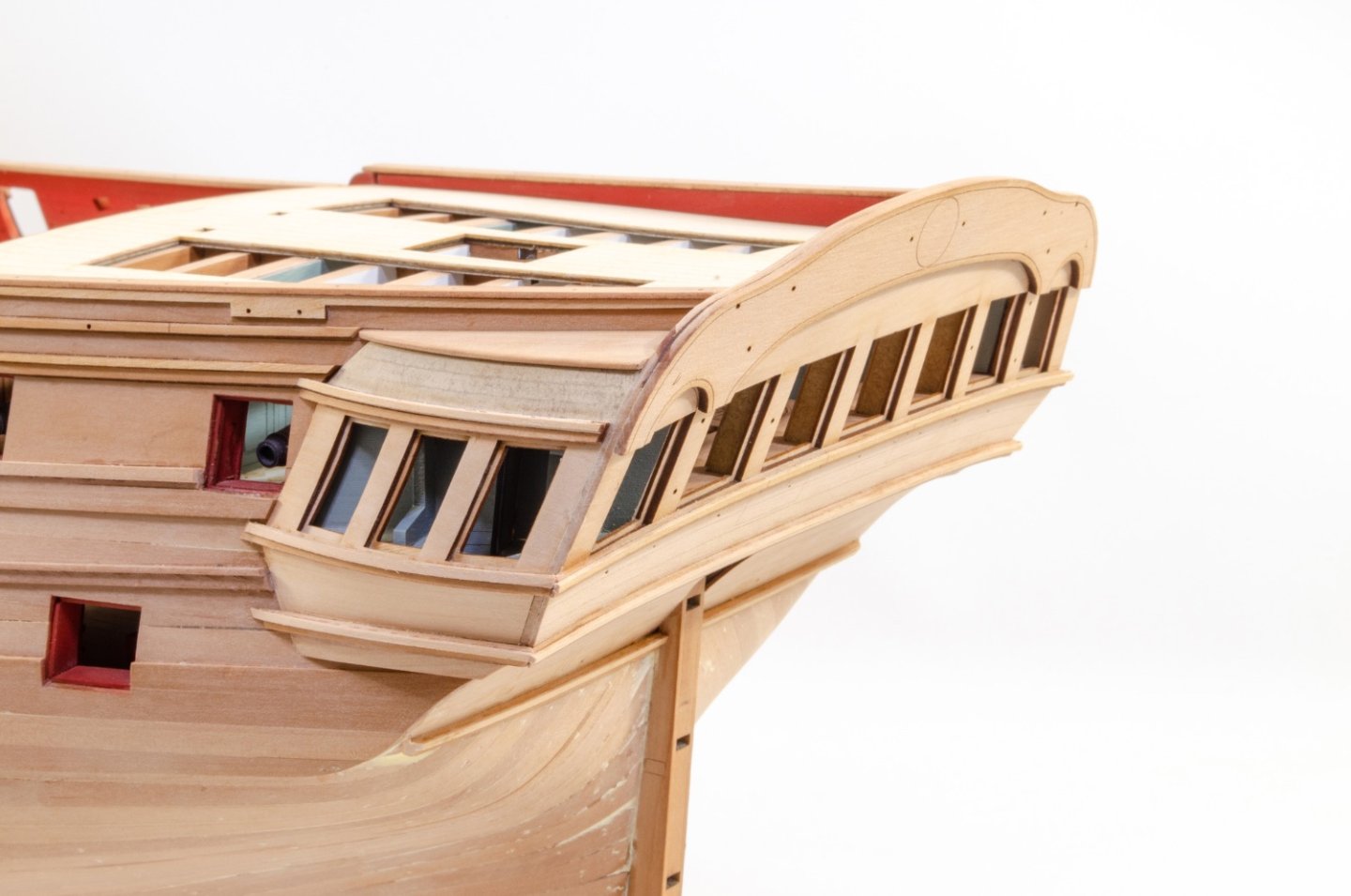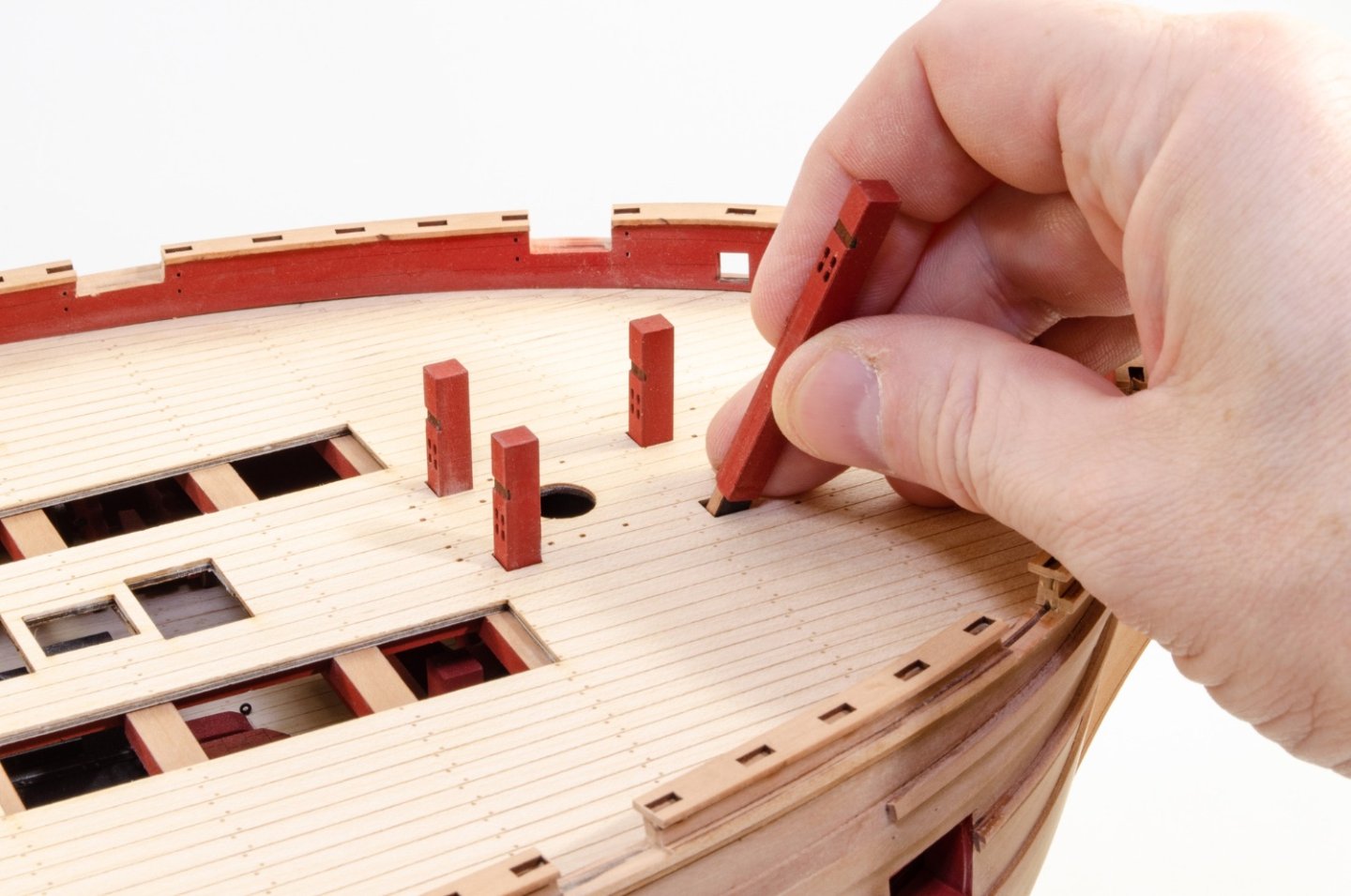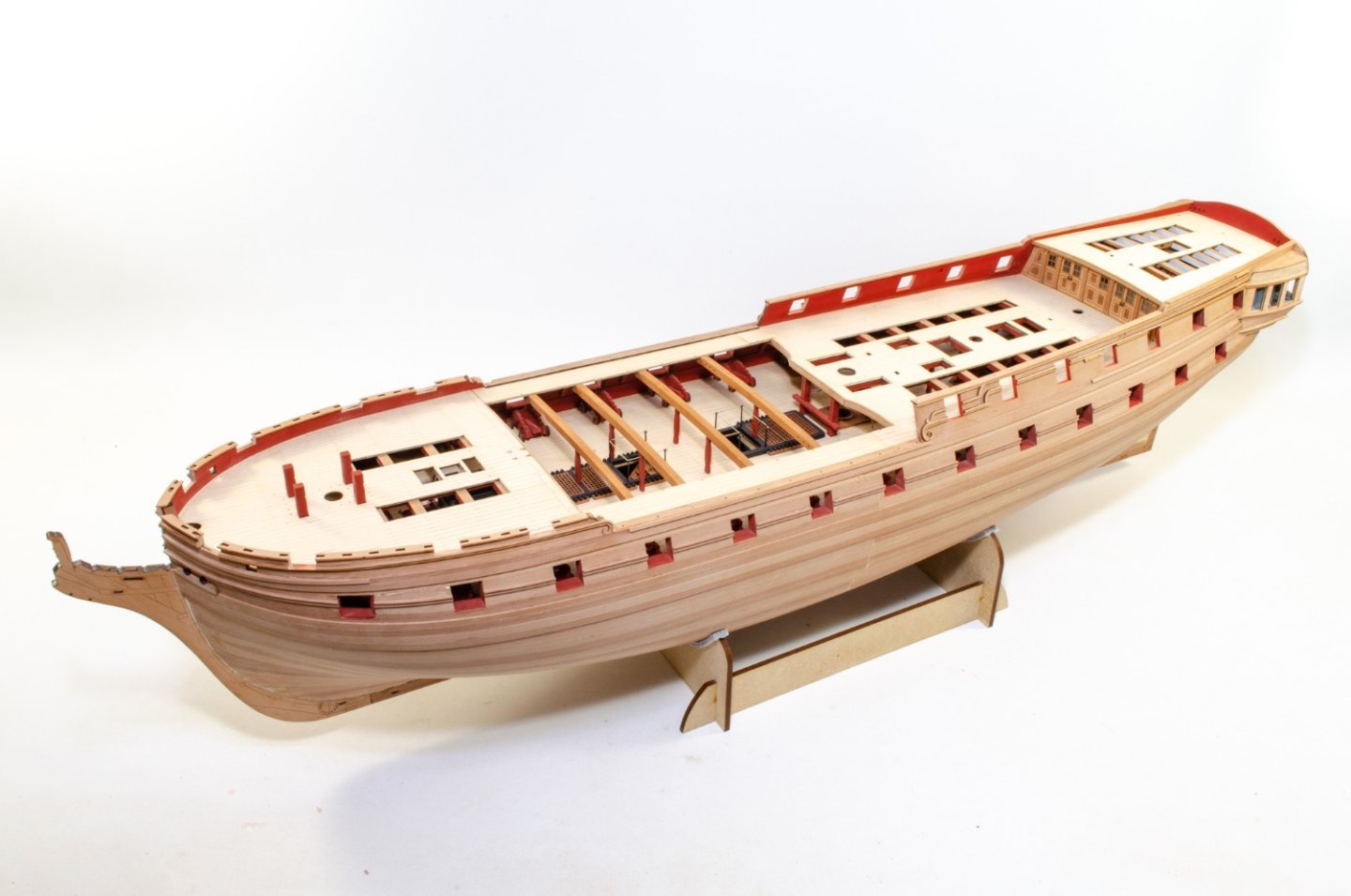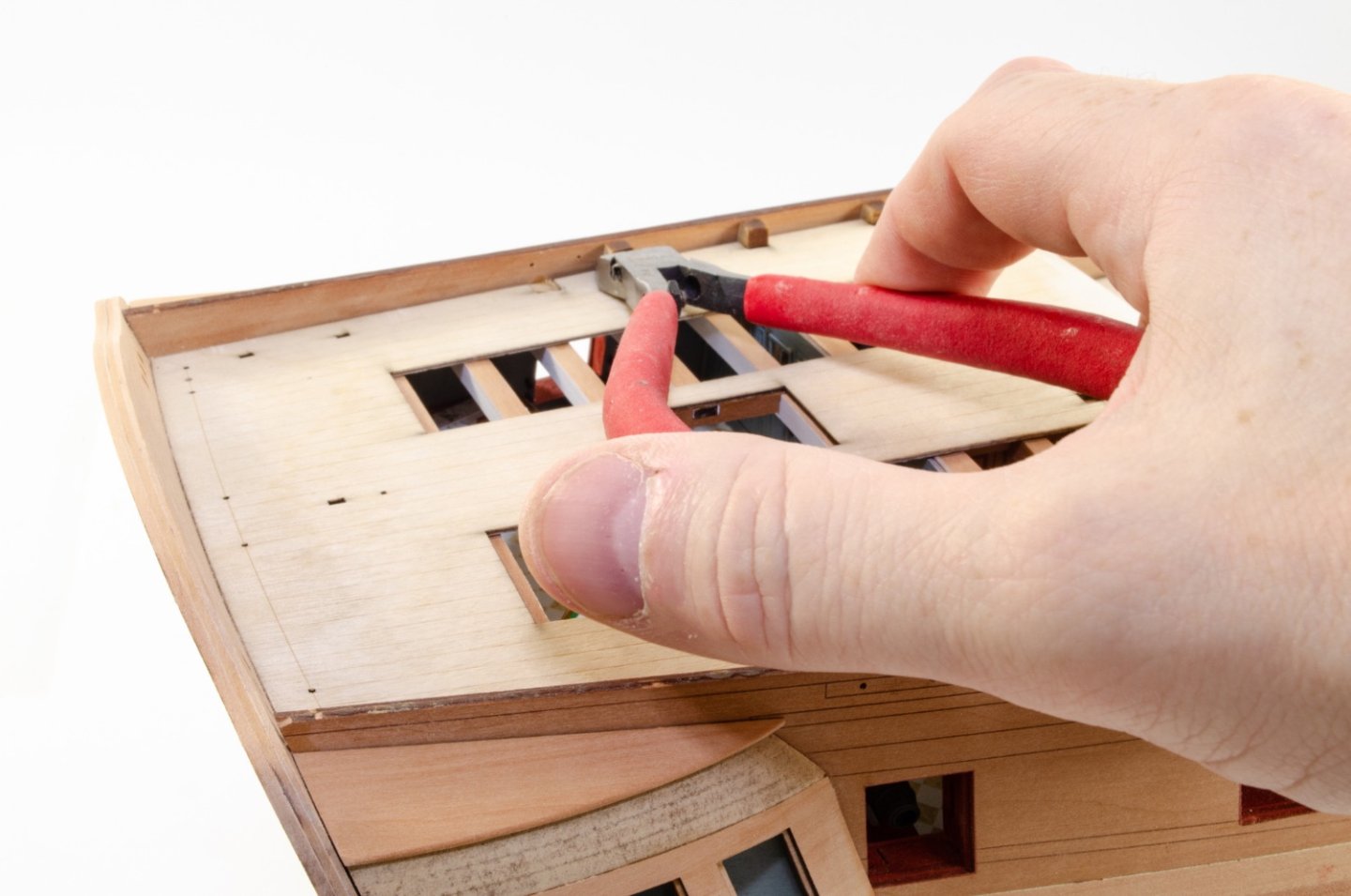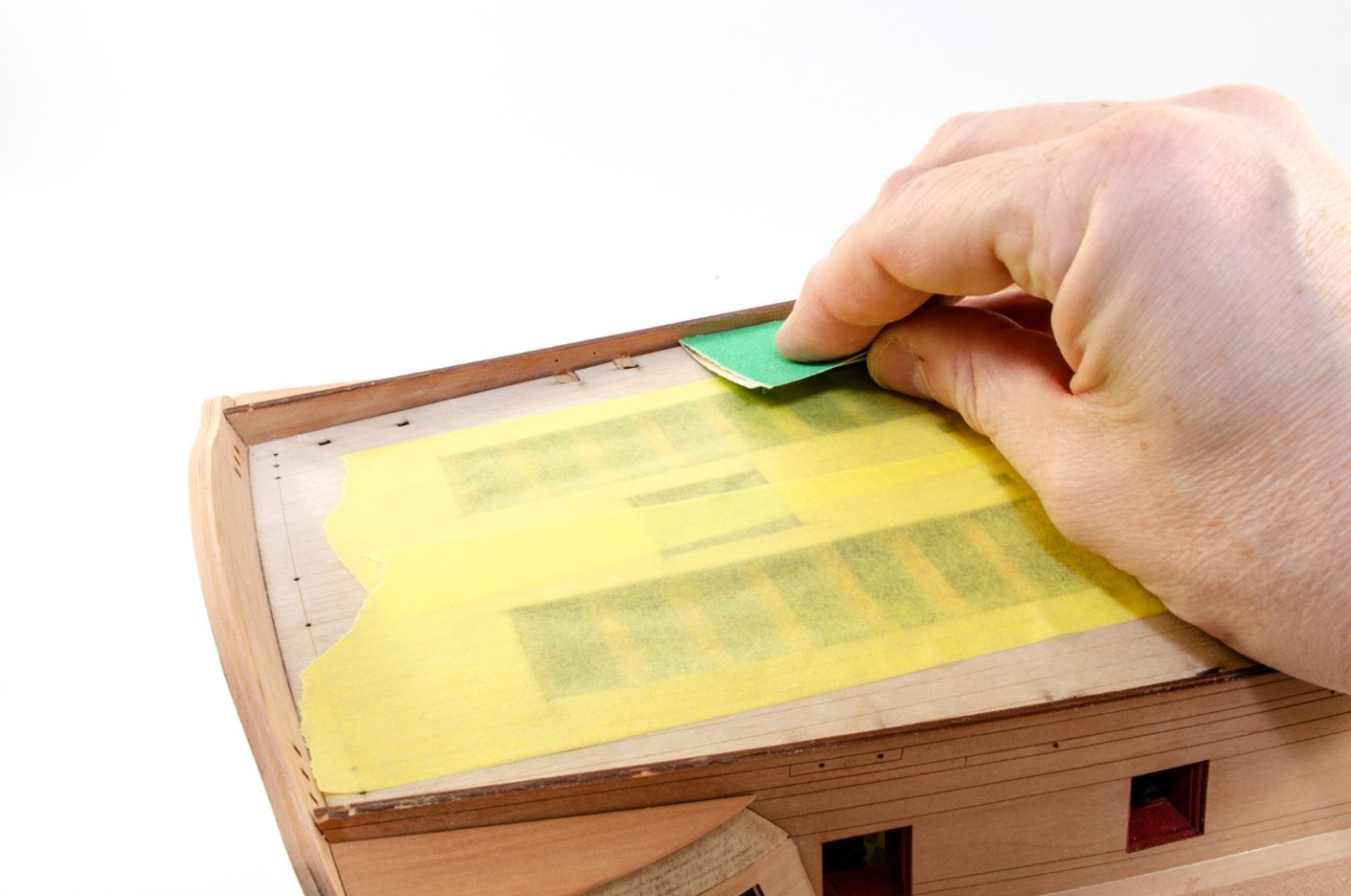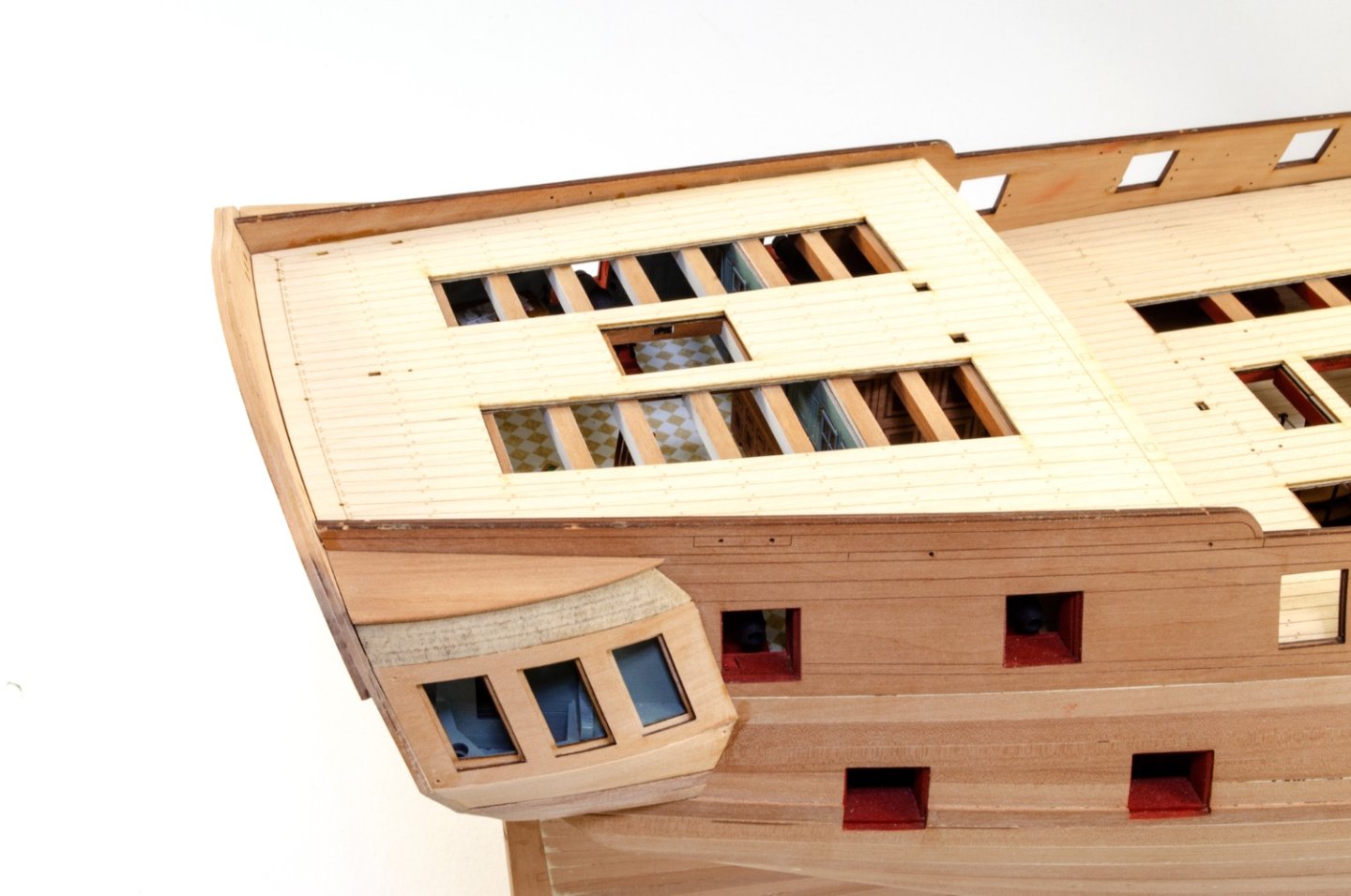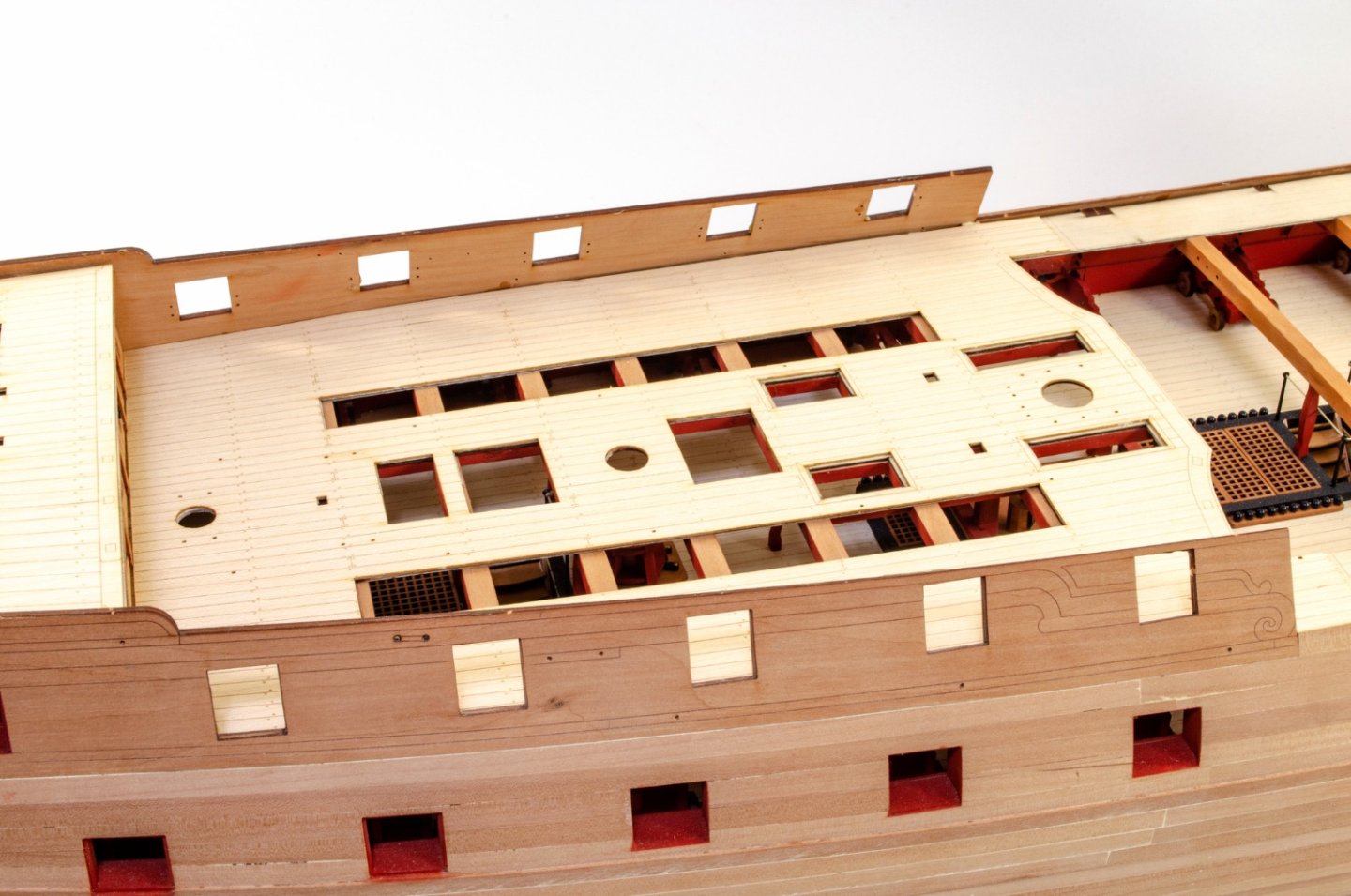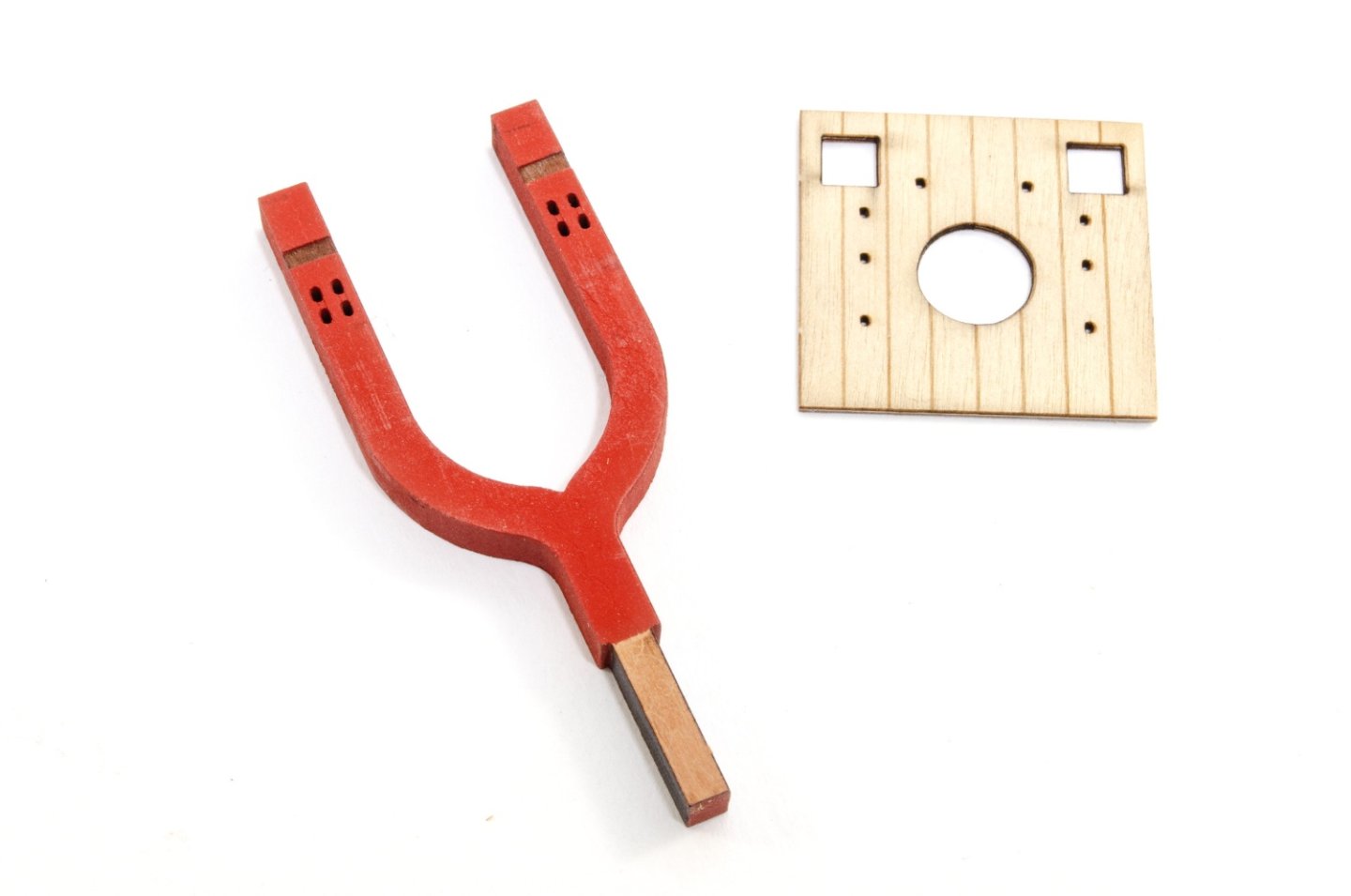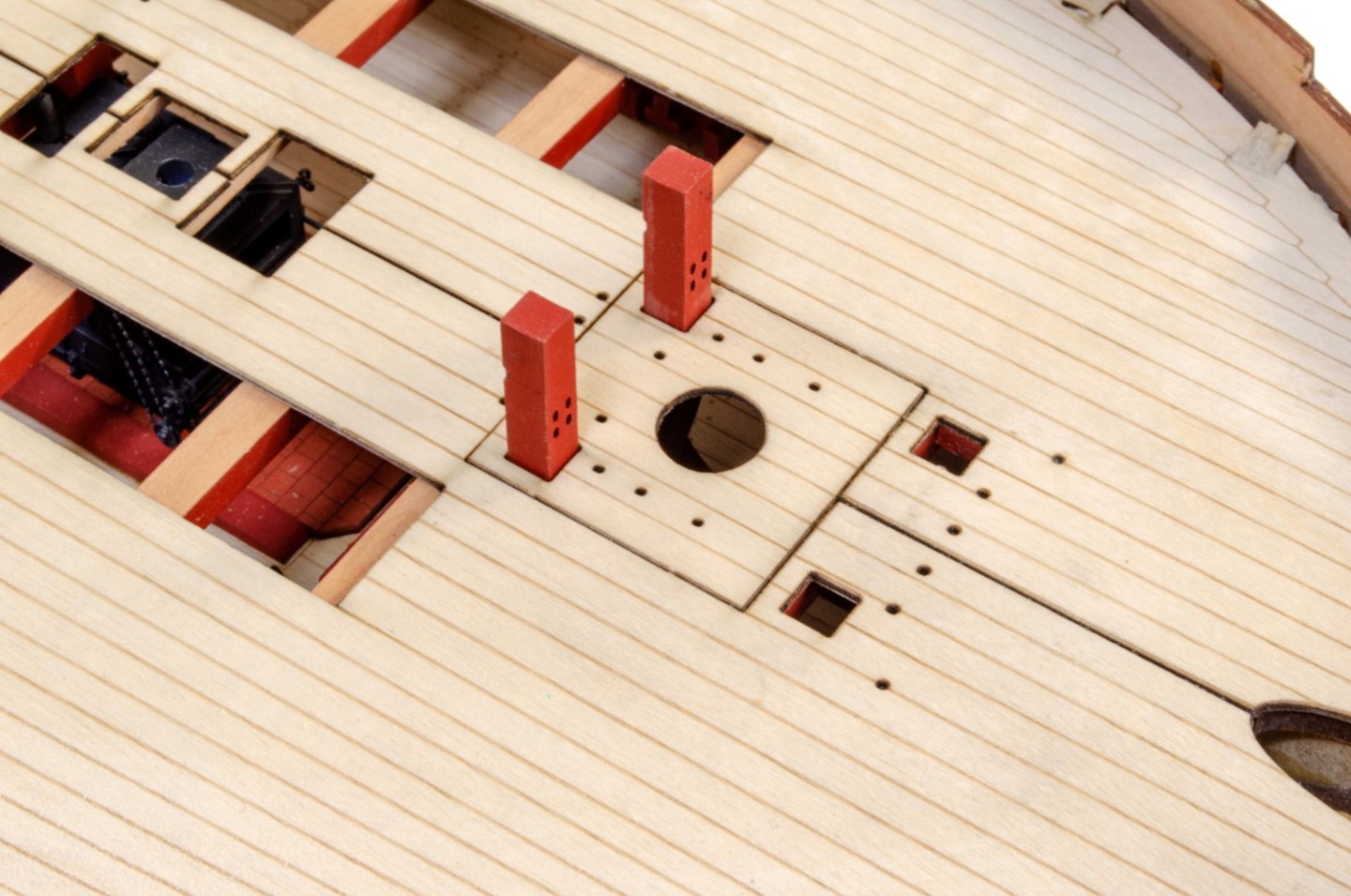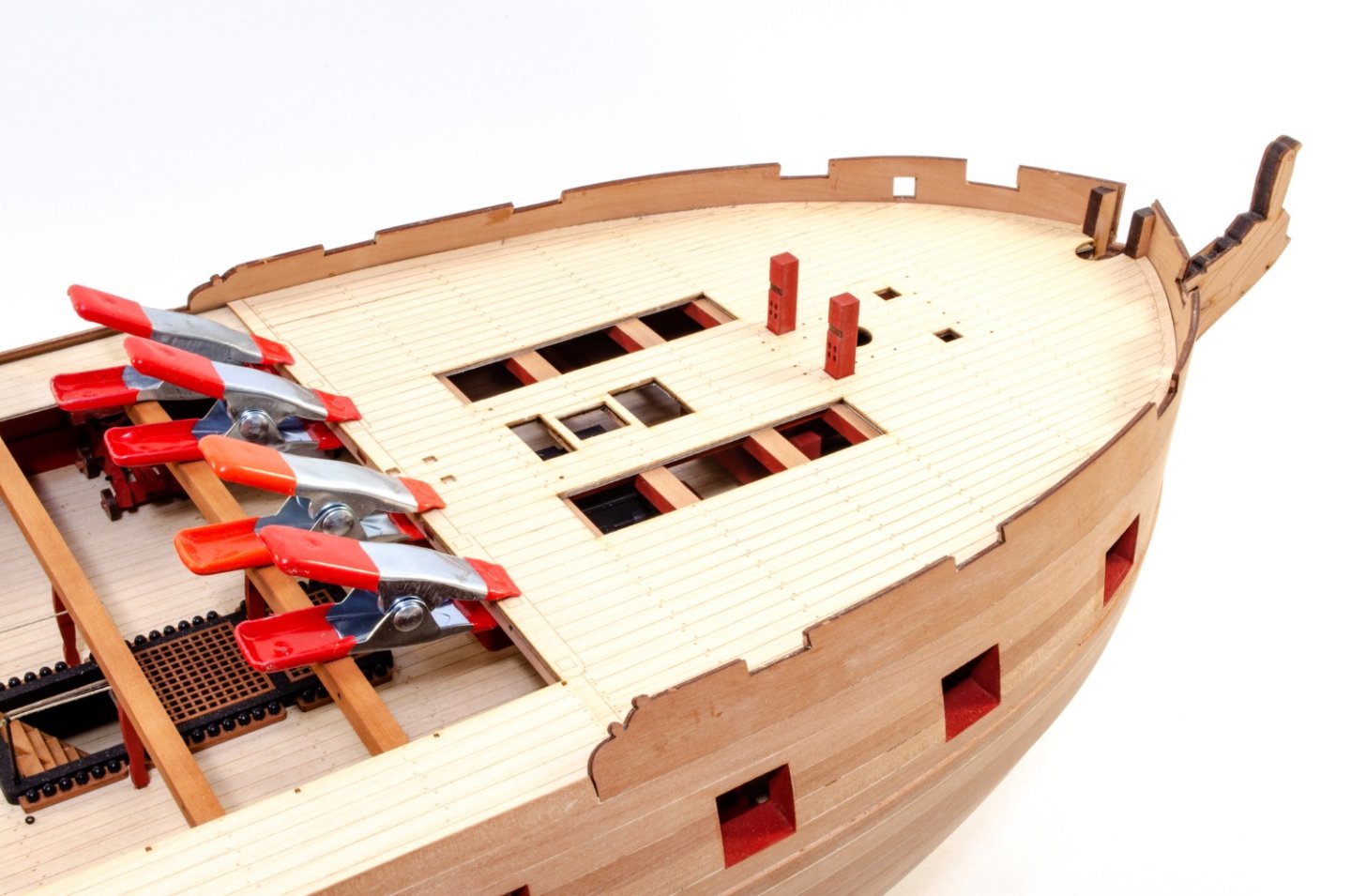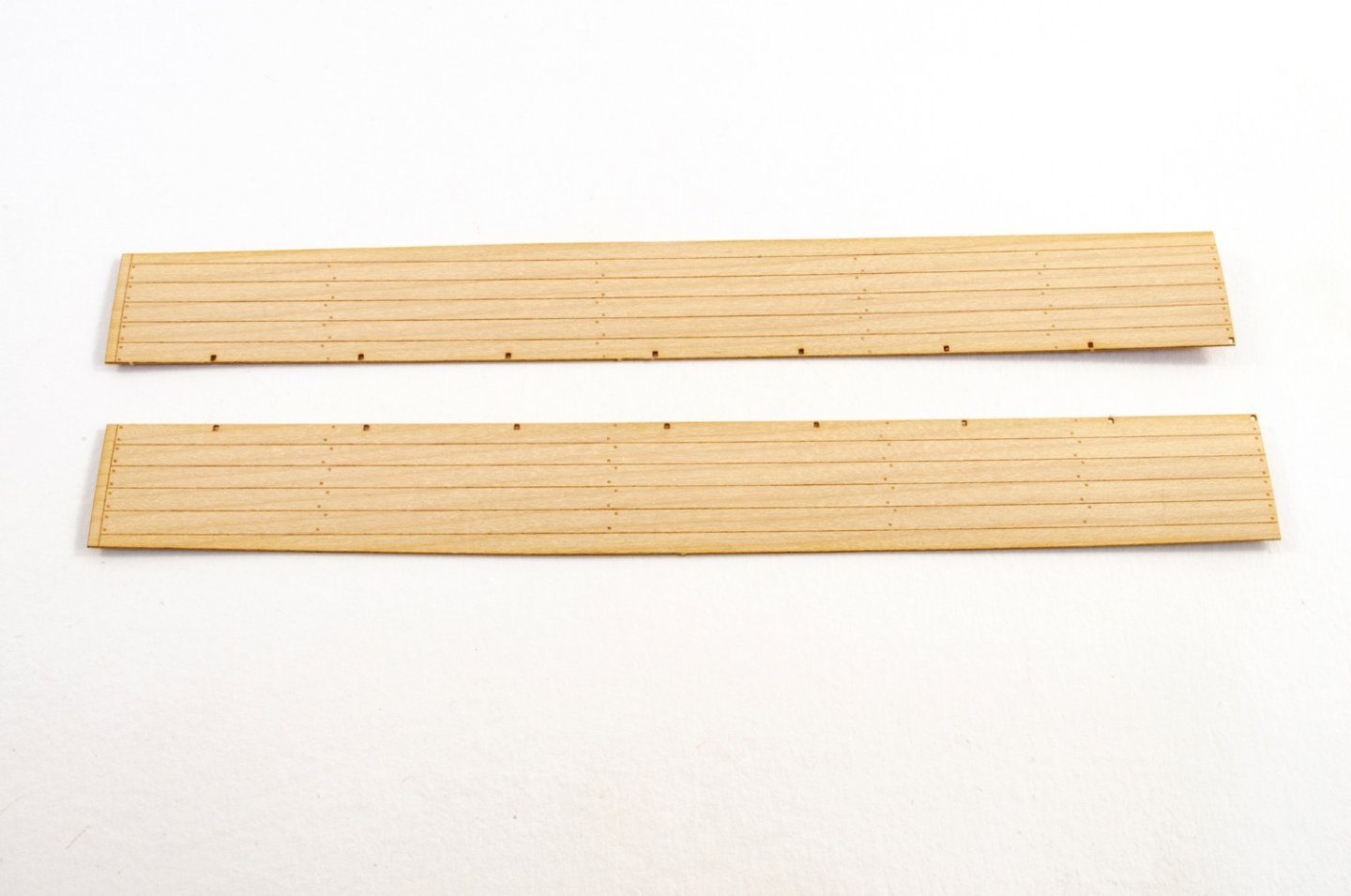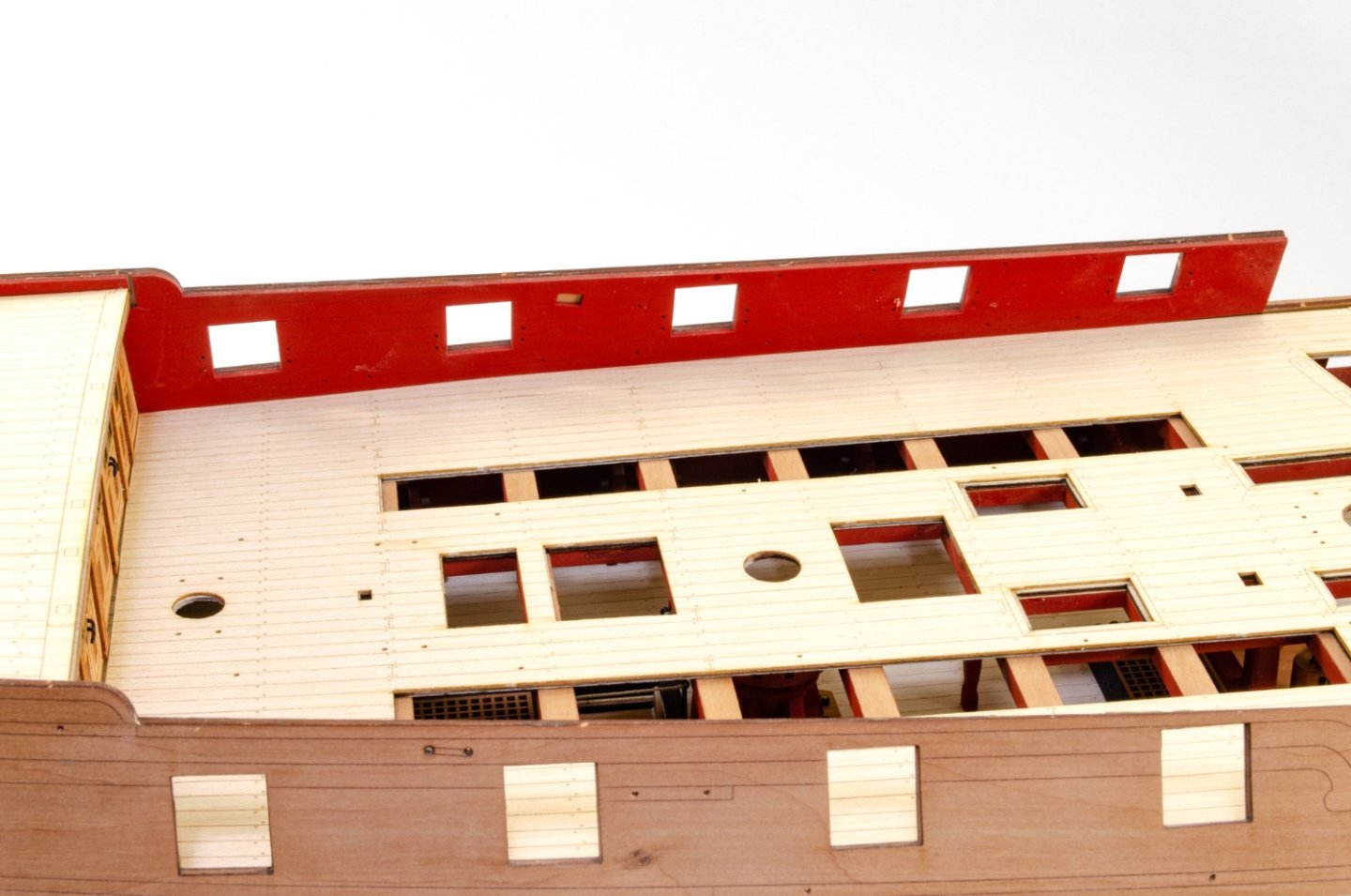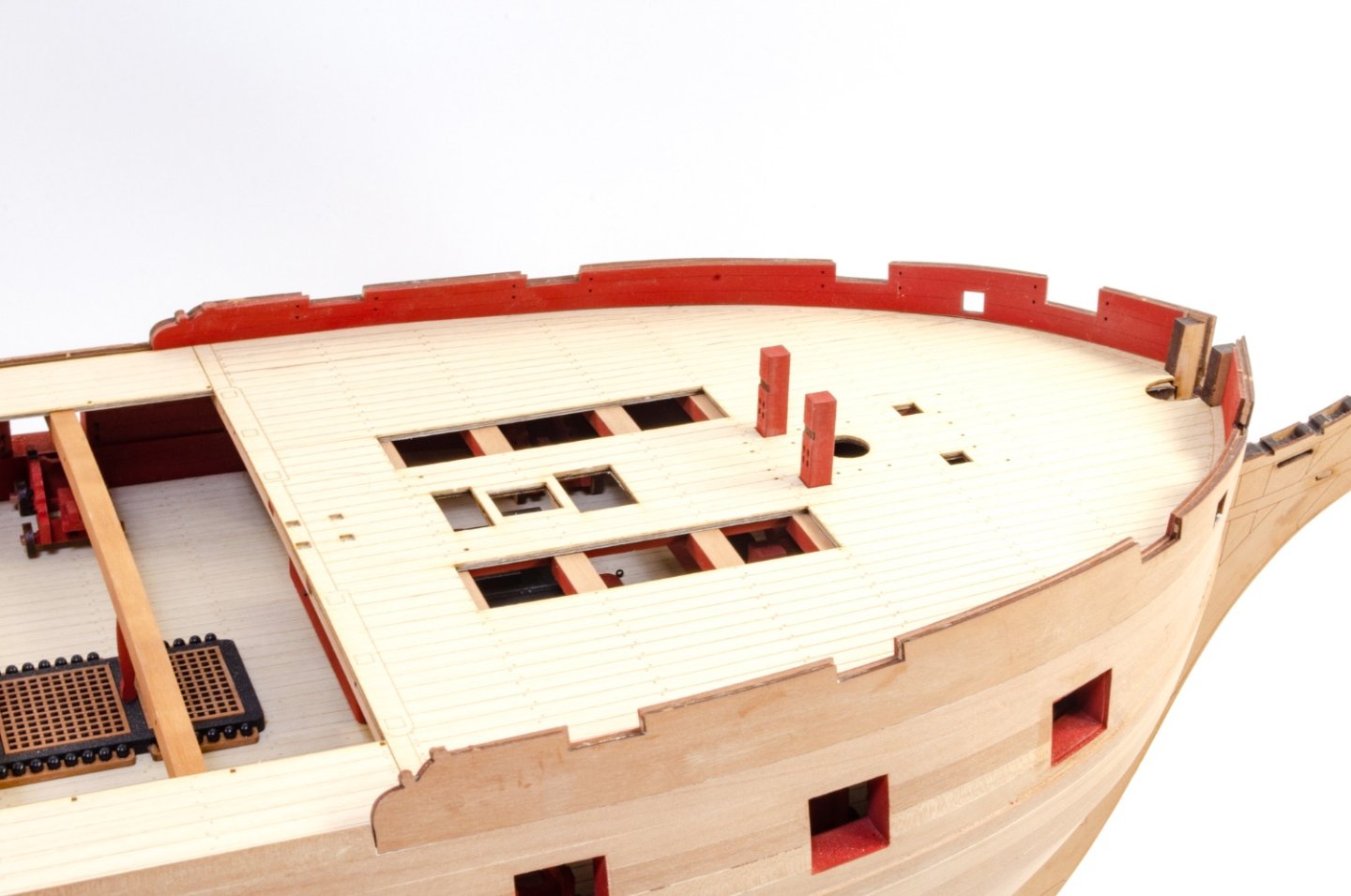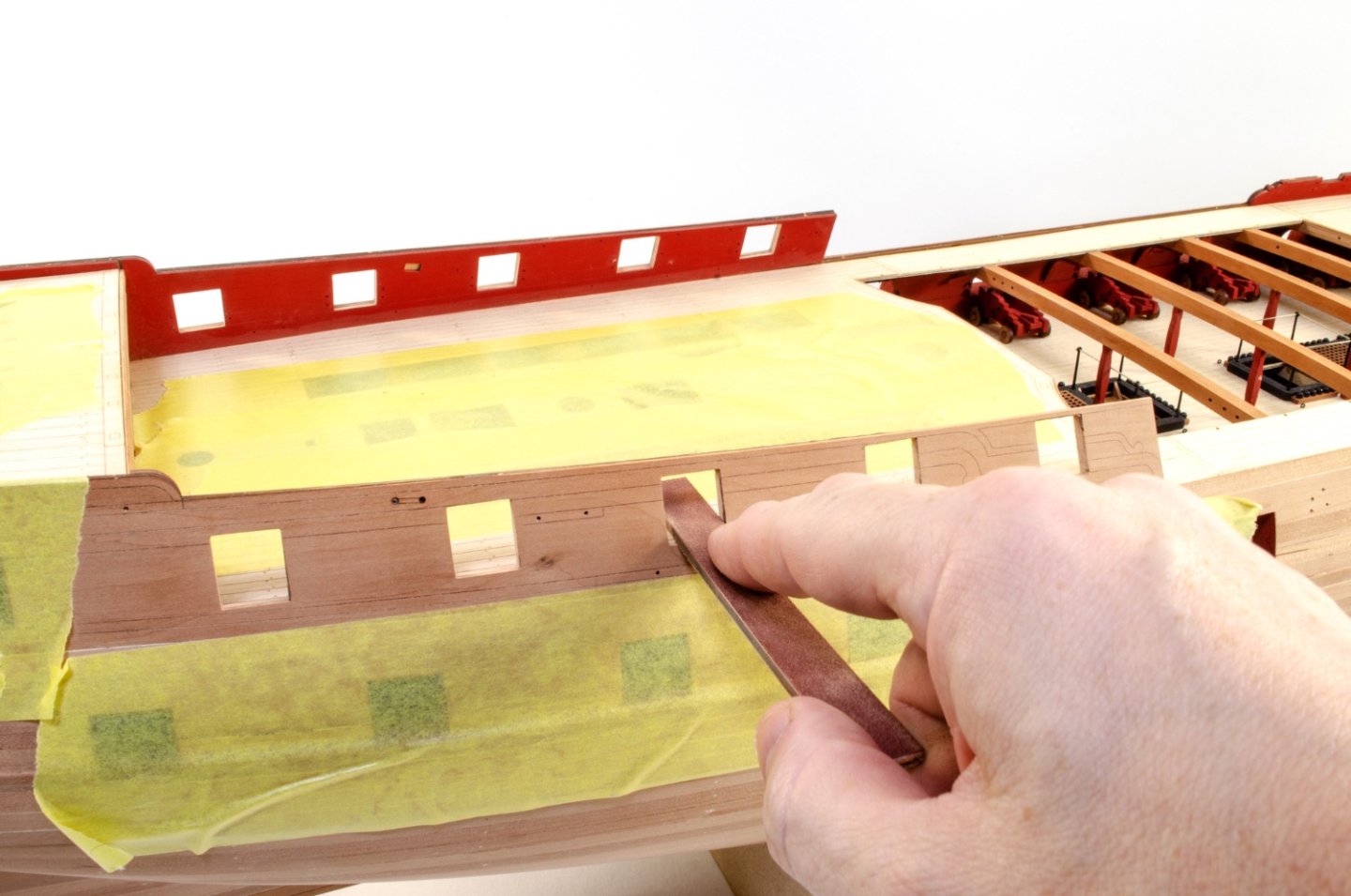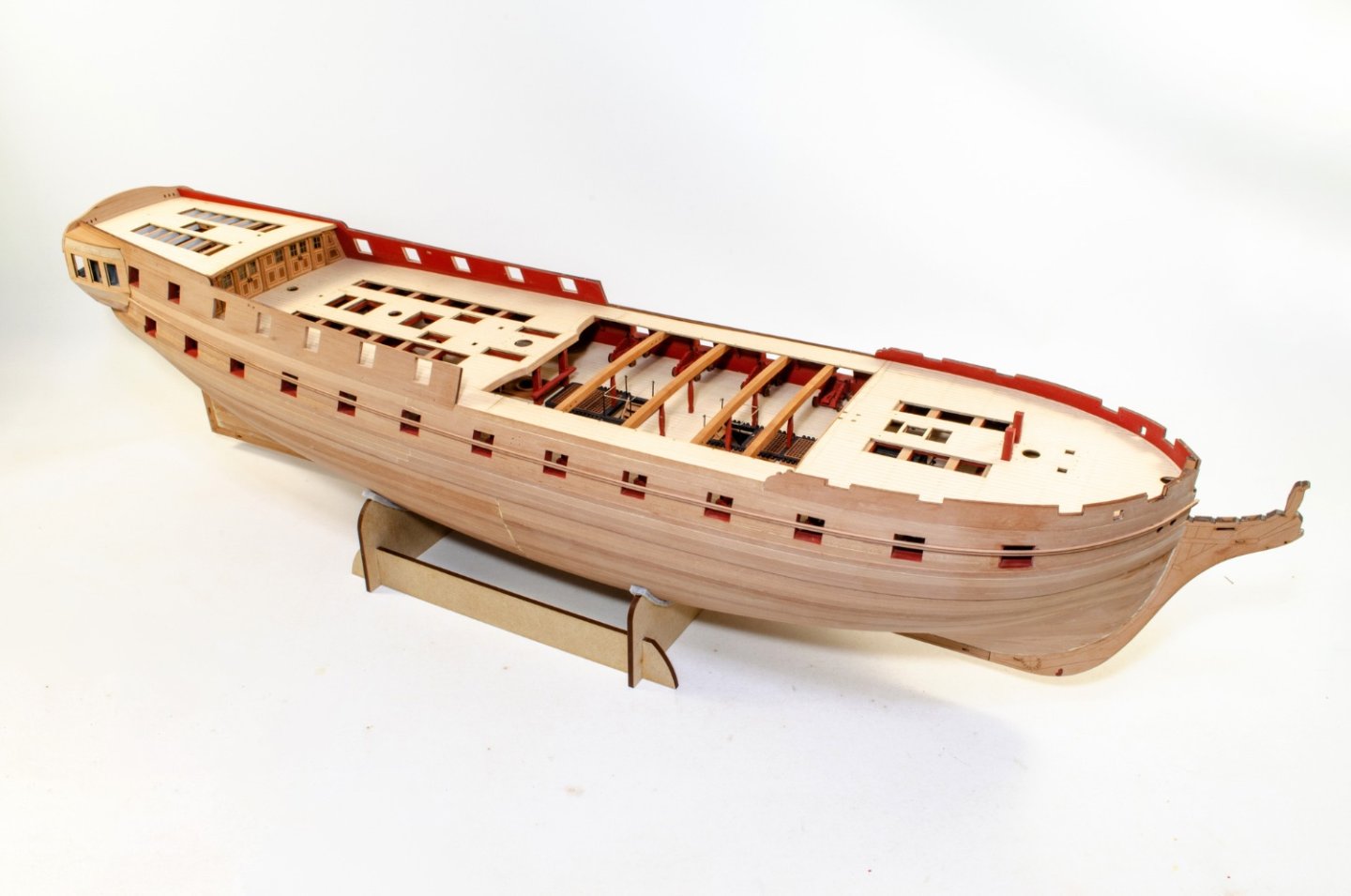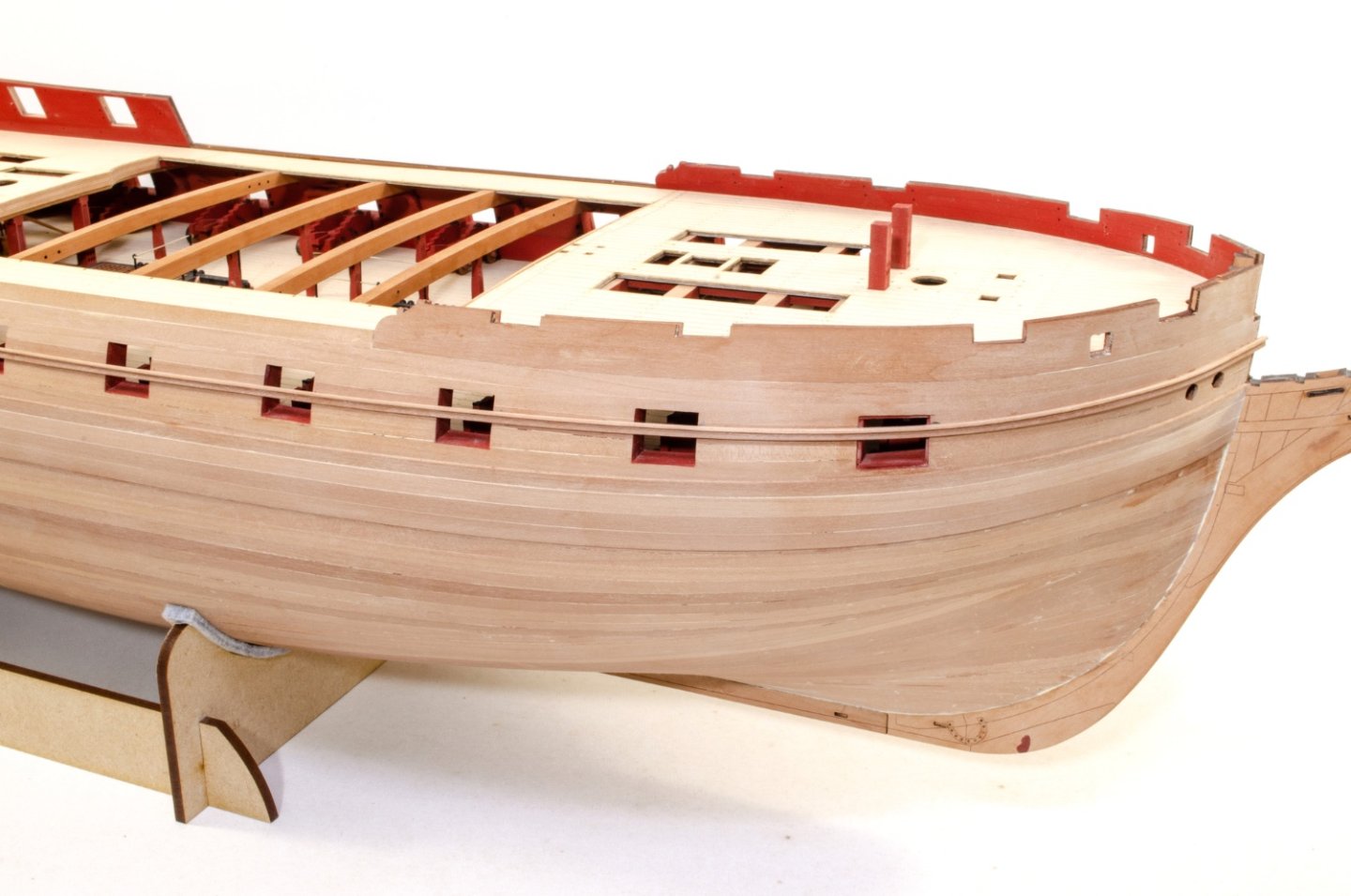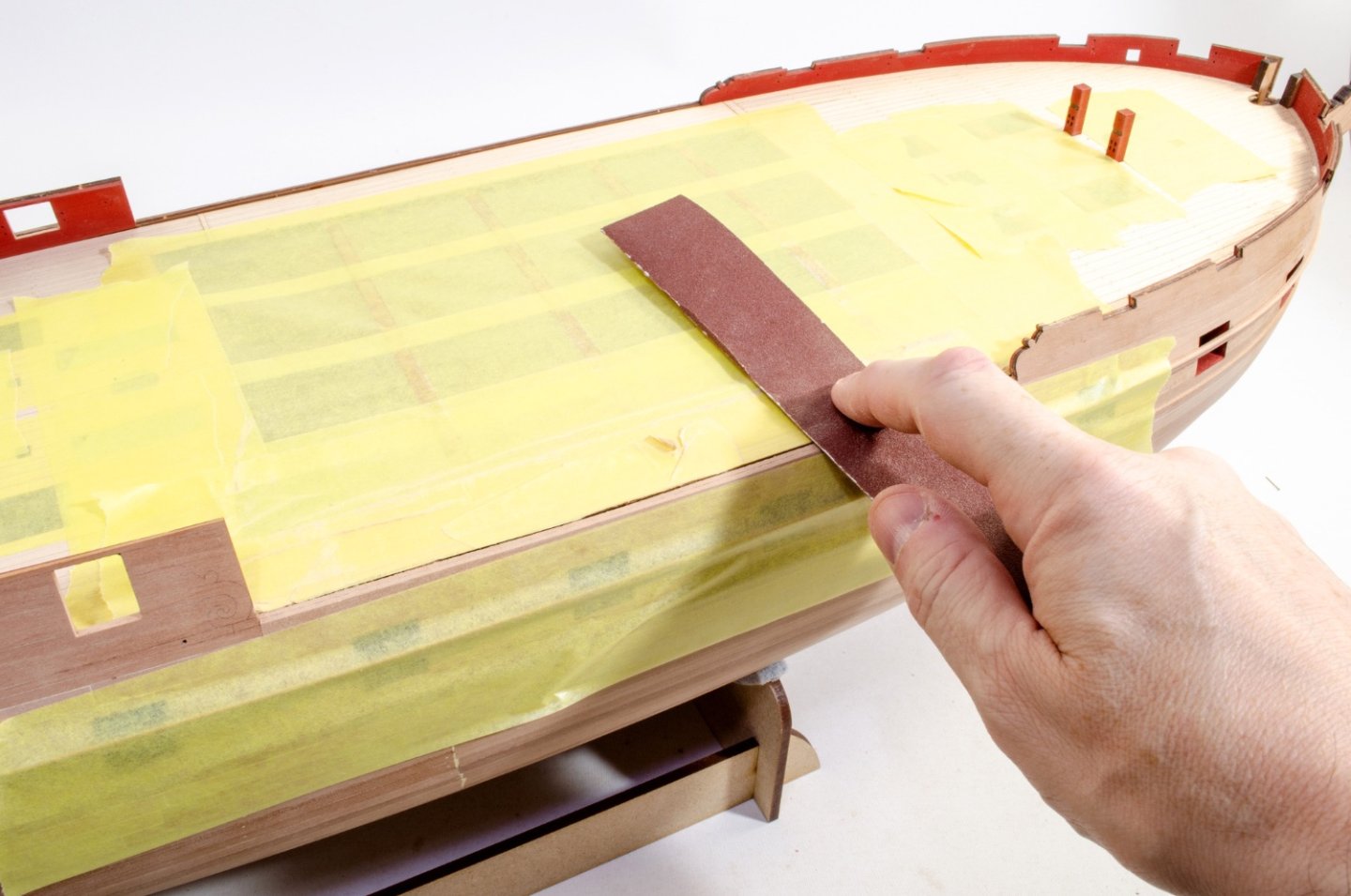-
Posts
5,534 -
Joined
-
Last visited
Content Type
Profiles
Forums
Gallery
Events
Everything posted by James H
-

kit review 1:48 San Bartolome by Pavel Nikitin
James H replied to James H's topic in REVIEWS: Model kits
Box 2 The parts on these sheets tend be quite identifiable. Here you see the combs for the deck gratings, rigging bitts, stairway sides etc. At the current moment, these parts are generally unidentified, except for that I think may be spars that need to be rounded off. More bitts to be seen here and also. Not all gratings are self-assemble. Here you see ones for the bow area, complete with the frame into which they fit. Some of the thicker timber here, showing parts for the keel, rudder and prow etc. Yes, a kit within a kit! This little box contains the ship’s’ boat which is a project in itself and I believe is also now available separately on their website. The model looks quite simple to build, yet I a fully-formed (when built!) clinker hull vessel. Bevel lines are on the bulkheads and the gunwales are pre-cut too. All the planks on this model are also laser cut. Not too sure if I like the part numbers being on the actual parts. They’d look better adjacent to the part and won’t need to be hidden when being built. Here you see the display stand (for if you want to display the boat separately), deck boarding, oars, keel etc. An MDF jig is supplied for building this lovely little boat. The instructions are simple enough, and I think more than adequate for this little model. We are now back onto the main ship parts. As yet unidentified. The main deck areas on San Bartolome are supplied as individual laser-cut planks. The order and position of these must be precise to coincide with various hull structures. If you use the optional paint set, it’s important to figure in the painting and antique weathering as you proceed with your build. From here, we’ll take a more of the timber sheets in this kit release. This is a good photo of the keel sections in this kit. You can clearly see the section of the laminated keel, and that the laminated parts are staggered, to create strength in the hull. Each slot is also numbered for the correct bulkhead. There are another three boxes of fittings in this carton, again with a number-engraved acrylic lid to hold everything in. These boxes contain gold paint for ornamentation, 3D printed lanterns, nails for the finished hull plank, brass wire, and very nice quality rigging rope. A very unusual feature of this kit are some laser-cut and pre-assembled hull sections that just need sanding to shape. I really do like this sort of feature. ...continued. -
1:48 San Bartolome Catalogue # GSB005 Ships of Pavel Nikitin Available directly for €564.68 This San Bartolome was supposedly a part of the ‘invincible’ Spanish Armada led by Alonso Perez de Guzman, 7th Duke of Medina Sidonia, from May to September of 1588. The Armada was battered in multiple skirmishes with the Anglo-Dutch naval fleet, composed of light and manoeuvrable ships led by Charles Howard. This clash is known as the Battle of Gravelines. Elizabethan Pirates excelled in that battle, especially the notorious Francis Drake. The confrontation between Spanish and Anglo-Dutch fleets lasted for two weeks. The Armada could not regroup and, refusing to invade England, headed North. The English fleet followed the Armada along the East coast of the British Islands. The Armada’s return was very challenging, having to go through the north side of the Atlantic Ocean, along the West coast of Ireland. Due to strong storms, the Armada’s ships were taken to the far North and West shores of Ireland. During this expedition, the Armada lost more than 60 ships, of which only 7 of them were lost in battle. The kit When this one landed on my doorstep, I certainly wasn’t expecting the sheer weight of the package! San Bartolome is spread over not one, but THREE heavy boxes which weigh 14kg in total. What made this more immense were the extra associated sets that were also included, pushing the package to a back-breaking 19kg. The whole lot was encased in a shipping box built from sheets of MDF, then heavily wrapped in cellophane and black plastic sheet. The package arrived safely and intact from Ukraine in a little over 10 days, with a small hold up in Kiev due to the war. First of all, you need to understand something about the style of San Bartolome. Despite many modern design innovations, the finished model is designed to look like an old, antiqued ship, built in years gone by. Pavel Nikitin describes the finish as ‘retro’, Now, let’s take a look. To give you an idea about the finished size of this galleon, here are the dimensions: Length: 980mm Width: 540mm Height: 1030mm The box lids of all three San Bartolome packs, are adorned with a large, shiny label which depict the ship from the stern quarter, with the lighting highlighting the intentional retro style of the vessel. The label also states that the whole kit has a total of 3876 wooden parts. That should keep you occupied for a while. Box 1 Opening the lid shows that the first box, like the others, is crammed full of parts. In fact, it took me a long time to actually get everything back in the box after I’d done the photos. All sheets inside are grouped and wrapped, with a slip of paper to identify which group they belong to, making it easier to locate the said part. That’s quite handy when you consider that there are around SIXTY sheets of parts in this kit. Instead of shelf-standard plastic containers for fittings, a series of custom-made MDF boxes are included, with a Perspex lid that has engraved numbers to identify what’s in each compartment. The kit comprises of parts sheets that are cut from walnut, cherry, alder and beech. All of them are very neatly laser cut with parts that include bevel lines, where appropriate. The parts you see here with bevel lines, will form composite blocks which fill the bow area, creating almost solid area onto which to plank. You’ll also see that these sheets are in two different wood types, with the cheaper timber forming the parts what create the underlying structure that will be covered over. These unusual parts are actually to build up the various ports and openings for the side of the hull. Many sheets are as yet unidentified. The instruction booklet supplied with the kit is Part 1 & 2, and these may be from the forthcoming Parts 3 & 4. The cutting is very nice and lots of scarph joints to be seen. These sheets contain parts for various planked deck sections and panels which fit into the hull sides prior to hull planks. These define the positions for the gun ports etc. Various decorative elements are seen here, such as those for the bow. We are now onto some very large ply sheets. The bulkheads for this model are quite large and are also engraved with bevel lines. You can see cut outs for various stringers and the aforementioned built-up port that fit into the cut-out position parts you can see in a previous photo. Also here is a section of the false keel. The hull comprises a fore and aft half, and is actually make up from three laminates of ply. Pegs help to align the parts. Also present in the bulkheads are positions for bulkhead spacers to fit, keeping the bulkheads equally spaced from each other. More ply, this time to create various structures either within the hull design, or for building skeletons on deck structures. This kit is the ‘V2’ of San Bartolome, with the original having laser-engraved carvings. This version has 3D-printed parts for various external ornamentation. It’s quite difficult to see the quality in these pictures, but to my eye they look perfectly good and smooth. You may need to paint these to replicate the antiqued colour of the wood that the designers set out to be used. These parts are presented in another MDF box, covered in cellophane. These are the boxes of standalone components, with shaped timberheads, brass cannon, pillar, belaying pins, cleats, rigging blocks and multipart closed heart blocks etc. .....continued.
-
1:32 Captain John Smith's Shallop Catalogue # CJSS01 Ships of Pavel Nikitin Available directly for €98.56 When the early colonists came to the New World at the turn of 16th-17th centuries, they quickly realised a need in small, universal, and durable boats to explore the coast safely and to start trade relations with local North American tribes. One of the most important aspects was not local boat construction, but the assembling Europe-built vessels beforehand. These boats were disassembled and shipped to the New World on the larger vessels used by English sailors to cross the Atlantic Ocean. Boats were usually between 25ft to 45ft in length, and utilised both sail and oars. They tended to have either one or two masts and at least one sail, as wells as six to eight oars. They could carry up to 25 persons with a food enough for a few days. The boats played an important role in survival and the development of the first settlements in the New World. Captain John Smith sailed with a crew of 14 persons and set out to explore and map out the Chesapeake Bay in the summer of 1608. The crew sailed more 1700 miles over just three months. This story is well known because of the meeting that Captain John Smith had with a Native American princess, Pocahontas, during his trip. The legend of Pocahontas and John Smith has been highlighted many times in a literature and cinema. All the notes and drawings of this journey were described in detail in Captain John Smith’s diaries. Unfortunately, he didn’t describe his shallop in detail, and all we really know is that it arrived in The New World, disassembled aboard the "Susan Constant". The kit Pavel Nikitin is probably not a name you’ve heard of before, or at least much. Pavel is a Ukraine-based designer, designing and producing model kits with the assistance of Eugen Troppmann. This is a typical cottage-industry operation, as are many other contemporary companies, but the current situation in Ukraine means that these guys are working under the hardest of conditions in order to fulfil the kit orders they’re currently getting. From being sent, the packages I received took only around 10-12 days to arrive here in the UK, after an understandable holdup in Kiev. Captain John Smith's Shallop comes in a relatively large-sized box that weighs around 2kg. That seems quite heavy for a 1:32 shallop, but the reasons for that will soon become evident. The box label depicts the finished model in two photos, showing the boat with deployed sails and also a lovely interior detail shot. For your own info, this little boat in 1:32 has these dimensions: · Length: 272mm · Width: 110mm · Height: 350mm All kit parts are laser-cut, as you would generally expect for a modern kit, and all the sheets supplied in this kit come wrapped in numerous sheets of cellophane to protect them. Here you can see exactly what you get when the box is opened, minus the plans and instructions that I moved for clarity. The kit itself is manufactured in several types of timber, namely walnut, cherry, alder and beech. All sheets are nicely clean cut all the way through, and the grain lends itself to the scale of the model. You’ll see here that the hull frames are provided in sections, with the clinker plank elements clear to see. There are also bevel marks to make sure the hull is properly faired for later fitting the pre-cut planks. And here you see those planks, but from 0.6mm wood, so they’ll be nice and easy to manipulate into place. How do I know? I’ve been watching Olha Batchvarov’s series of videos on YouTube, clearly showing how this model is put together. I’ve included a link to her series of Shallop videos in this article. Other parts on here include components for the barrels. The inner seating at bow and stern comprises of individual planks that make up the whole part, as per the real boat. Even the side paddles are built in the same manner, adding to the finished realism. Here you see parts for the keel and display stand on the middle, thicker sheet while the other sheets contain inner strakes, oars and barrel staves. Now, that kit weight. There are numerous sheets of MDF in this kit which go to assist the building of this little boat, and this one is very useful. Those hull frames you need to assemble are assembled inside the cut-outs in this sheet. This will ensure you get 100% correct alignment of all the parts. This MDF sheet contains parts for one of the THREE jigs that are supplied to help you build the boat. The first jig concerns the initial framing onto the multipart keel. This setup is very common with plank on frame model kits. Another sheet contains more frame assembly parts and also more parts for the framing jig. Now, this jig is what you sit the hull onto so that you can plank it. The hull sits on this upside down, making the jig a sort of assembly buck. Being clinker of course, planking starts with the garboard and works upwards (or downwards on this jig!) to the gunwales. A third jig is included which the planked hull sits into so it may easily be fitted out. The jig materials far exceed those to build the boat, hence that 2kg kit weight. This is a feature which isn’t normally included in a kit, and that’s a pre-cut, slotted mast and gaff. These are assembled from sections that have been glued together by the company. They are pre-tapered and you just need to round the parts off to complete. These guys also make their own fittings boxes out of laser cut MDF, with a sliding Perspex lid that’s engraved with the part number of each compartment. Small foam pieces are pushed into some compartments to stop the smaller, more fragile parts from rattling around. This box contains rig cord which is actually quite nice in quality and not shop-standard as in many kits. Three frets of copper photo etch are included, as well as two brass ones for the many detail parts within the hull and for masting. Here you can see various rigging blocks, 3D-printed lantern and other laser-cut, shaped parts. A small flag is also included. A good quality sail material is supplied too, printed. This will need some work in adding the boltrope etc. FOUR sheets of large plans are supplied, showing the hull detail, masting, rigging, fitting out, etc. Instructions A 47 page A4 manual is also supplied, ring-bound with clear plastic covers. The type of illustration is a beautifully detailed line-drawing style that clearly illustrates every aspect of the project, and with all parts numbered clearly. No drawing is ambiguous and everything looks very simple to build. Conclusion This is such a wonderful and beautiful little kit of a significant boat. It won’t take up much display space despite the scale, and the price is very attractive too. This certainly isn’t a long-term project but the finish certainly seems to belie that fact. Head over to Pavel’s website and support this young company, especially at such a difficult time. I’m very sure you’ll not be disappointed with the package you receive. My sincere thanks to Pavel Nikitin for sending the kit that we’ve reviewed here on MSW. Click on the website link to buy yourself one of these kits.
-
I always find these fun to build! The flying transom was probably the trickiest part of the build. That was the last of the previous ship's boats I built. Currently on a 24' cutter for Indy, again using 2mm (approx) by 0.8mm strips.
- 106 replies
-
- Admirals Barge
- Vanguard Models
-
(and 1 more)
Tagged with:
-
The hull is entirely painted/coppered 😆
- 473 replies
-
- Indefatigable
- Vanguard Models
-
(and 1 more)
Tagged with:
-
Having a new figurehead painted with bronze coloured armour.
- 473 replies
-
- Indefatigable
- Vanguard Models
-
(and 1 more)
Tagged with:
-
Here's a small update...very small! This is Indy's figurehead, albeit still needs some touching up. Again, this was done by my friend, Mark. He's far more patience (and ability!) than I have.
- 473 replies
-
- Indefatigable
- Vanguard Models
-
(and 1 more)
Tagged with:
-
They are indeed a delight to deal with. My questions always meet with quick responses.
-
As the title says, we are pleased to announce that Ships of Pavel Nikitin are now a sponsor to MSW. https://shipsofpavelnikitin.com/shop This is a new Ukrainian company which have a small but growing number of original model kit designs with some nice building features which I'm sure you'll like. In the next week, I'll be bringing you reviews of: 1:48 San Bartolome 1584 Building cradle for San Bartolome Paint set for San Bartolome Display cradle for San Bartolome 1:32 Captain John Smith's Shallop. We are shortly being sent their new 1:25 Viking Drakkar too. These guys are operating in the most appalling of conditions in Kiev, with rocket attacks taking out their power and water etc. To continue to create thee kits in that climate is amazing. I hope you'll support them and welcome them to MSW. Their banner is now on our site too.
-
That's what makes them lovely projects for the beginner and 'in-between' builds too. Easy to display. I have my Saucy Jack on my fireplace at the moment.
- 32 replies
-
- Saucy Jack
- Vanguard Models
-
(and 2 more)
Tagged with:
-
The deck shouldn't spring at all as it slots into the notches at the bottom of each bulkhead ear. That's important as you want the deck level to be even with the engraved lines on the inner bulwarks that you'll later fit. She's looking real nice!
- 32 replies
-
- Saucy Jack
- Vanguard Models
-
(and 2 more)
Tagged with:
-

Mary Rose – an English ship of the Mediterranean concept
James H replied to Waldemar's topic in Nautical/Naval History
-
I can tell you this kit will be with me in the next day or two, so I'll be able to give you an in-box appraisal of her. There will also be the Captain John Smith's Shallop too, plus in the near future, a reworked and new Viking Drakkar release. Pavel is managing to get his products out of Ukraine. It just takes a little extra time. The packages were sent on 13th Oct, and had a mismatch while at Kiev which delayed a few days. Still not too bad though.
-
Remember, those bevel lines are only approximated. They'll help you take off a chunk of material before assembly, but will later be faired in properly.
- 32 replies
-
- Saucy Jack
- Vanguard Models
-
(and 2 more)
Tagged with:
-
Looking real nice. No matter how perfect we think we have the hull, paint always shows it isn't! I've never, ever been that lucky.
- 106 replies
-
- Erycina
- Plymouth Trawler
-
(and 3 more)
Tagged with:
-
Looking forward to this. BTW, I removed the text formatting from your original post which covered the text in a brown covering.
- 32 replies
-
- Saucy Jack
- Vanguard Models
-
(and 2 more)
Tagged with:
-

Correct Glue
James H replied to Blacklab's topic in Painting, finishing and weathering products and techniques
I use Gorilla CA gel all the time. It's all I'll ever now use (of all CA brands) for constructional stuff, when I'm not on Titebond. -
....continued. Now, those laser cut rails. These are now glued into the engraved positions on the outer bulwarks. Some extra parts are added to these to create a 3D relief. What we believe is the remainder of the original second wale from her 64-gun days, is now fitted. The position of this is crucial. Here you see the area around it masked off and the wale sanded. The timber which is obstructing the gun port is now carefully snipped away and sanded flush with the gun port edges. More gunwale position levelling, and the parts finally glued into place. The gun port positions on the forecastle gunwale are also prepared. Now it's the turn of adding rails to the stern of this beast. These are all laser cut and engraved. All you need to do is to make sure you fit them all in alignment. At this point, I glue in the second set of foremast bitts. And here is Indy so far. I have actually done more than this in preparing other assemblies, such as binnacle, ship's wheel, catheads etc. At this point, it's not long off adding some colour to this hull.
- 473 replies
-
- Indefatigable
- Vanguard Models
-
(and 1 more)
Tagged with:
-
This update concerns fitting the inner bulwarks, finishing off the stern (for the moment) and fitting rails, gunwales etc. I alway find snipping and sanding away the last vestige of visible MDF from the model, to be very satisfying. This being the removal of the bulkhead ears above deck. Sandpaper is then used to properly level them. As this model is being fitted with the optional maple deck, test fitting and trimming that is the next task. Finally, this is carefully glued into place, checking alignment as I go. Plenty of 2-inch clamps are used to make sure the whole surface is in contact around the various openings. Before the forecastle maple deck can be added, I need to fit the foremast bitts. This is fitted at this stage to allow the lower ply sub deck to be fitted. This is now slotted through the deck beam frames and then the small deck section slotted and glues over it. With that in place, the maple deck can then be fitted. Deck test fitting is of course done before fitting the bitts. Lastly, the gangway maple deck section are glued into position. With the deck sections fitted, the inner bulwarks are painted in red and fitted. The forecastle ones were first soaked and clamped to shape before working with them. More gun port tidy up now, using the same homemade sanders I used for the main gun deck. At this point, I needed to fit some of the external details, such as rails etc. These are a combination of strip timber and pre-cut parts. Firstly, a 1mm² strip is glued to the edge of a 3mm² strip, left to dray and the edges subtly rounded. The rail is then fitted at a position equidistant from the wale below it. A 12-inch steel rule is now wrapped in sandpaper and used to level the gunwale positions for later.
- 473 replies
-
- Indefatigable
- Vanguard Models
-
(and 1 more)
Tagged with:
About us
Modelshipworld - Advancing Ship Modeling through Research
SSL Secured
Your security is important for us so this Website is SSL-Secured
NRG Mailing Address
Nautical Research Guild
237 South Lincoln Street
Westmont IL, 60559-1917
Model Ship World ® and the MSW logo are Registered Trademarks, and belong to the Nautical Research Guild (United States Patent and Trademark Office: No. 6,929,264 & No. 6,929,274, registered Dec. 20, 2022)
Helpful Links
About the NRG
If you enjoy building ship models that are historically accurate as well as beautiful, then The Nautical Research Guild (NRG) is just right for you.
The Guild is a non-profit educational organization whose mission is to “Advance Ship Modeling Through Research”. We provide support to our members in their efforts to raise the quality of their model ships.
The Nautical Research Guild has published our world-renowned quarterly magazine, The Nautical Research Journal, since 1955. The pages of the Journal are full of articles by accomplished ship modelers who show you how they create those exquisite details on their models, and by maritime historians who show you the correct details to build. The Journal is available in both print and digital editions. Go to the NRG web site (www.thenrg.org) to download a complimentary digital copy of the Journal. The NRG also publishes plan sets, books and compilations of back issues of the Journal and the former Ships in Scale and Model Ship Builder magazines.

